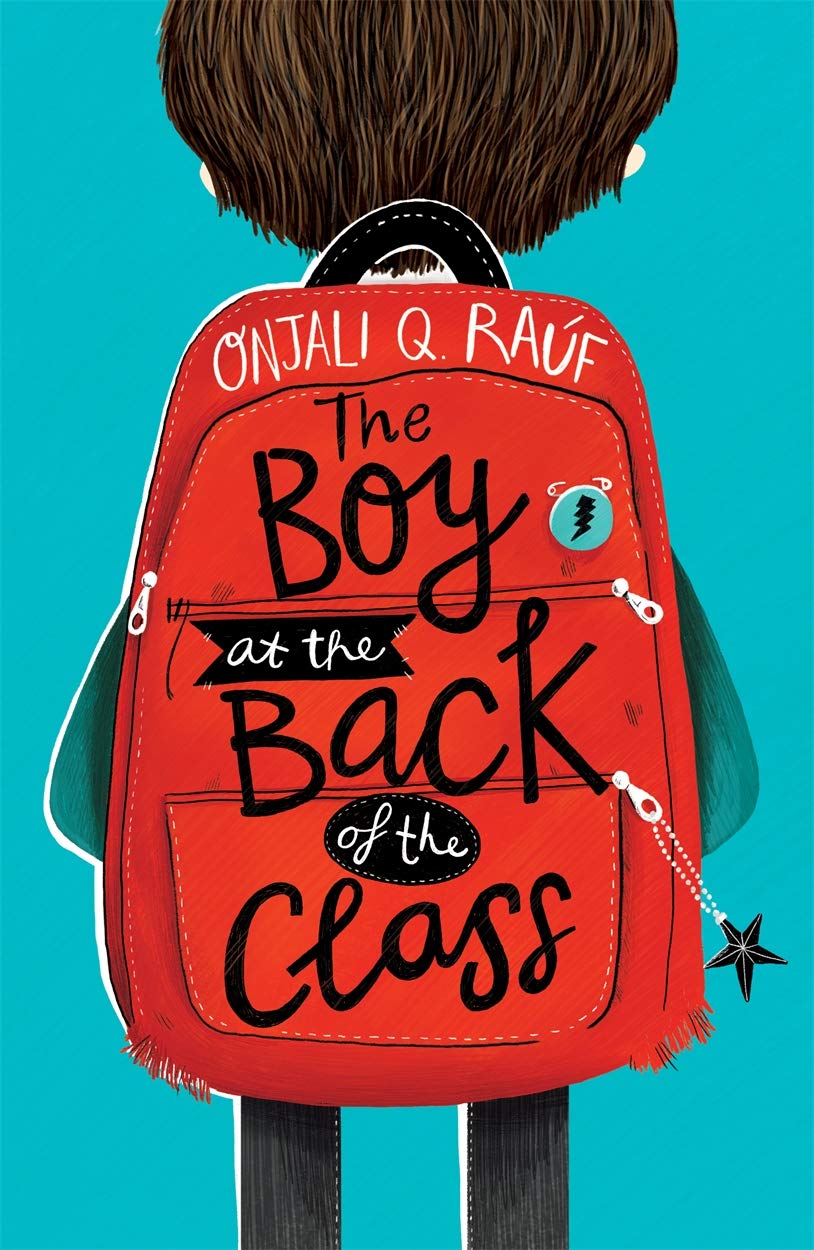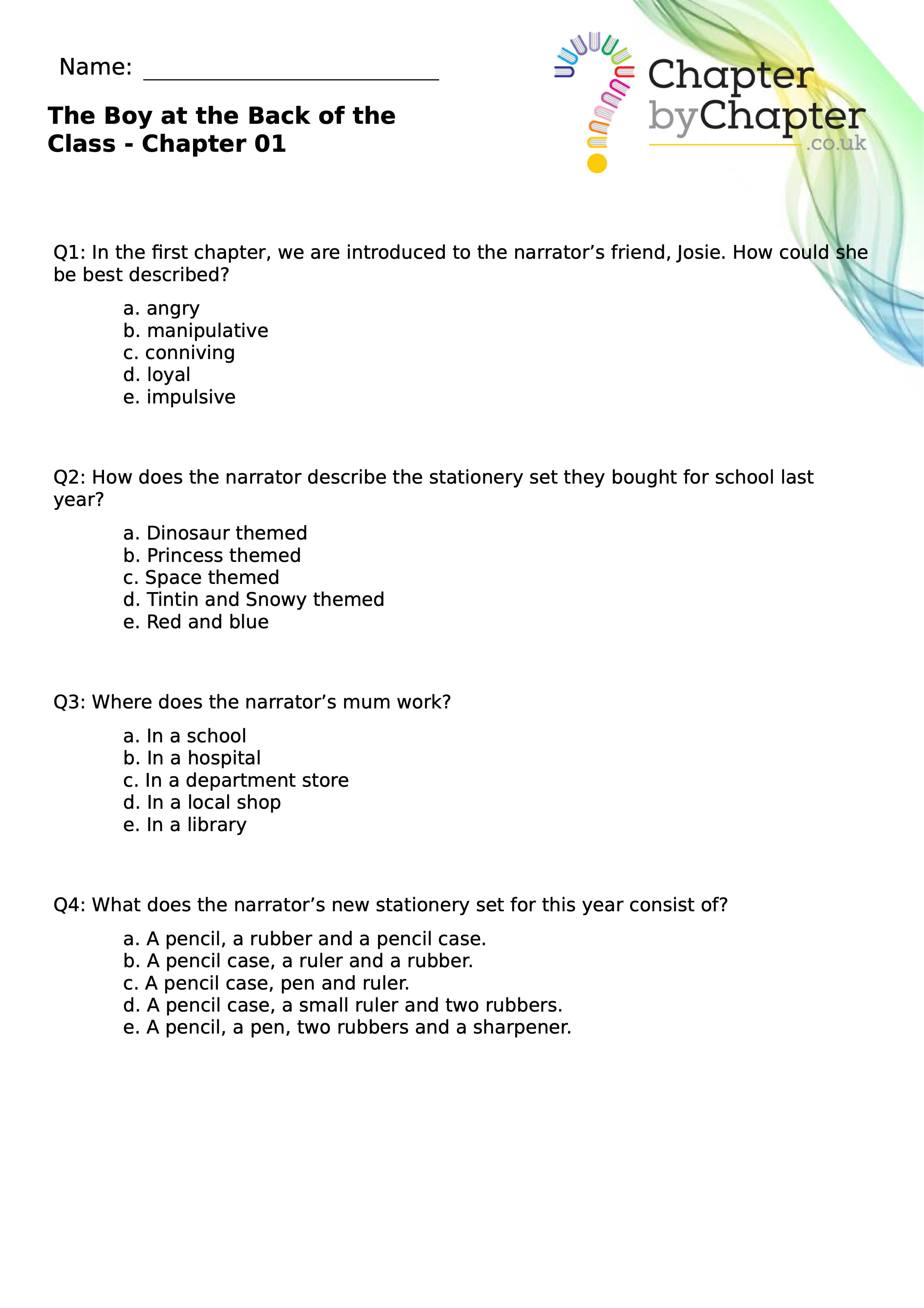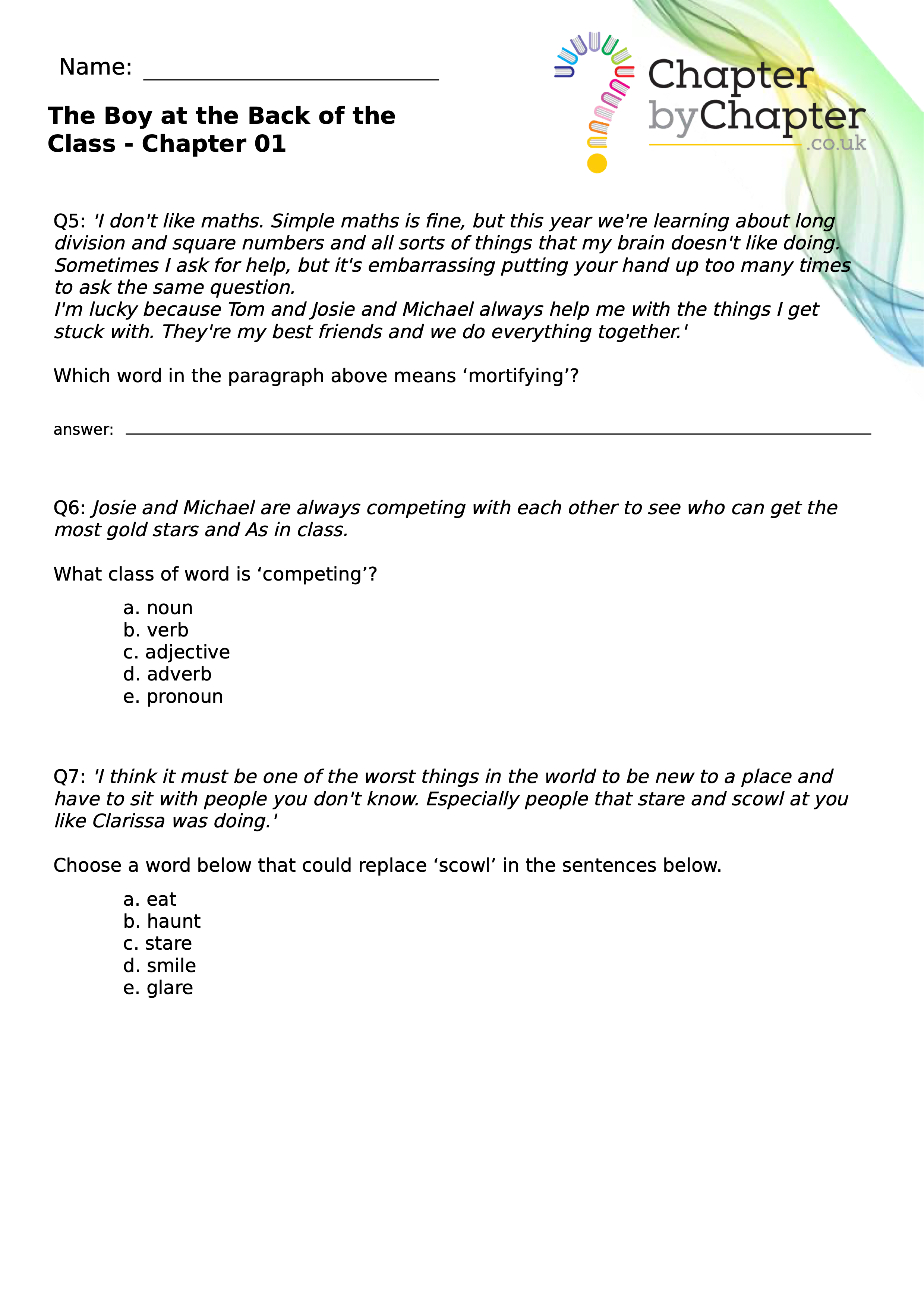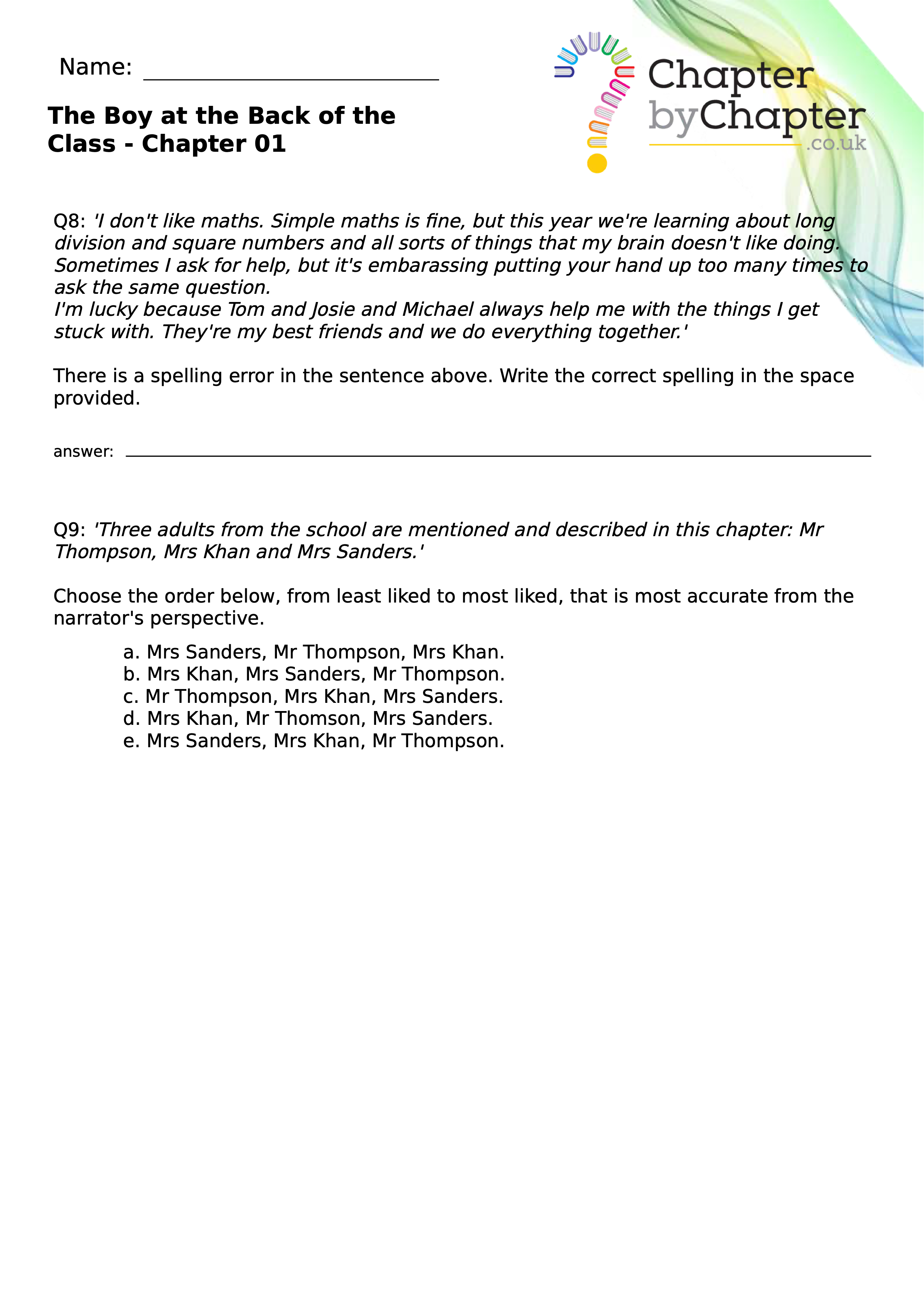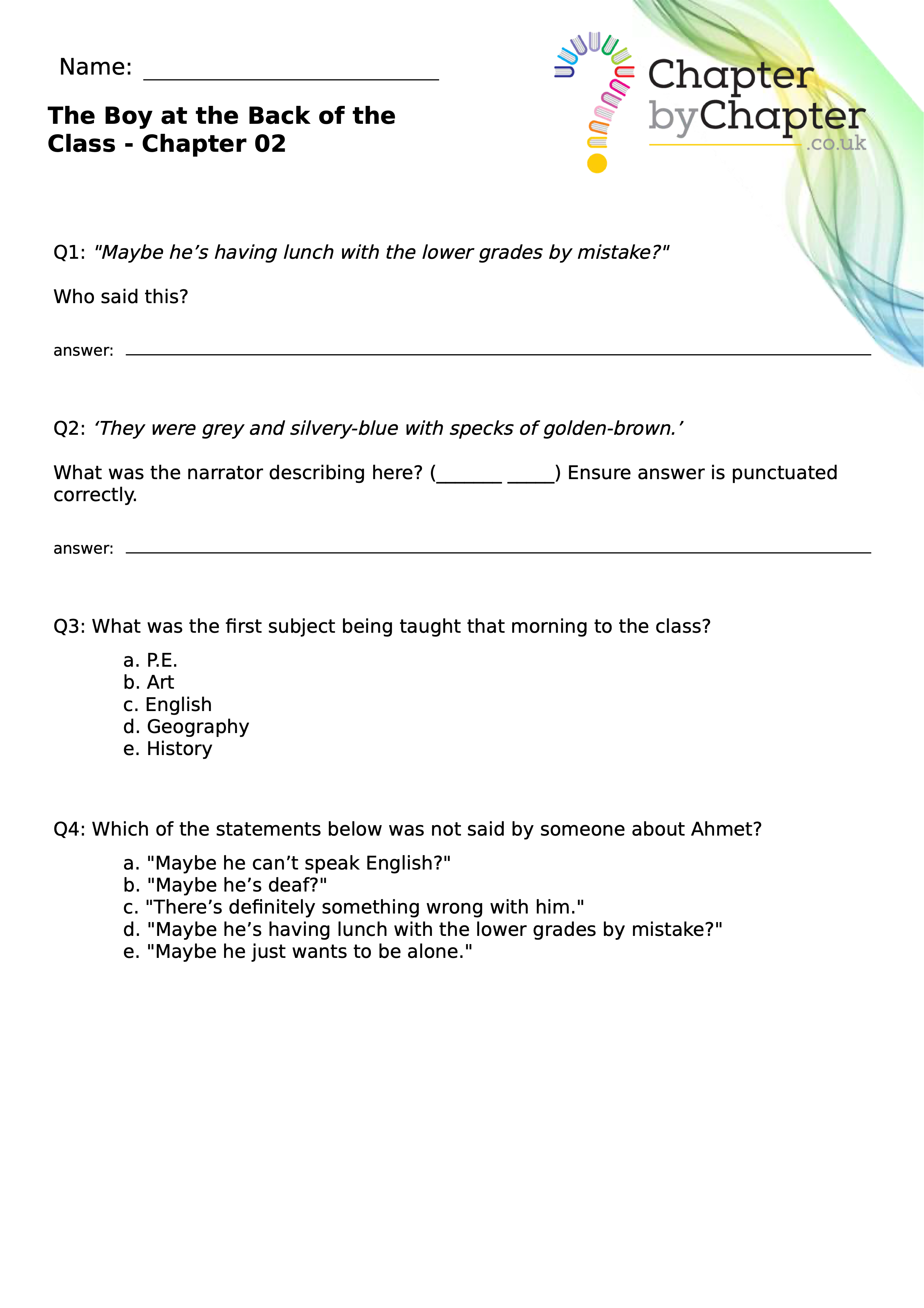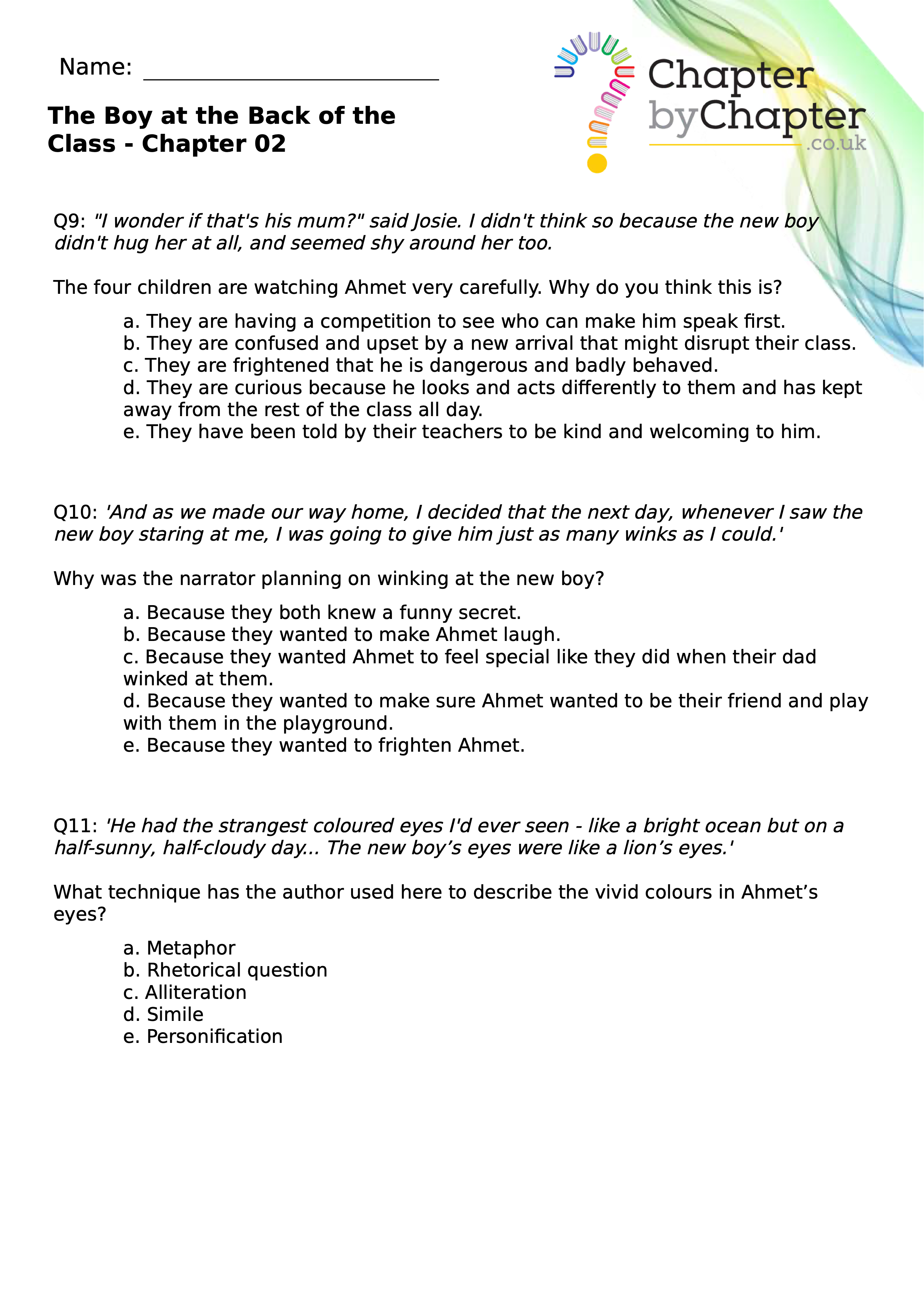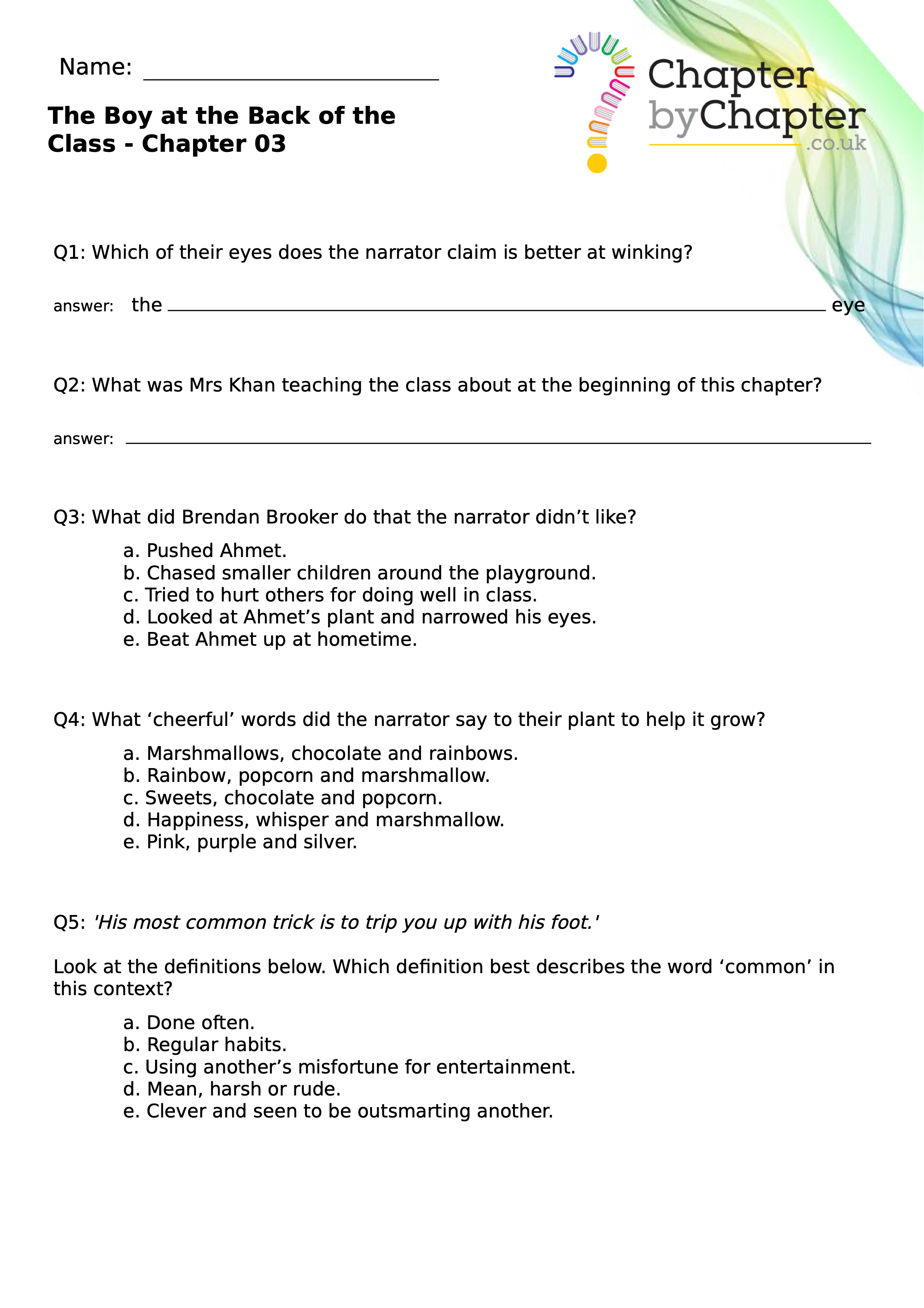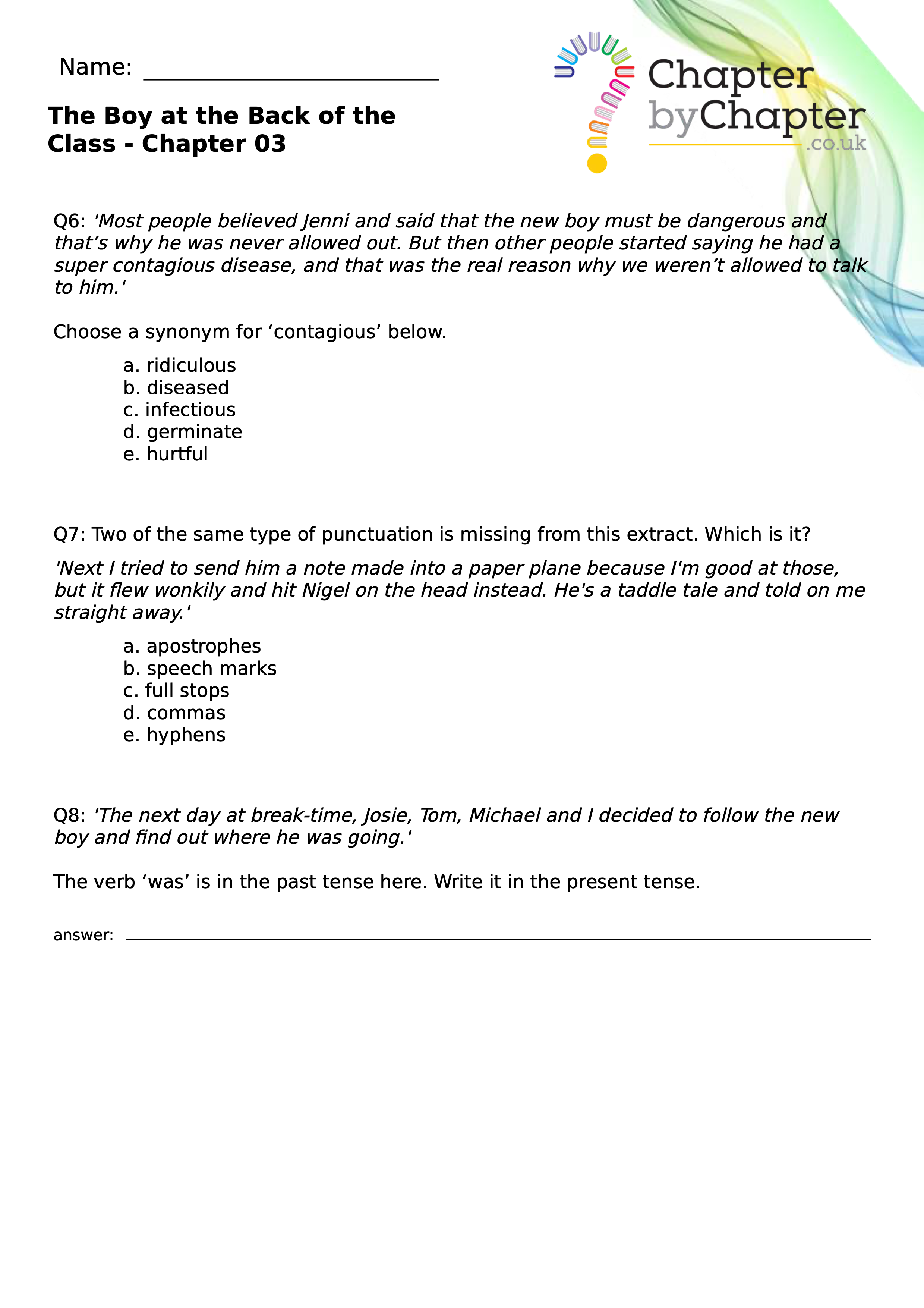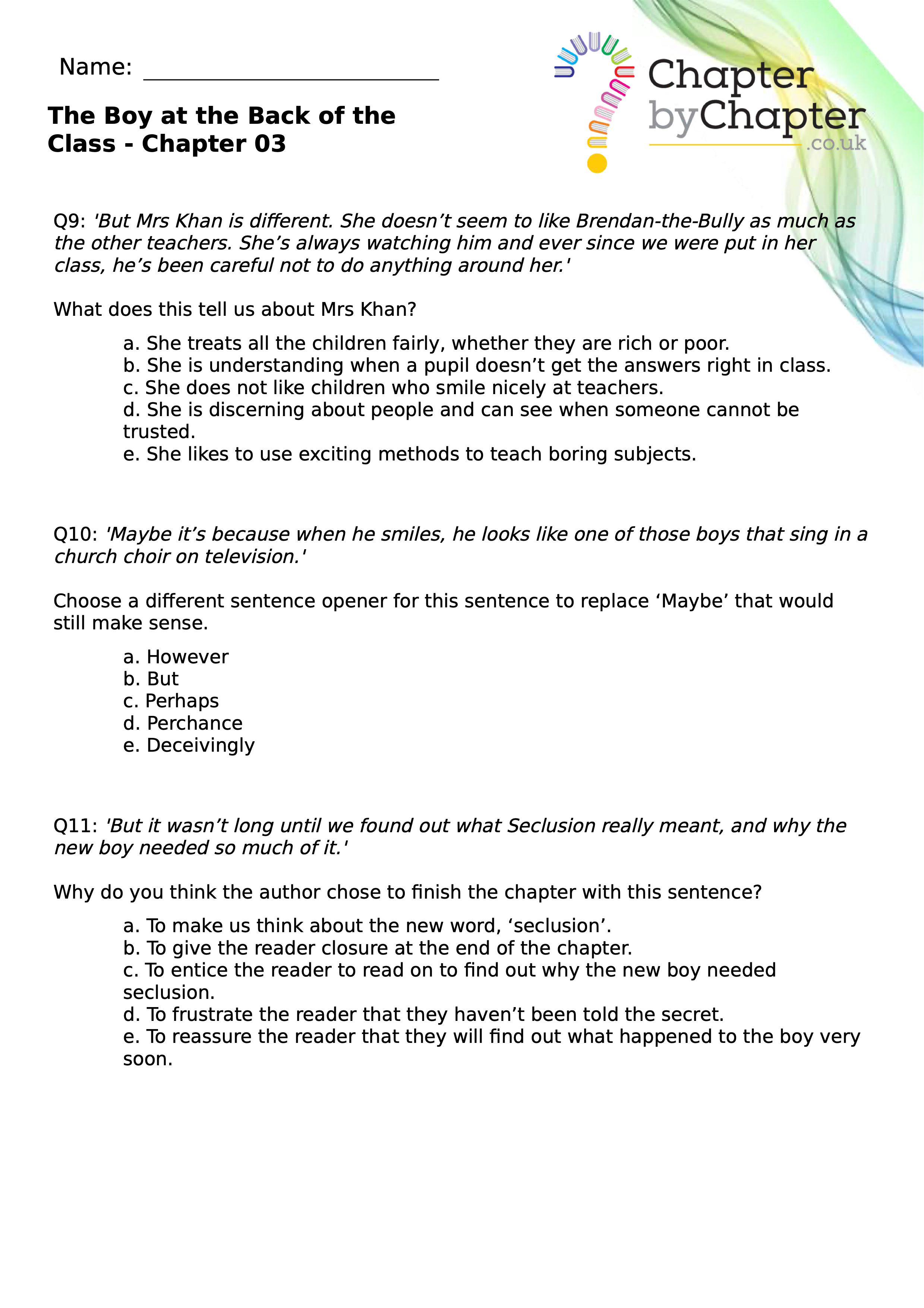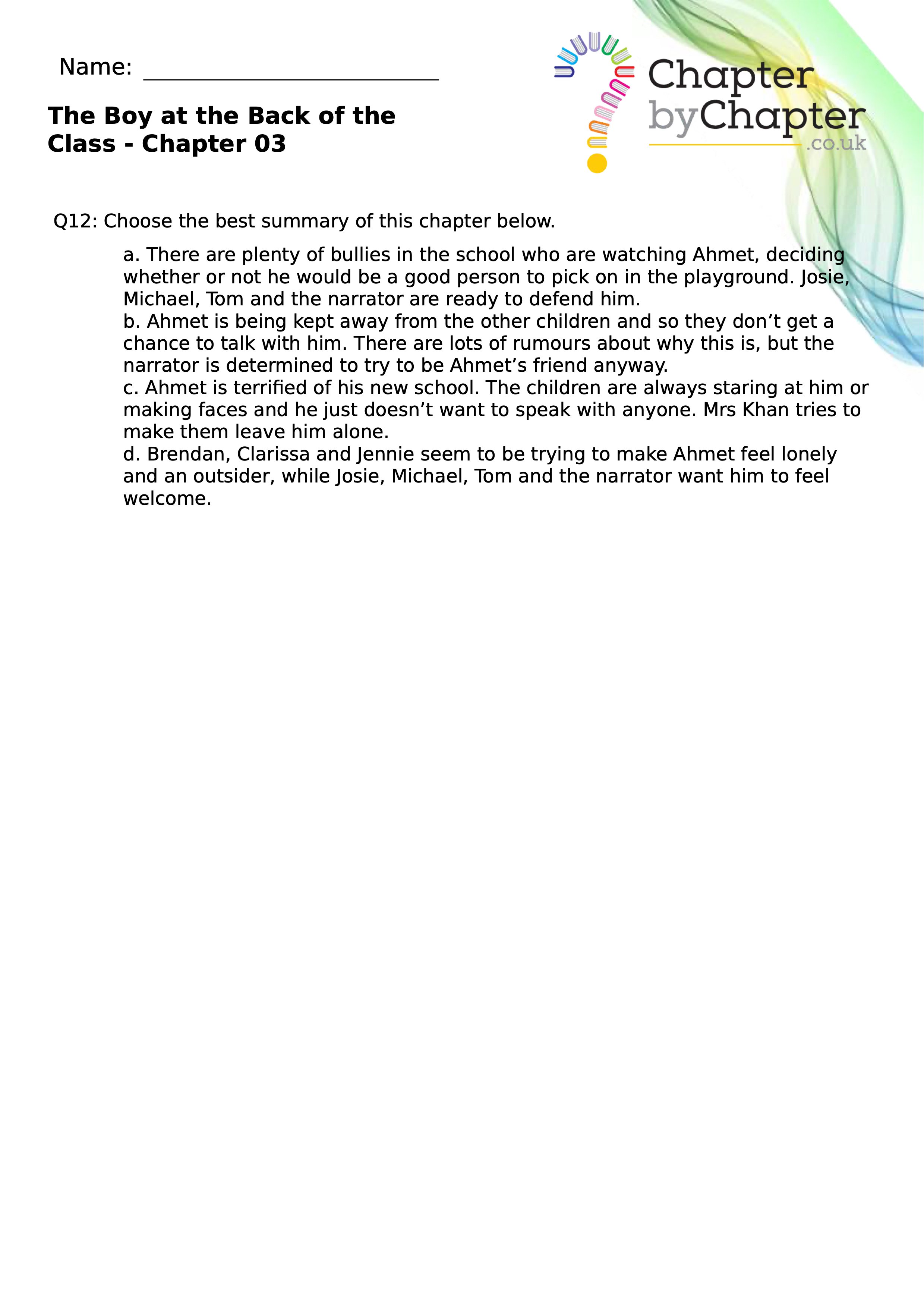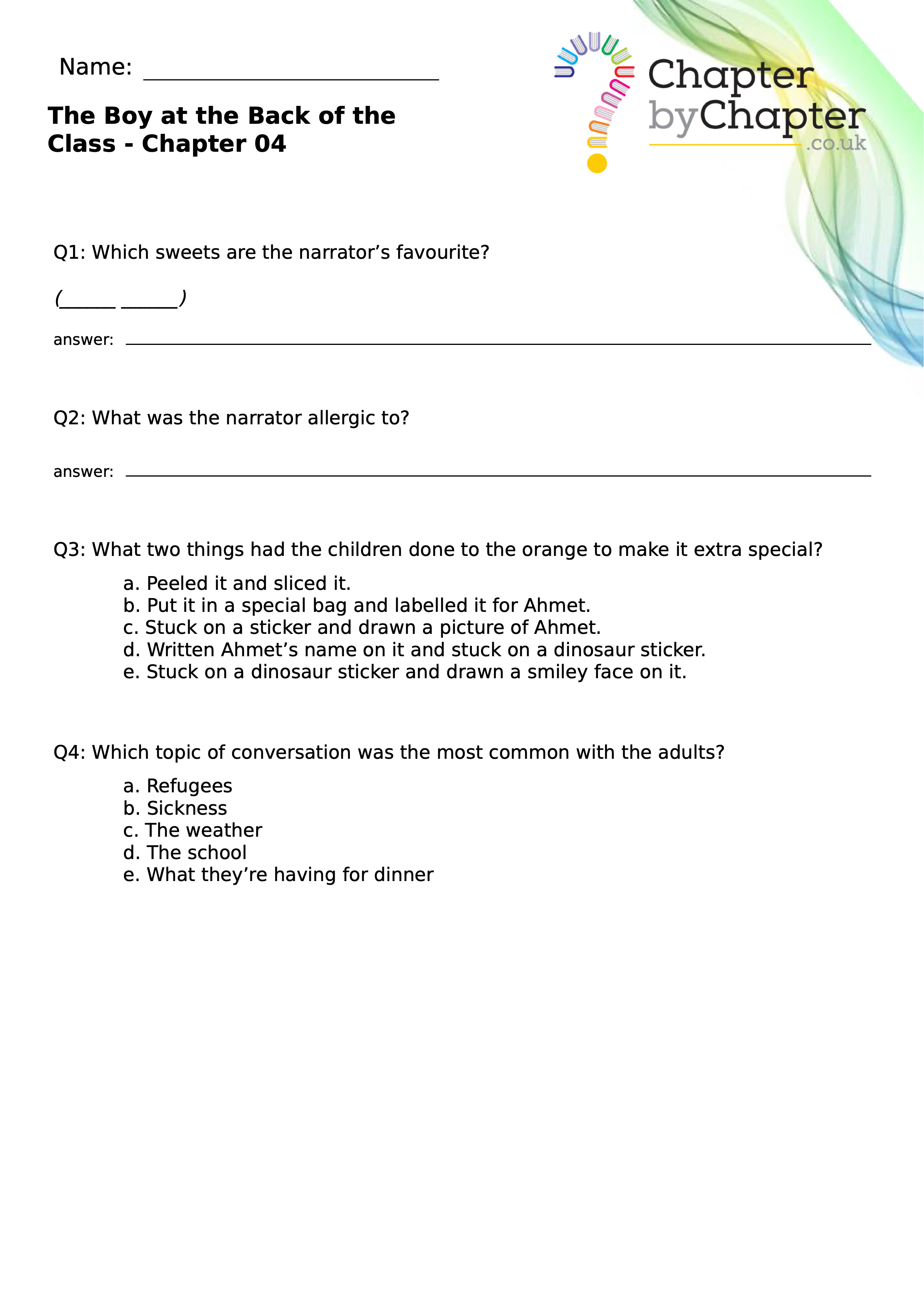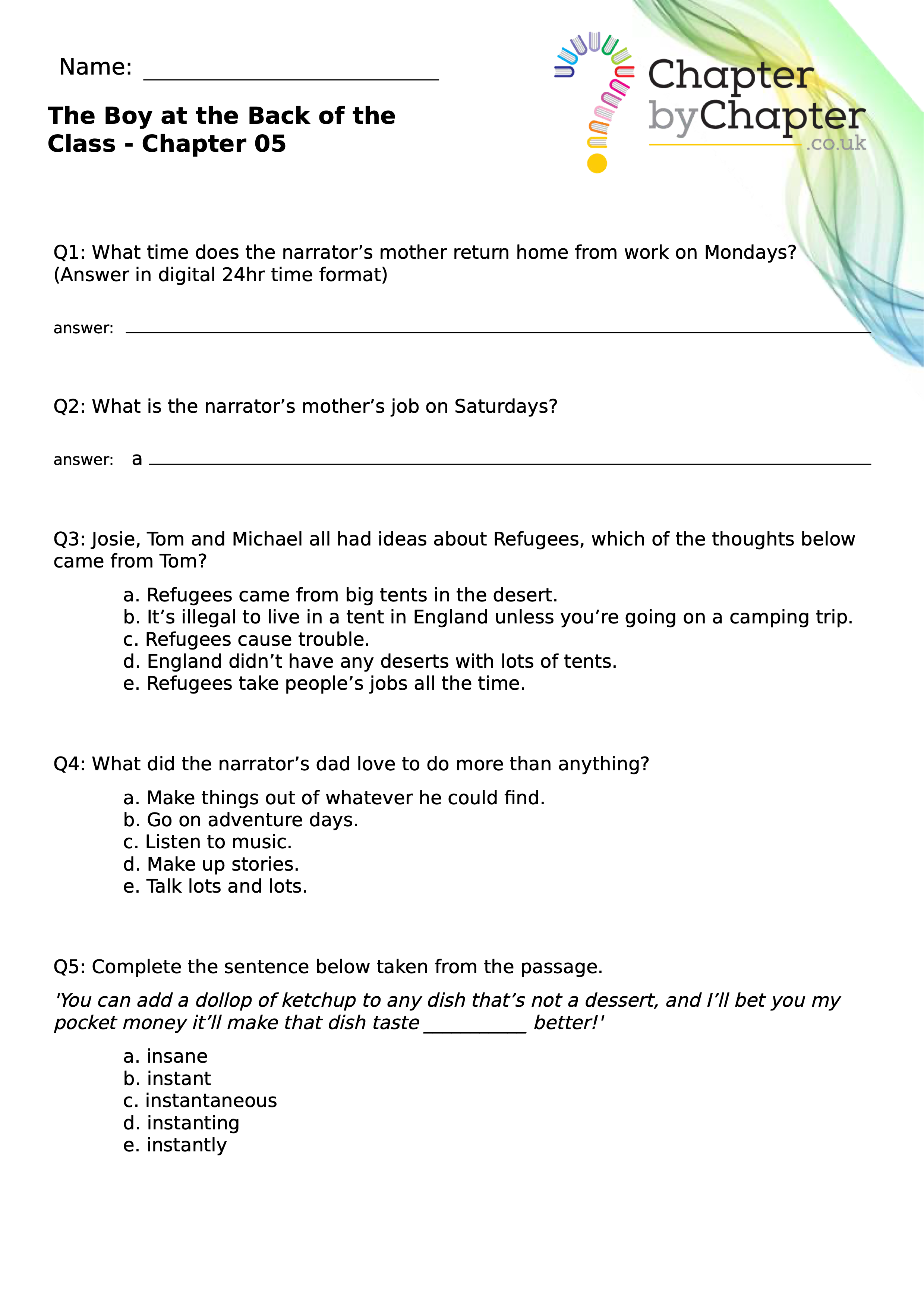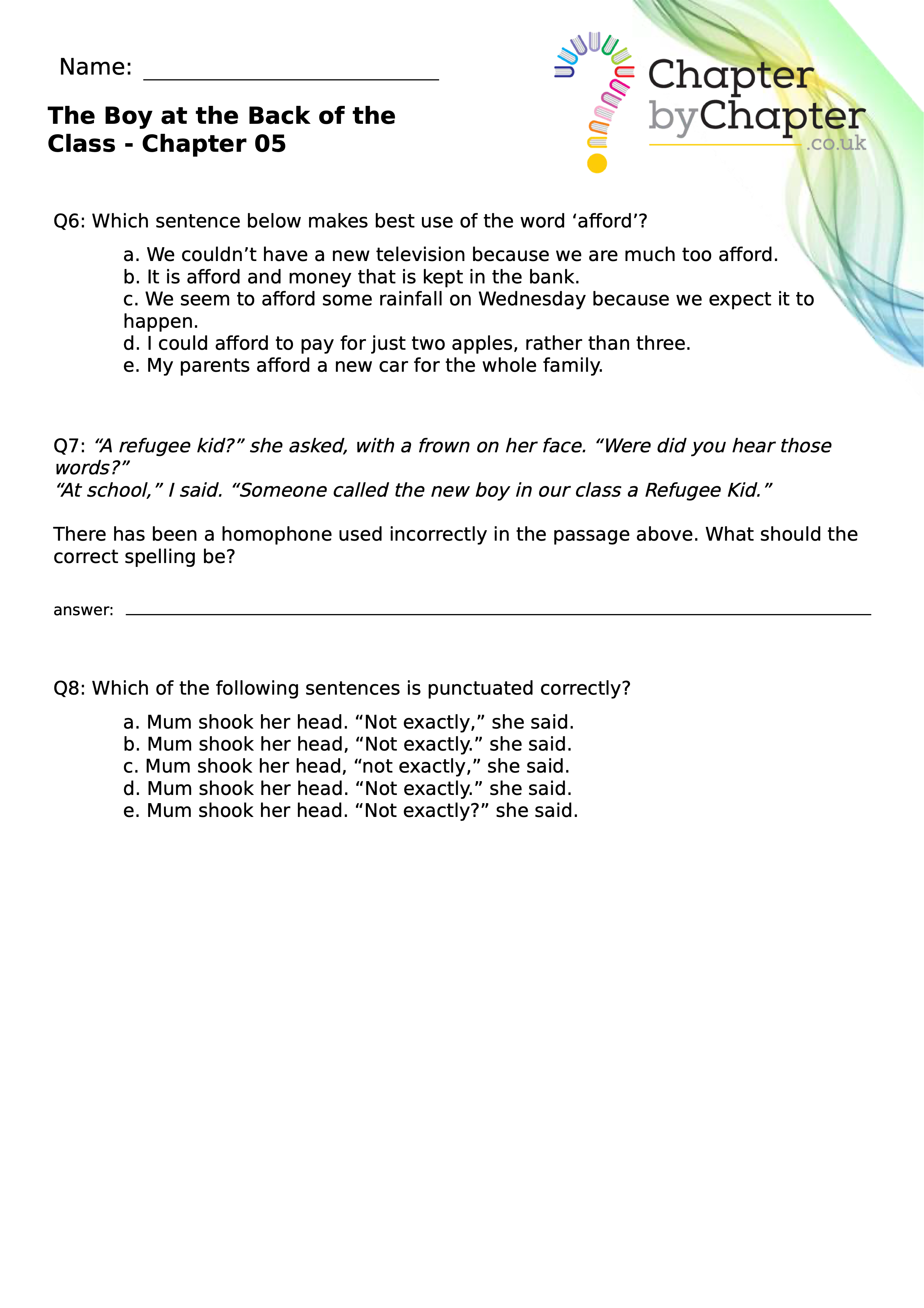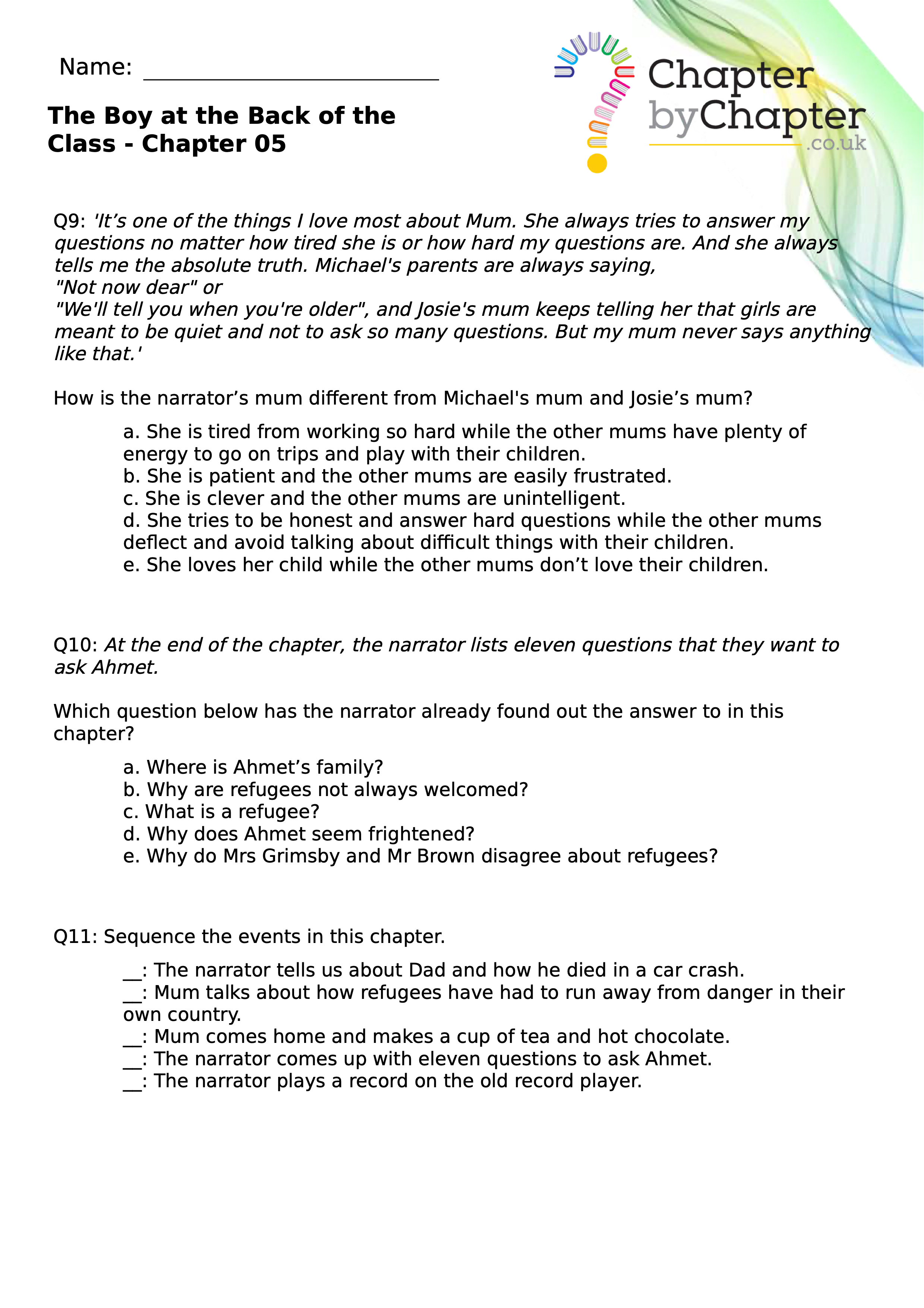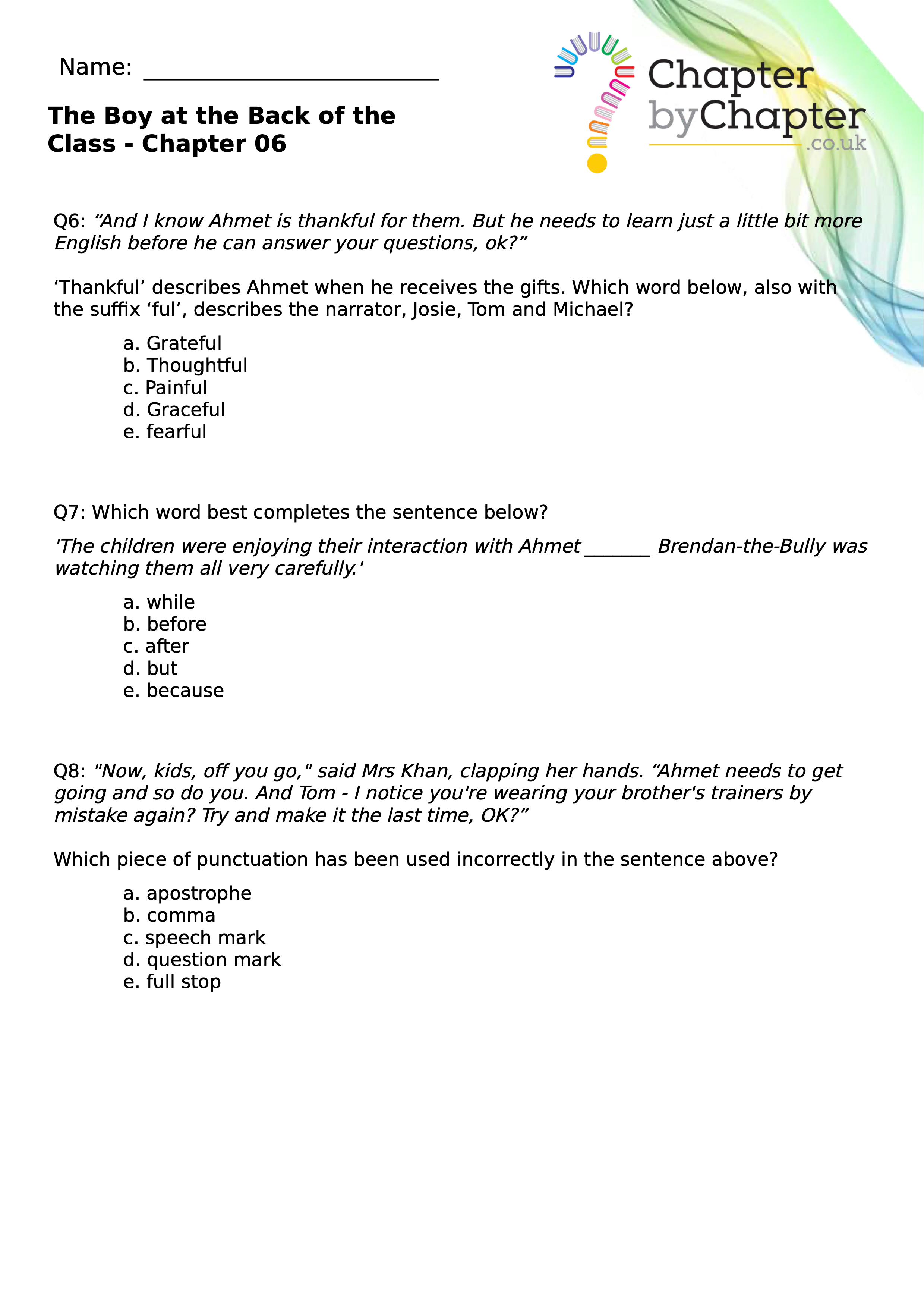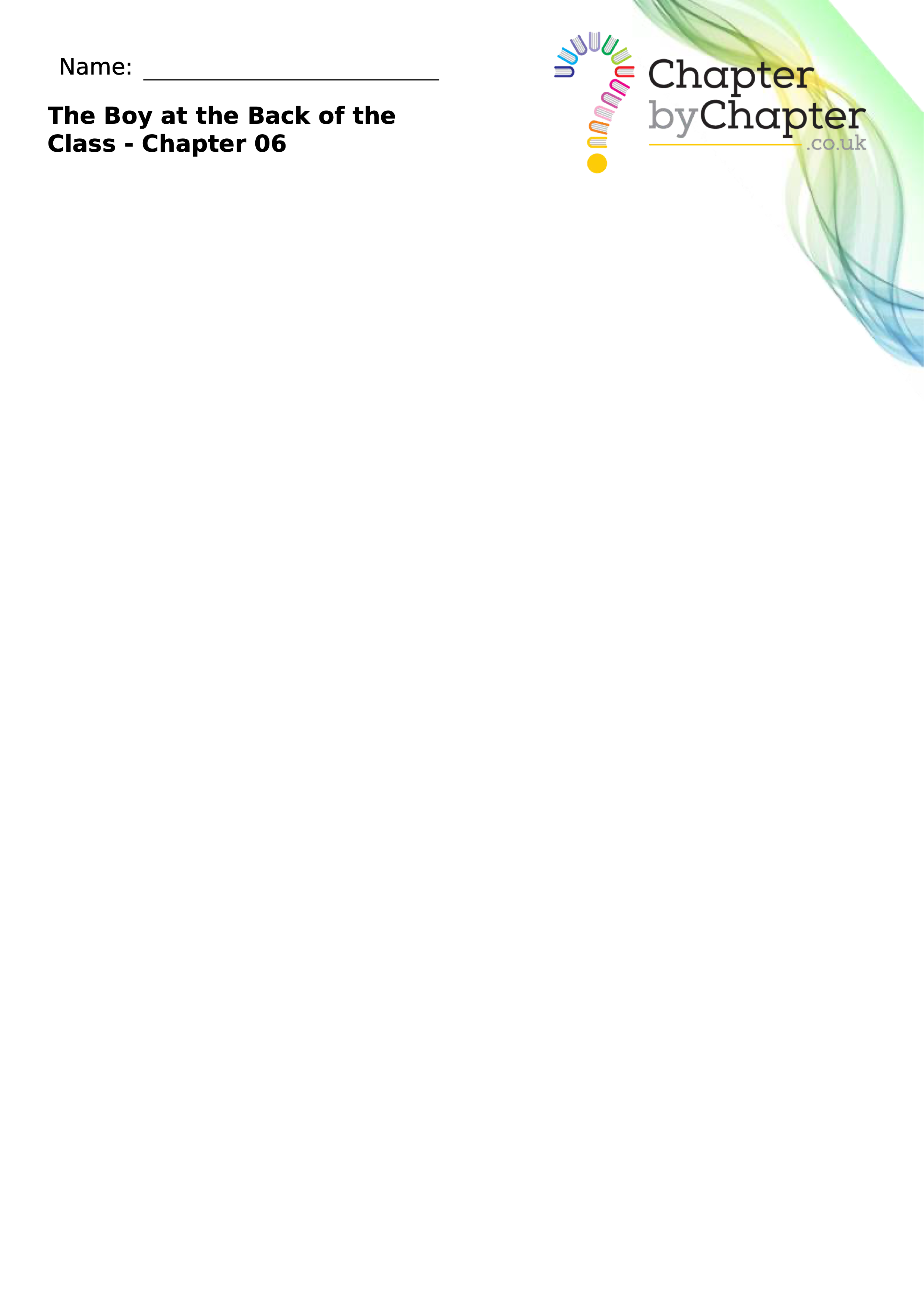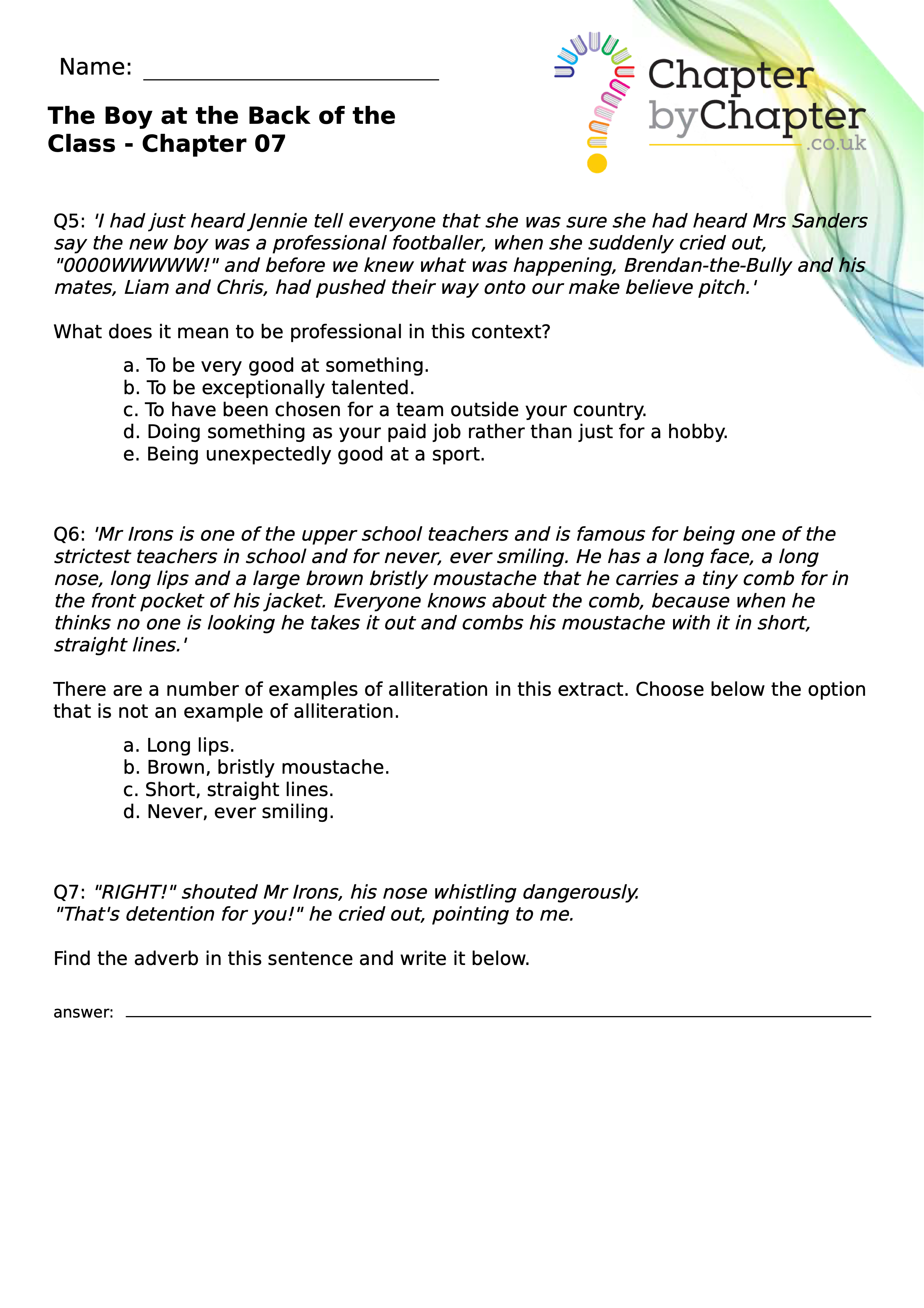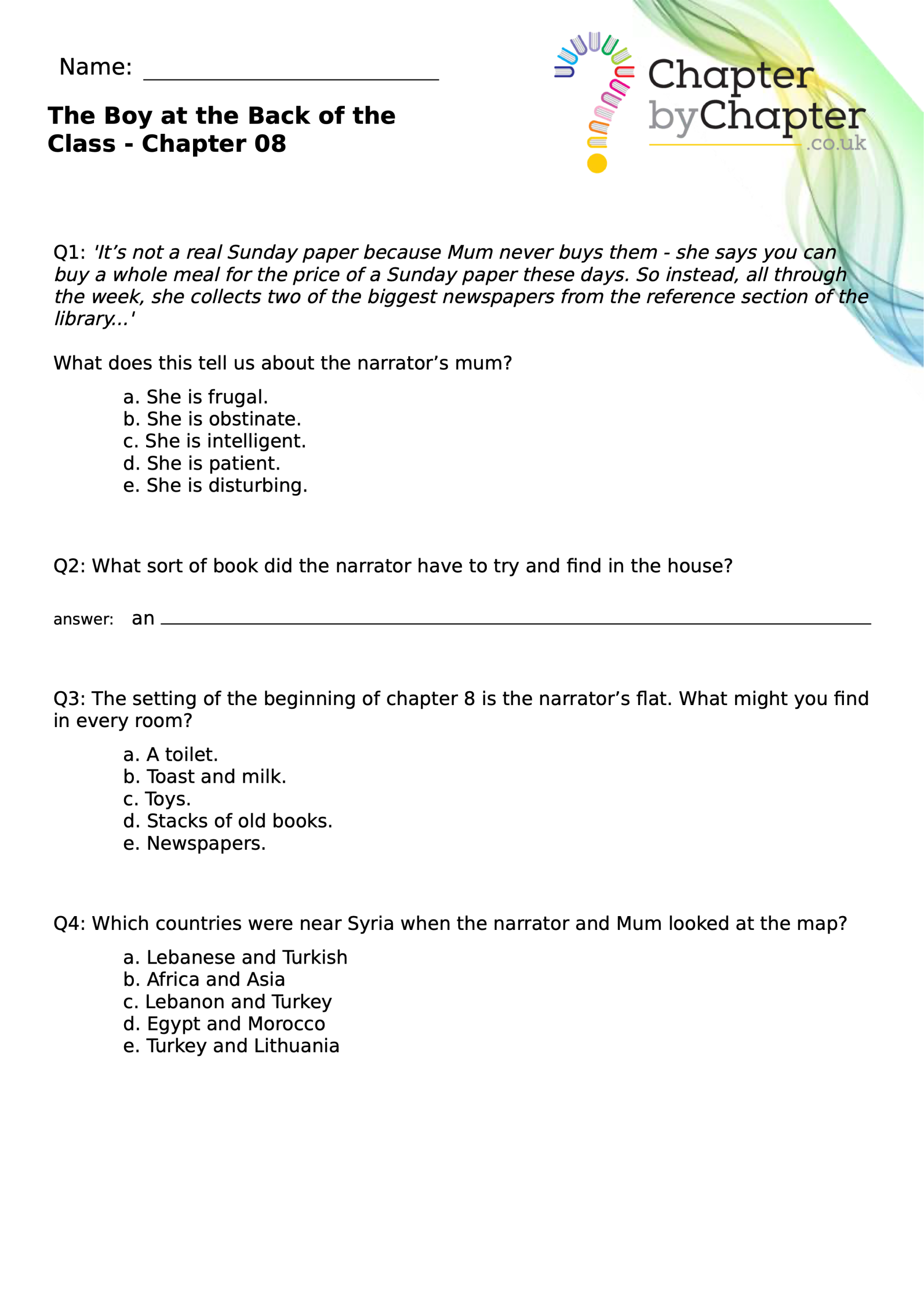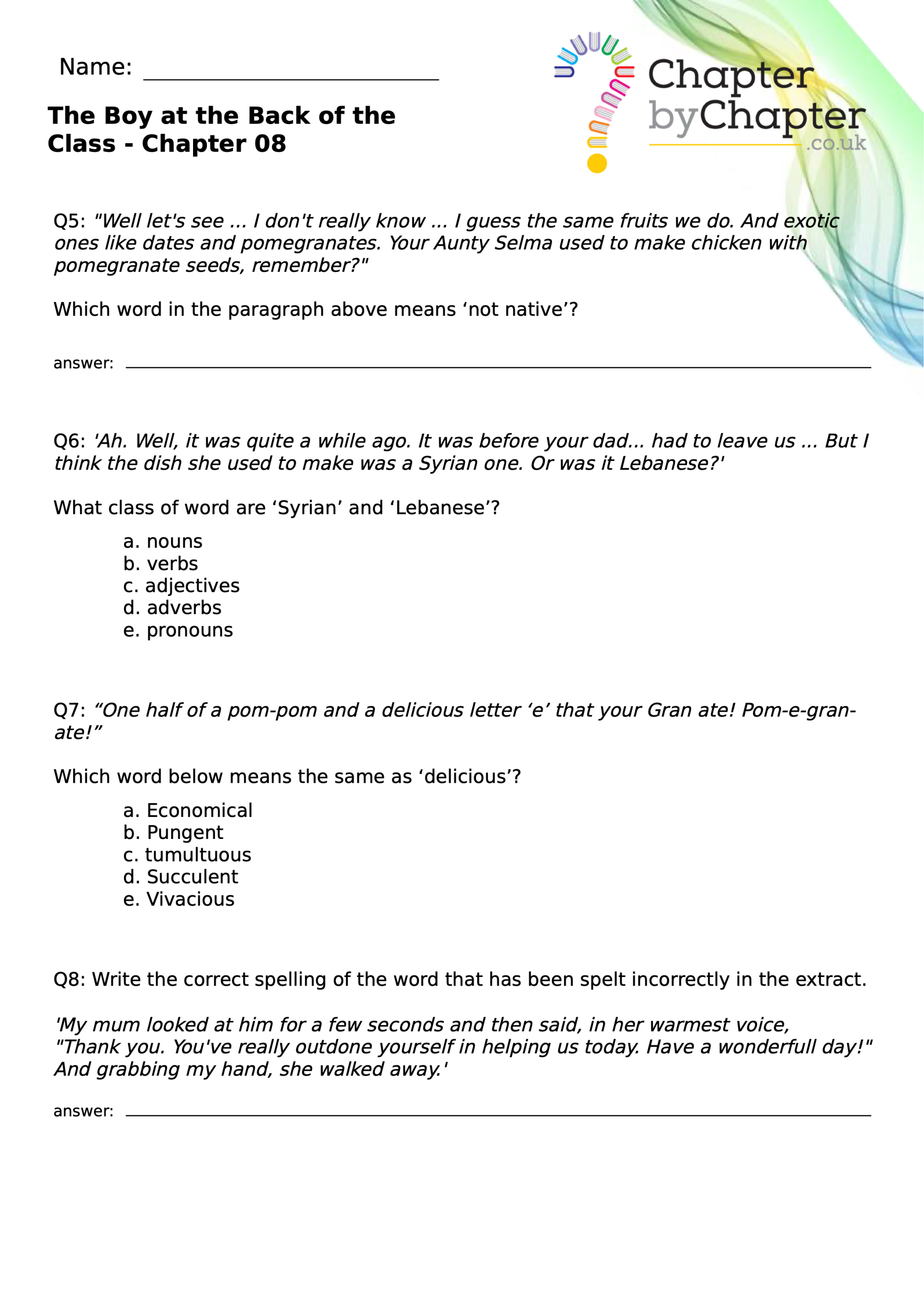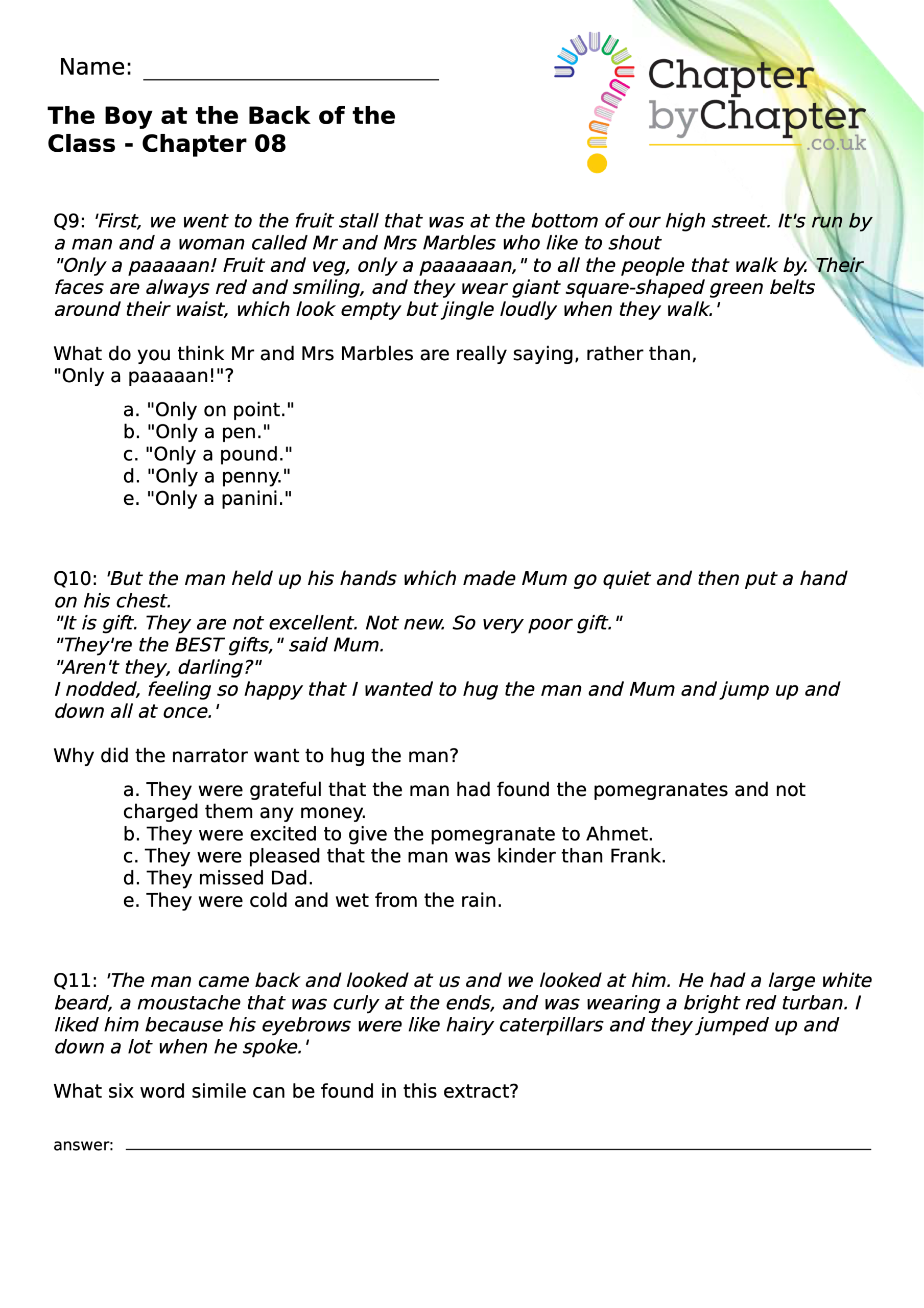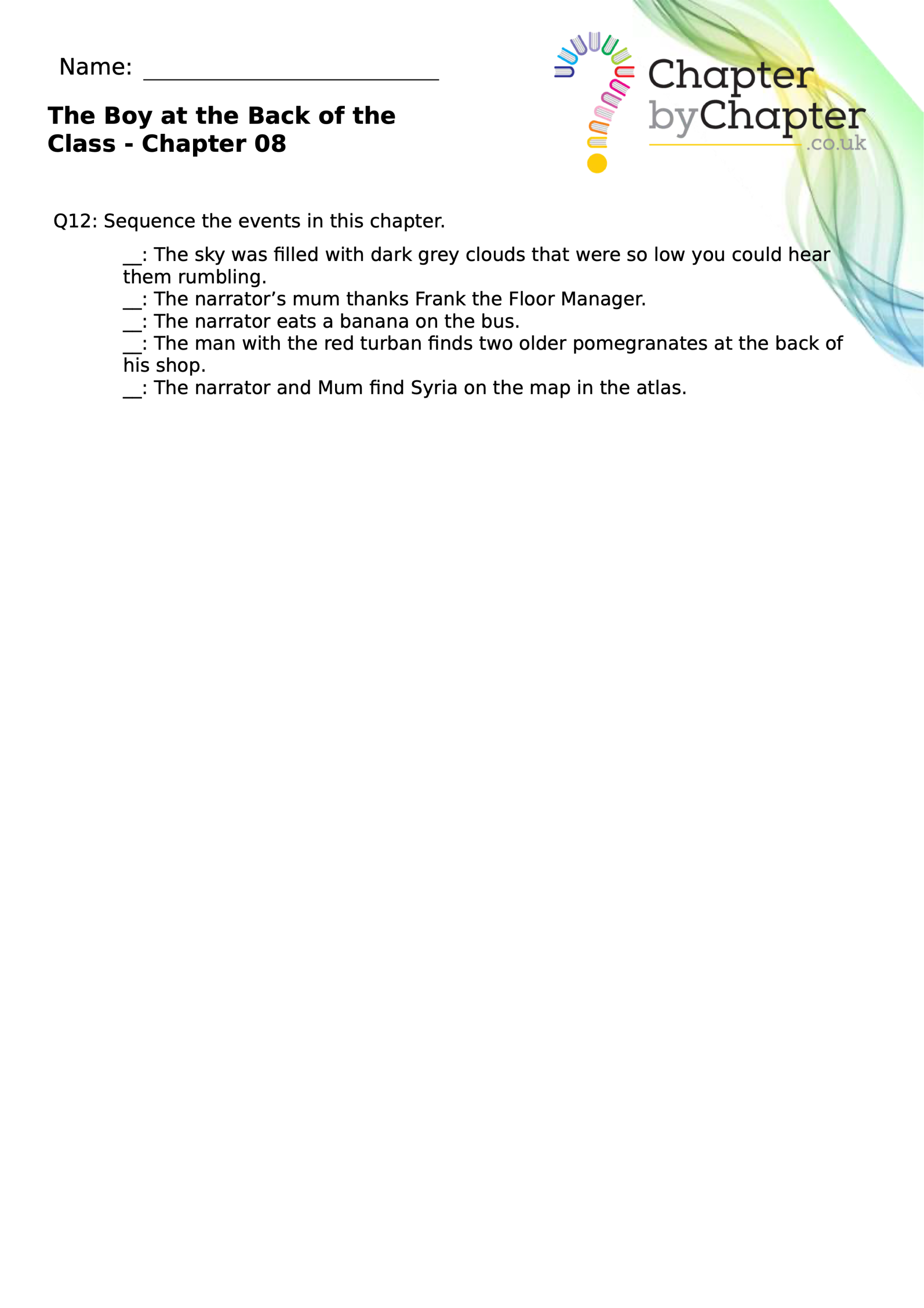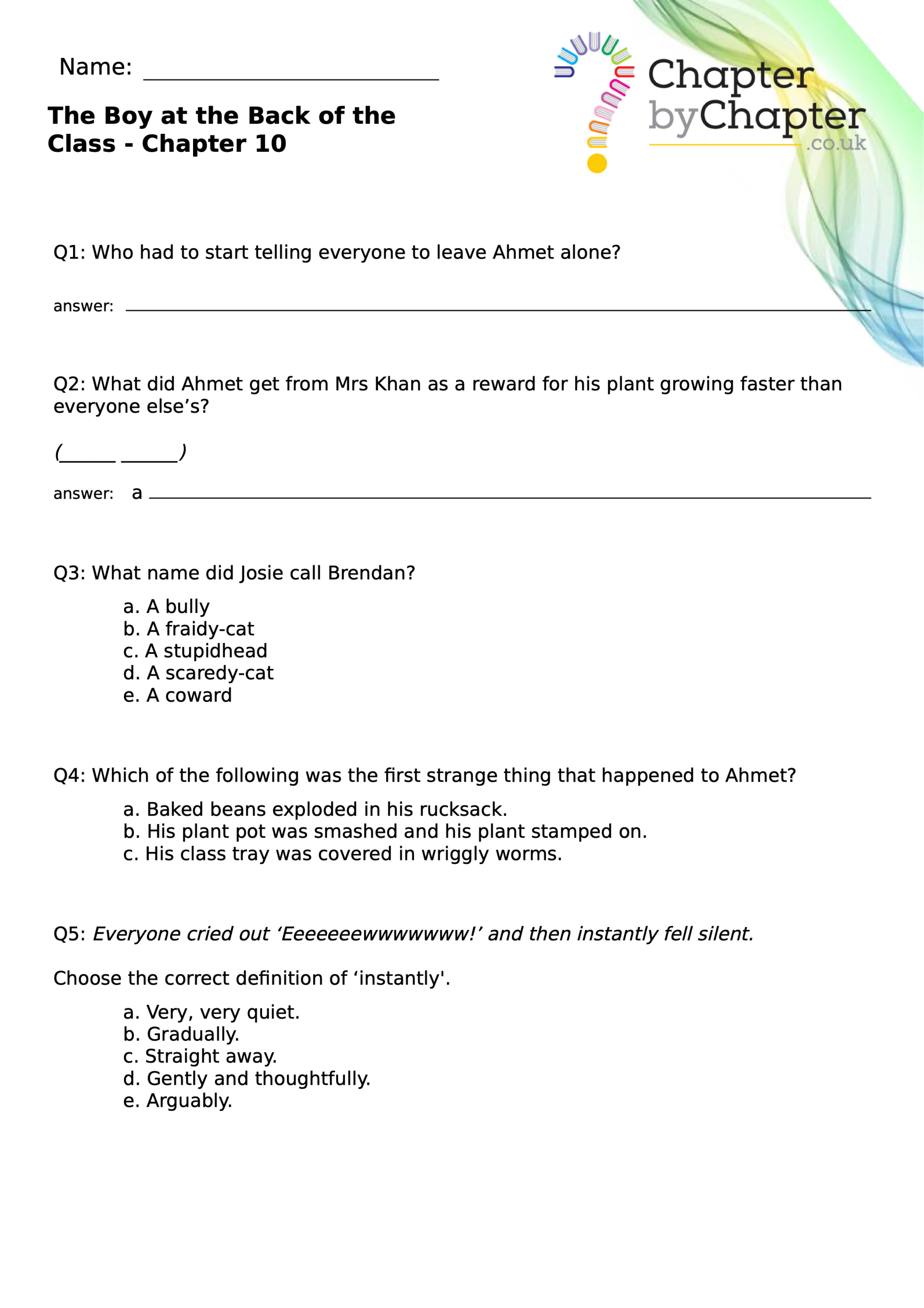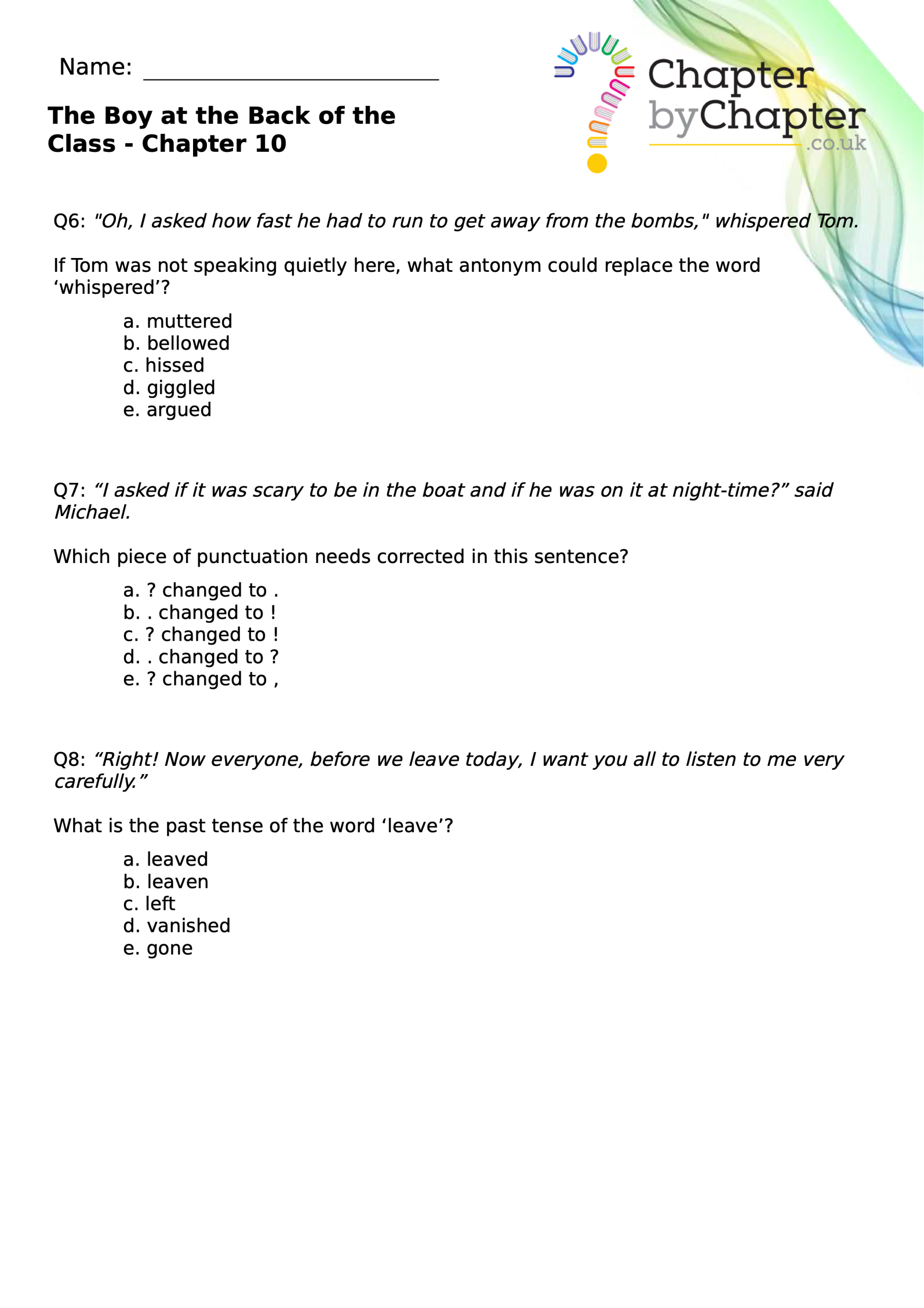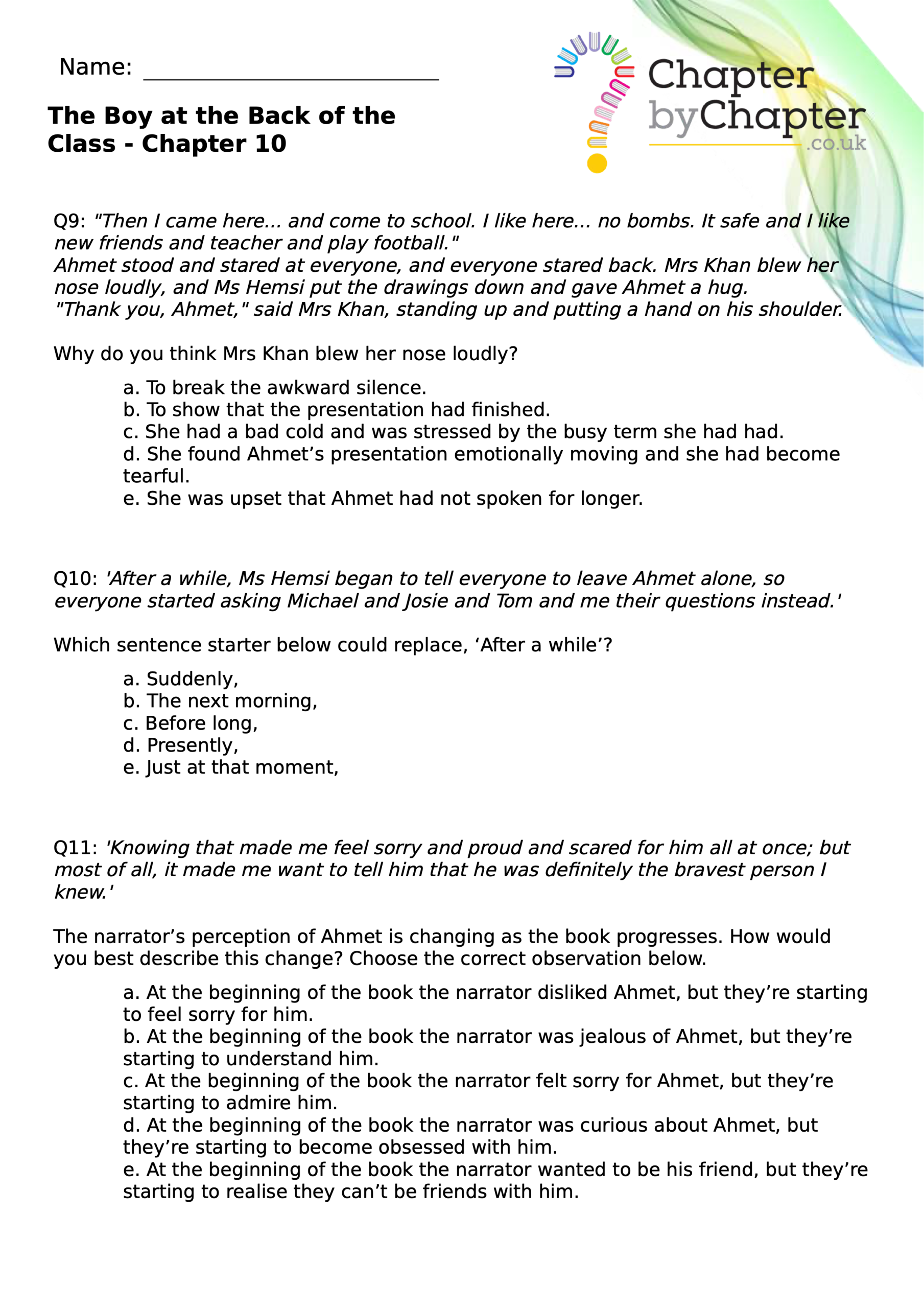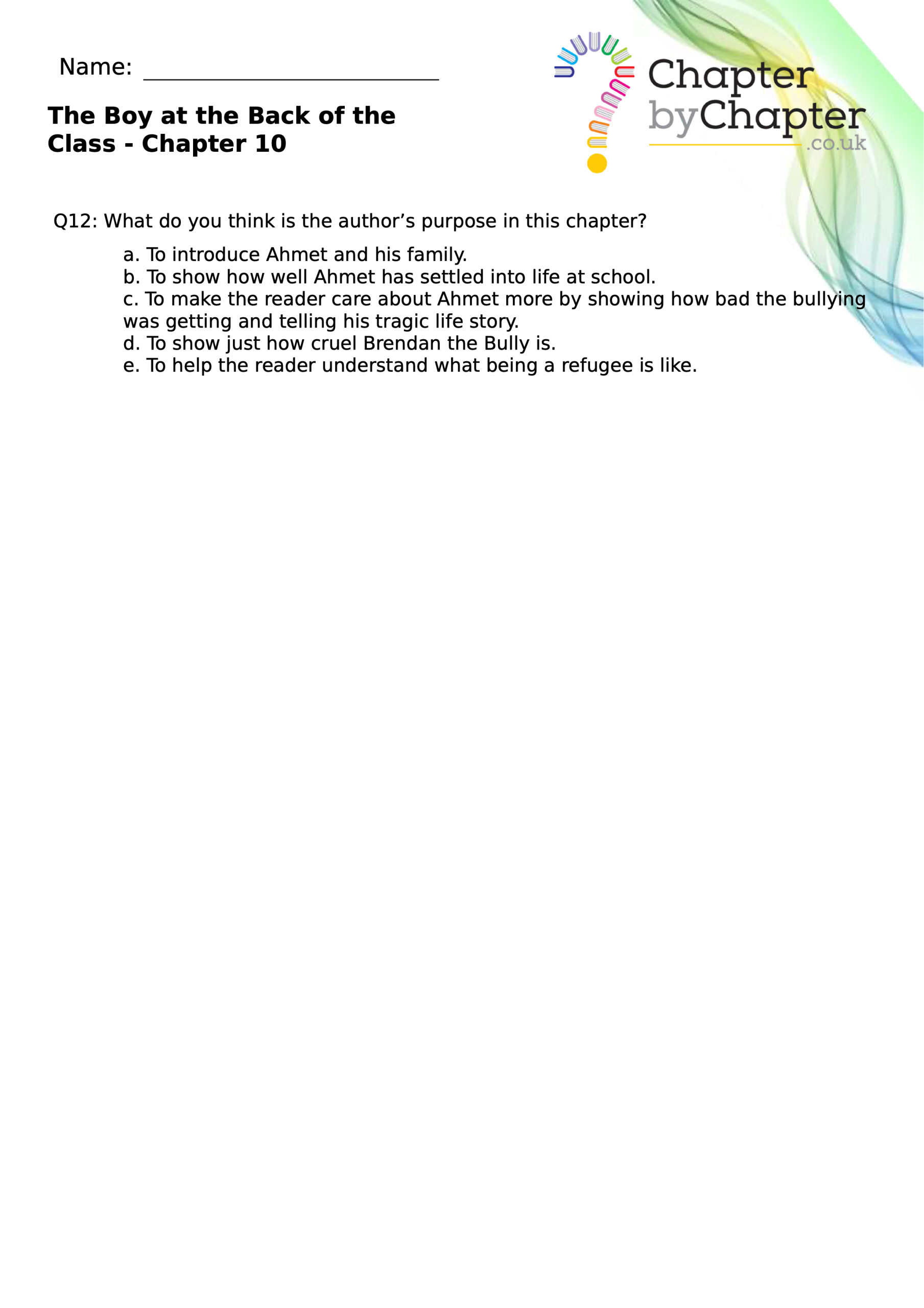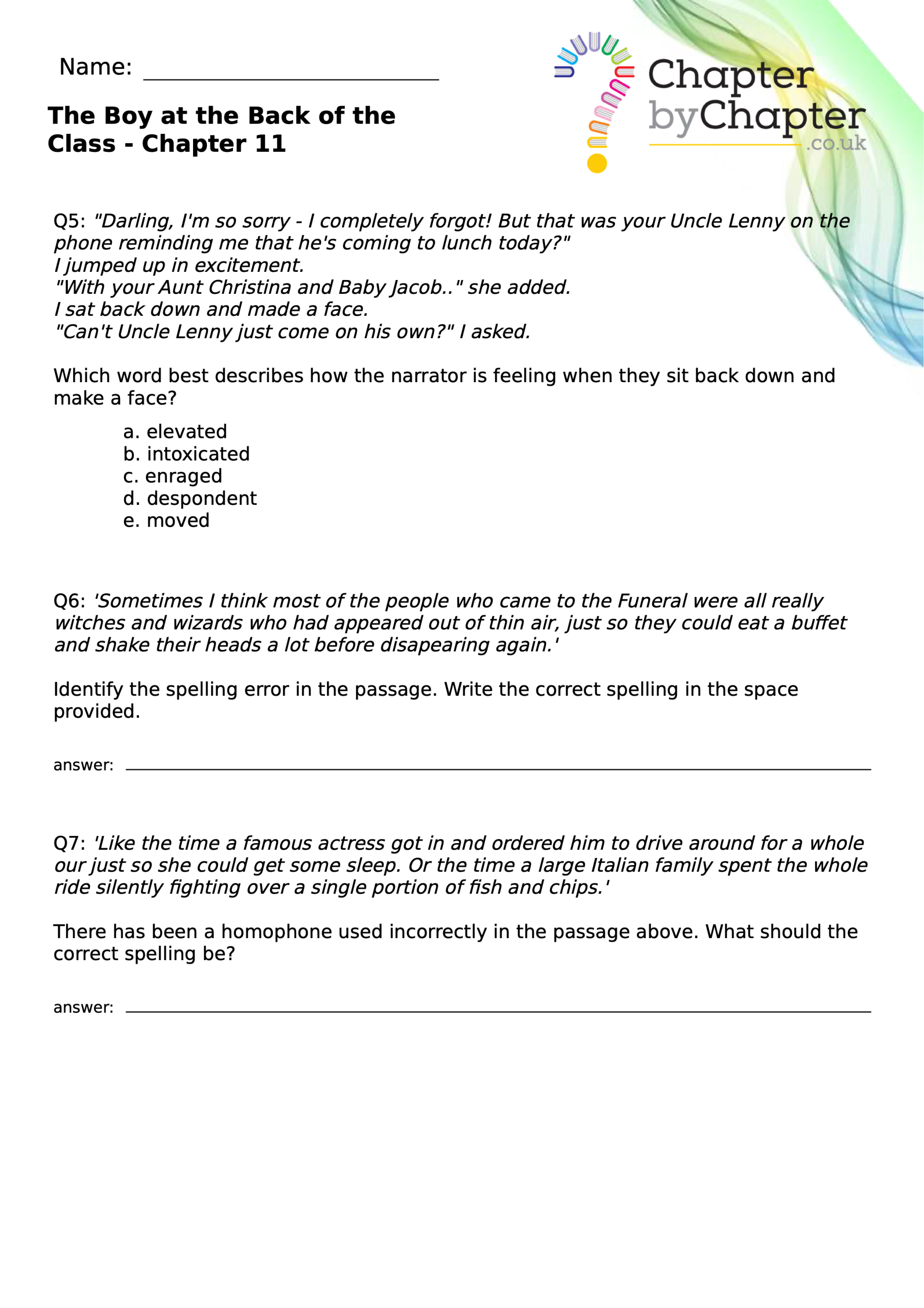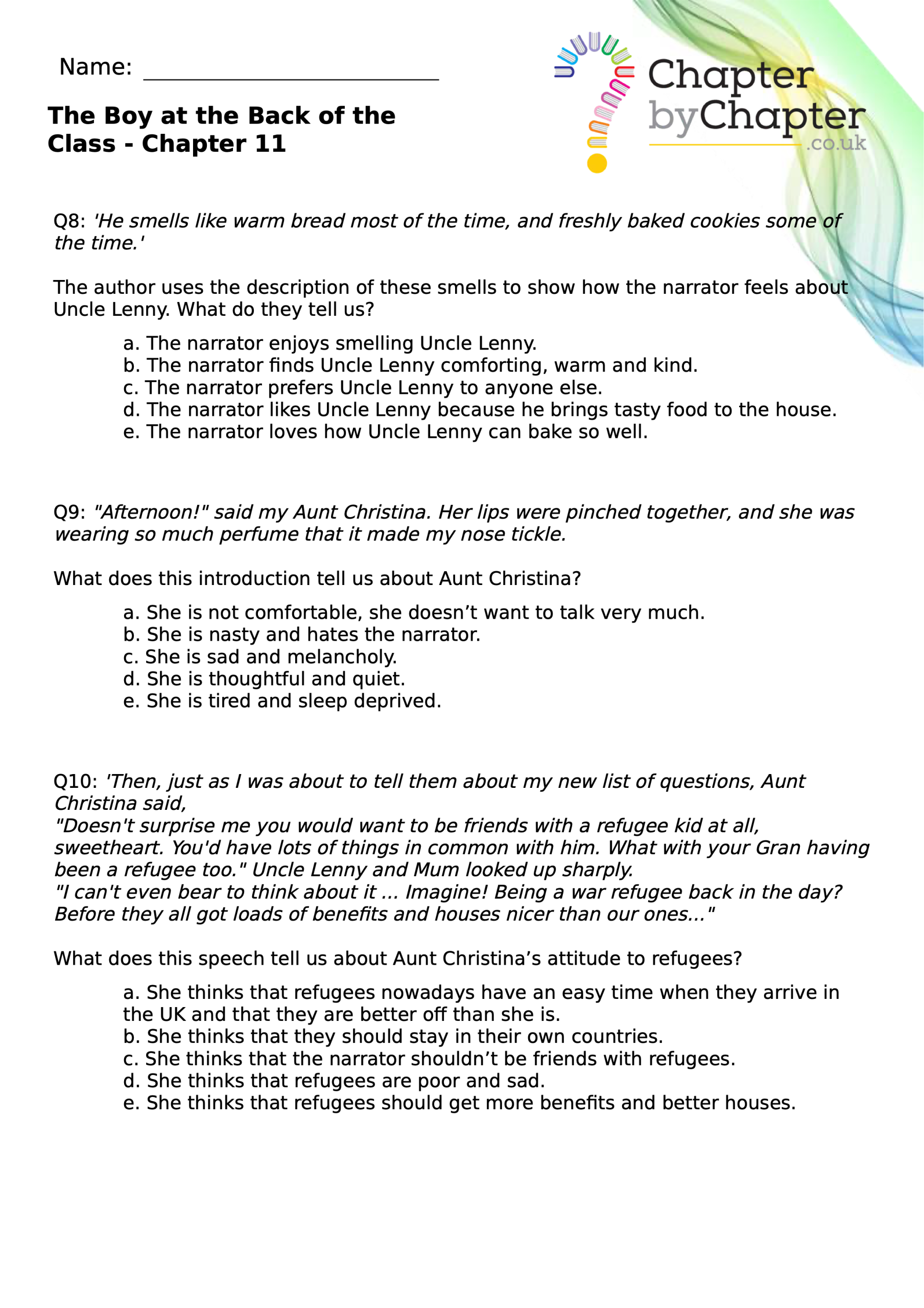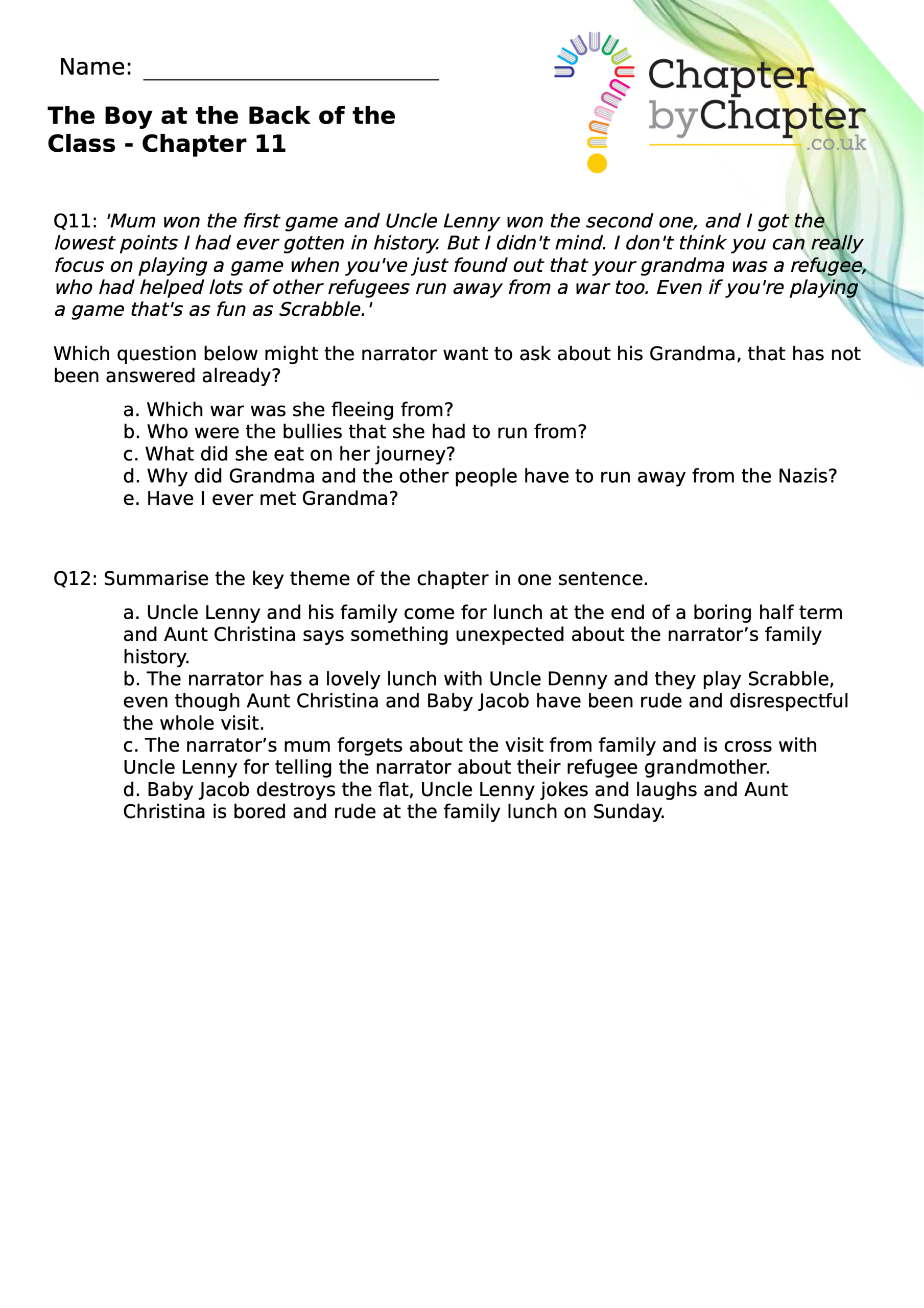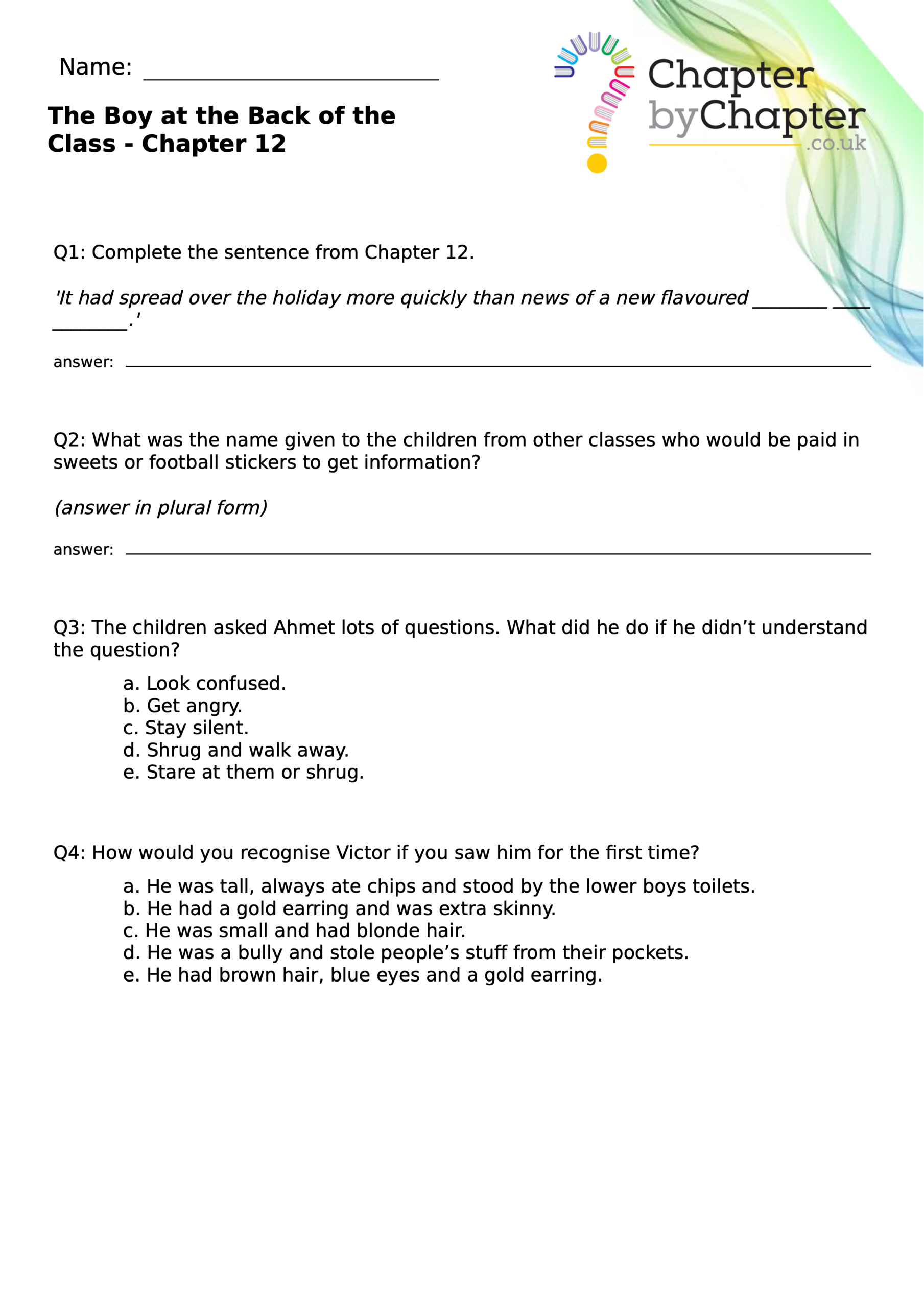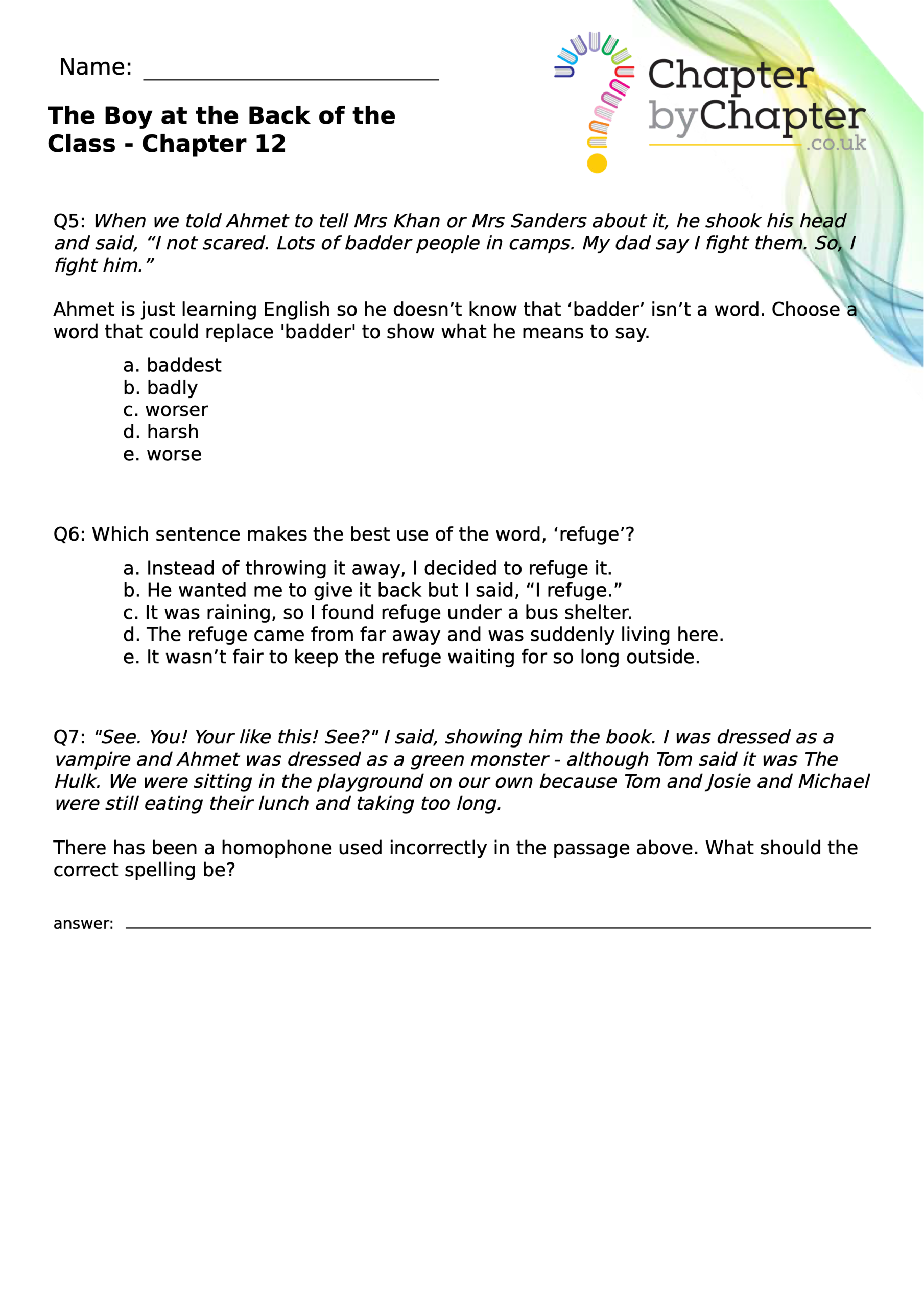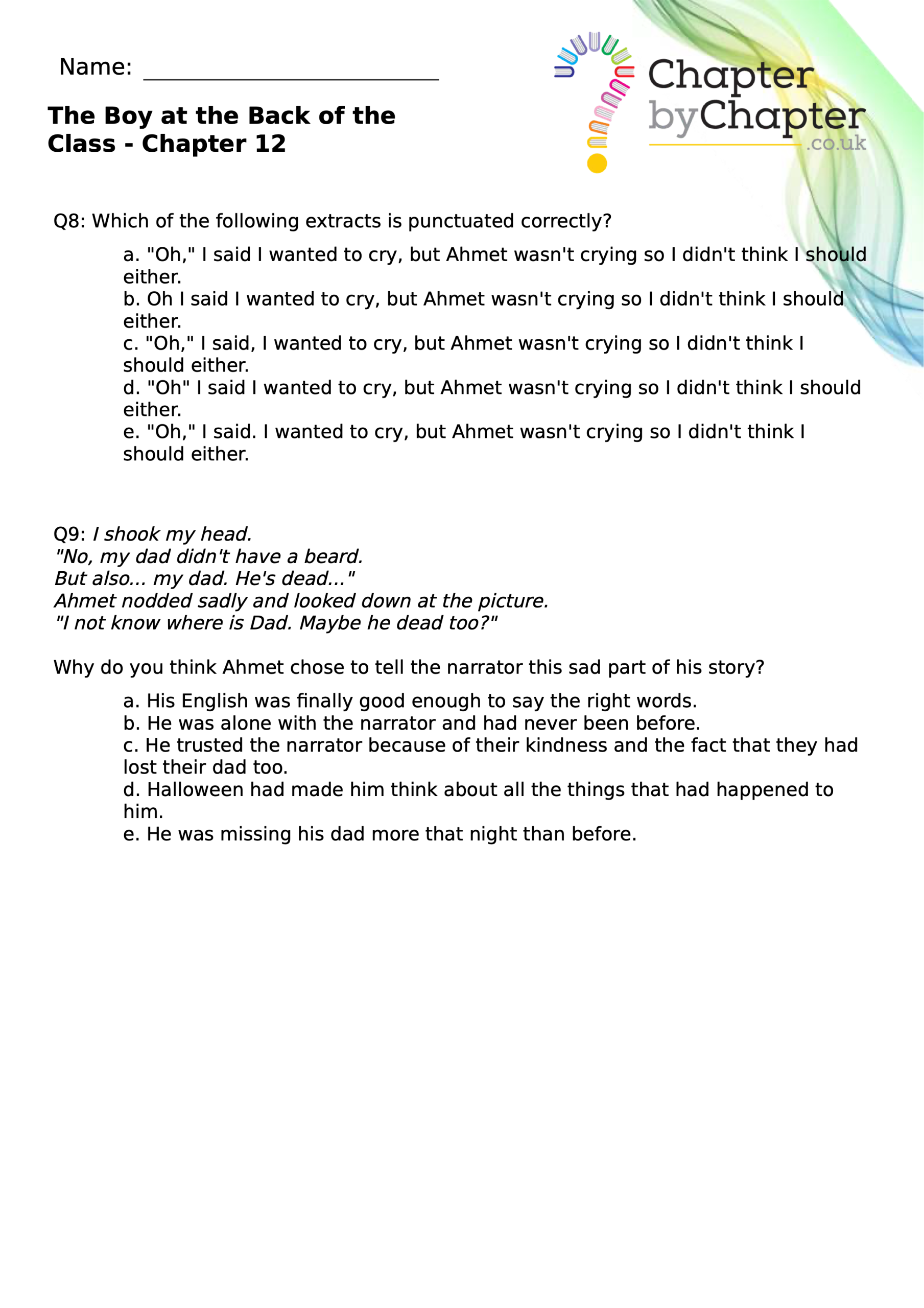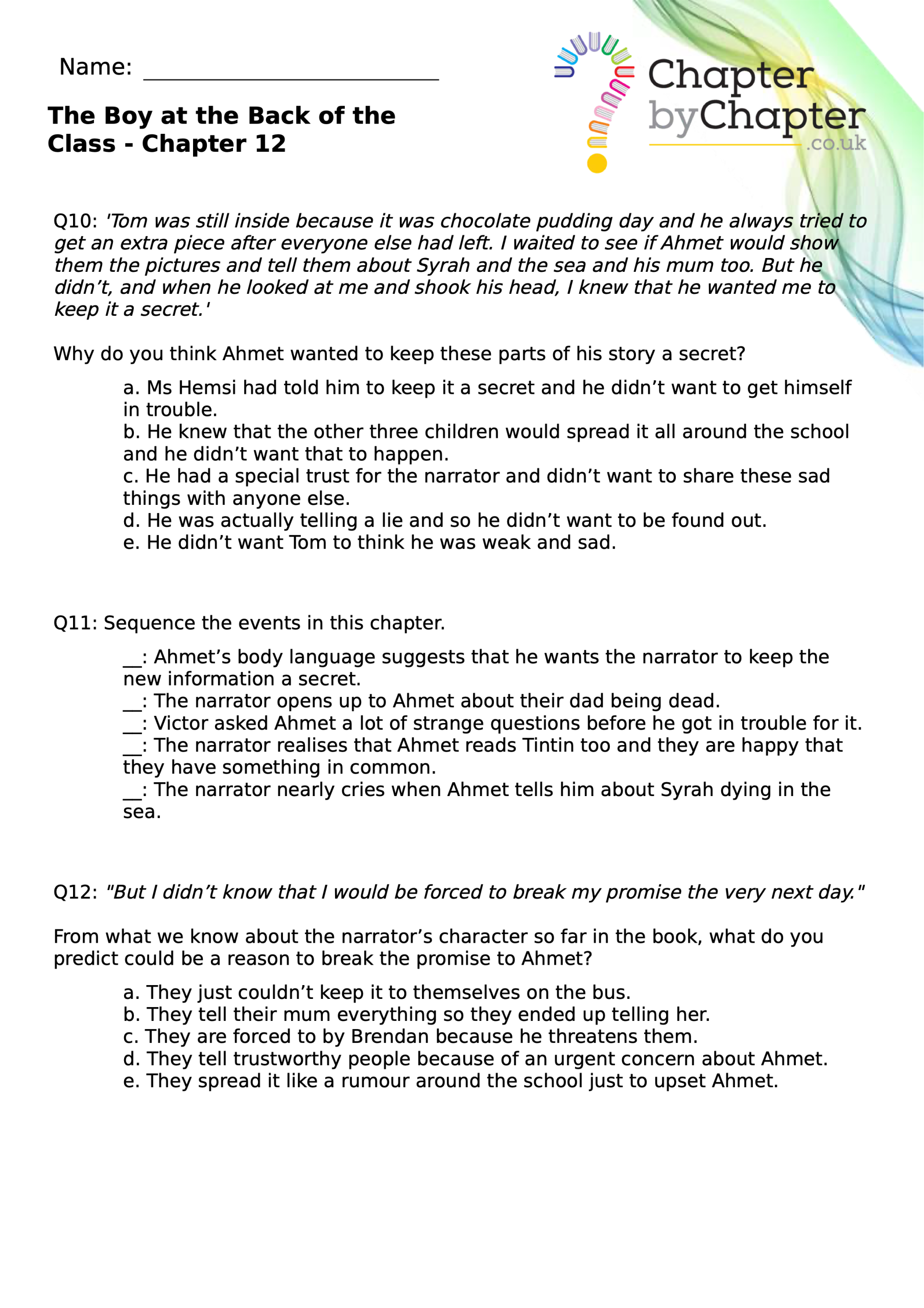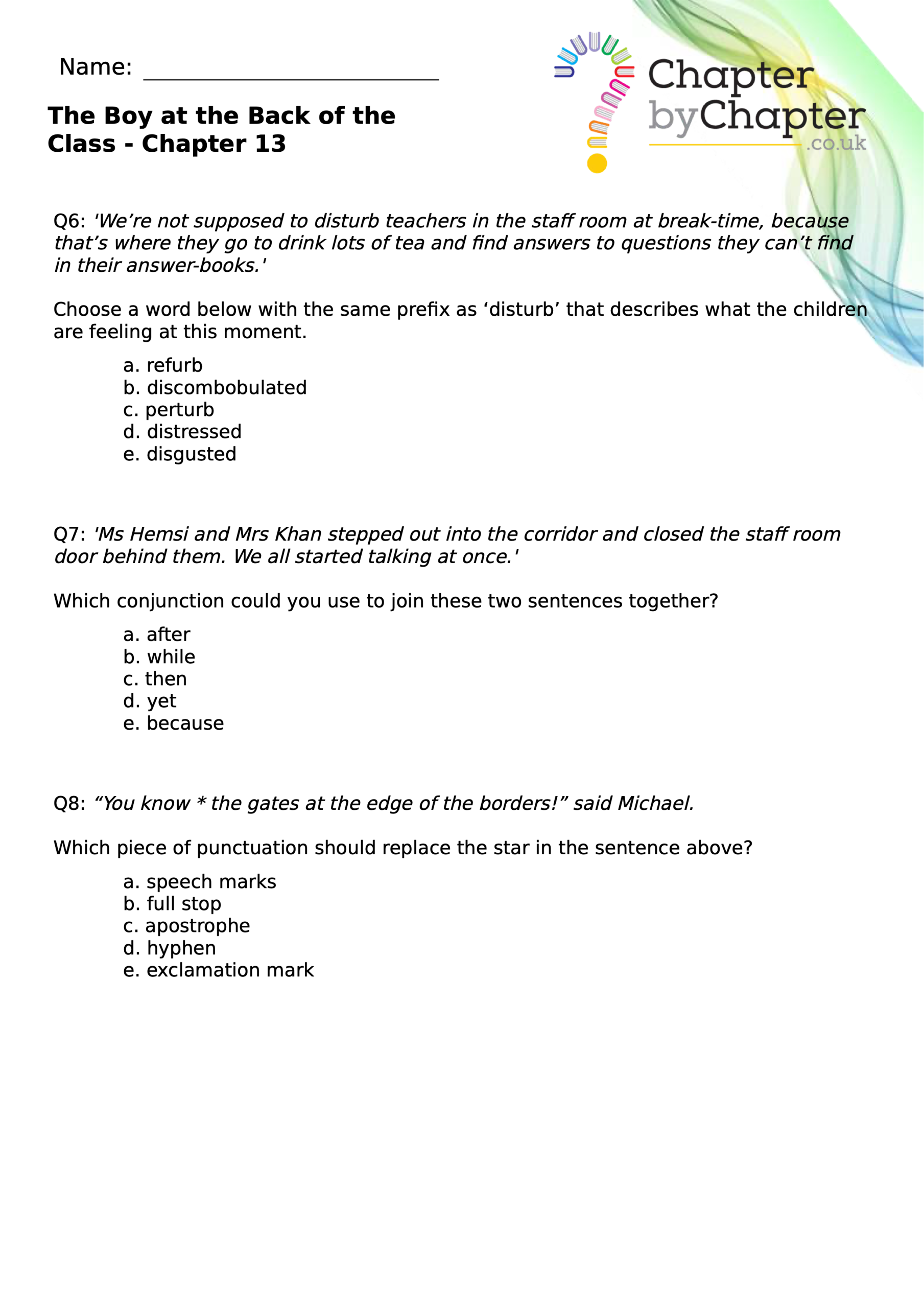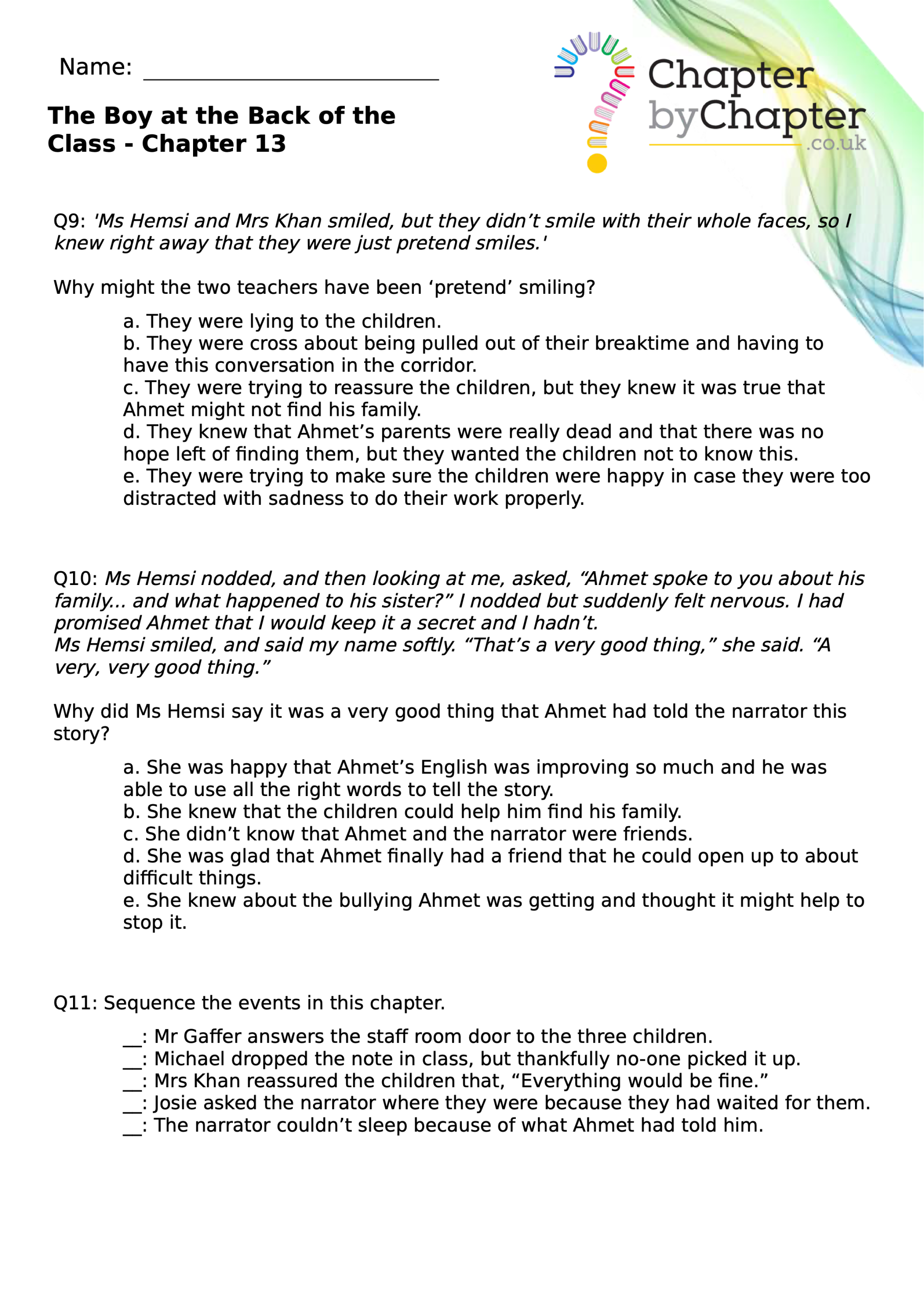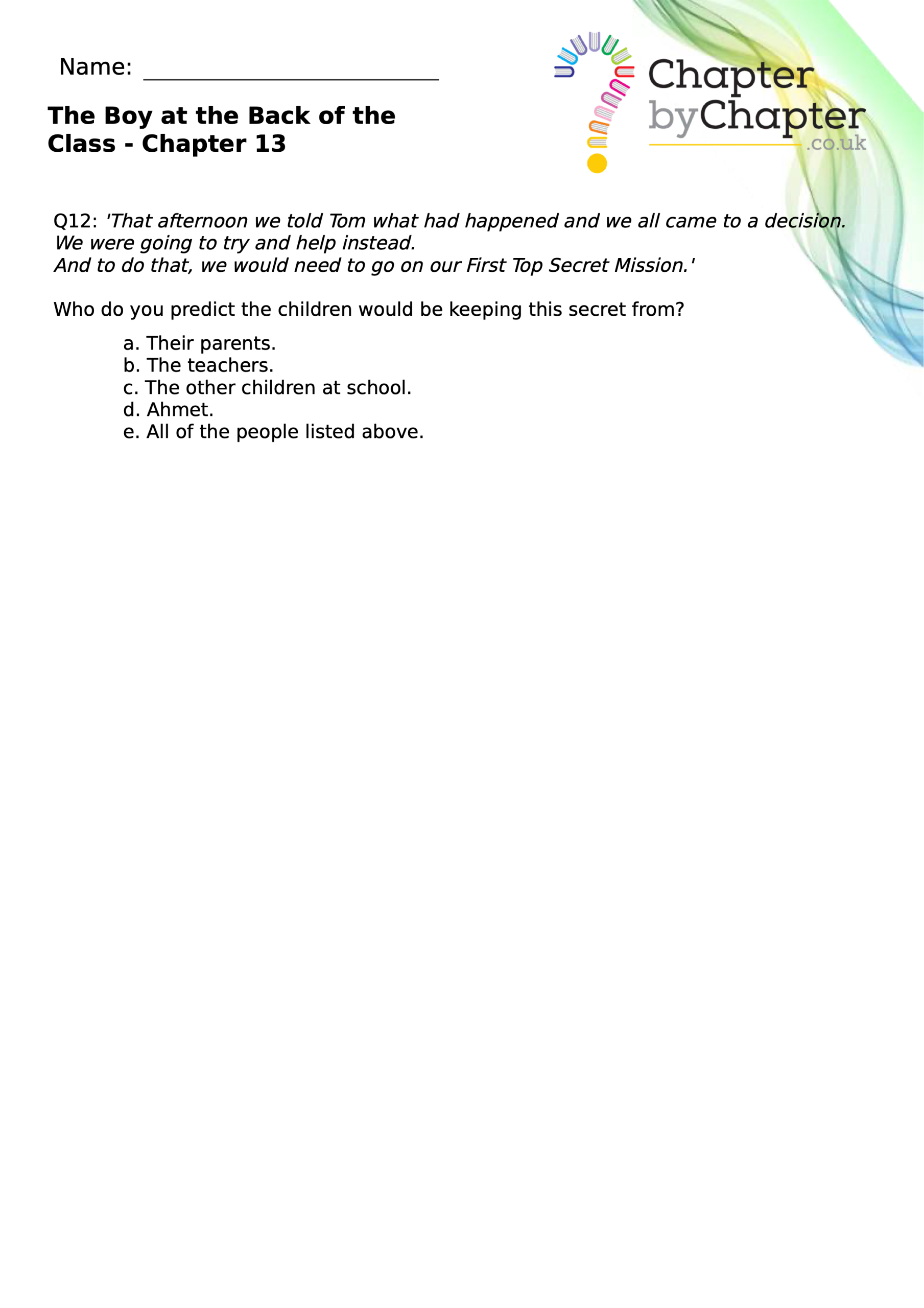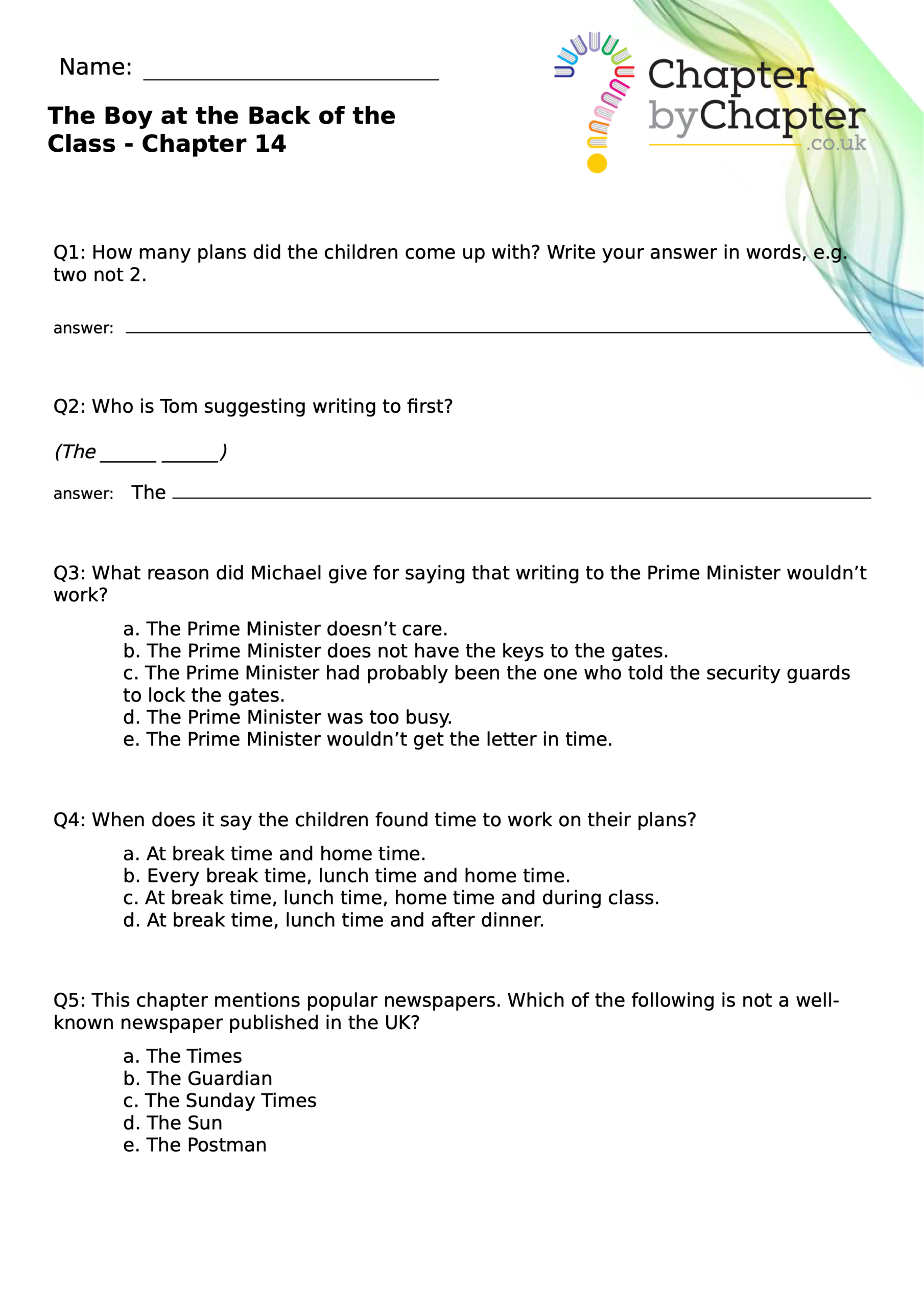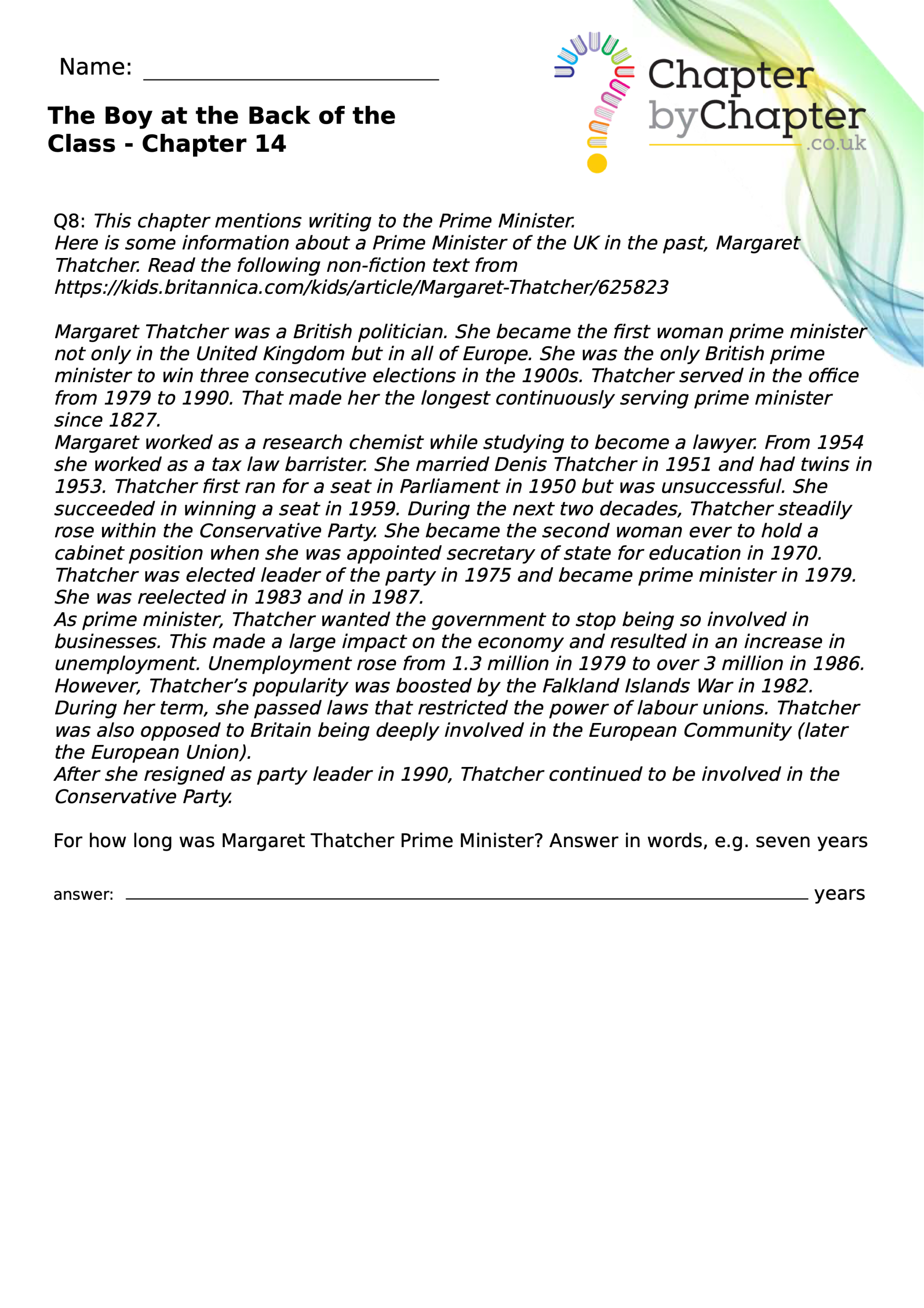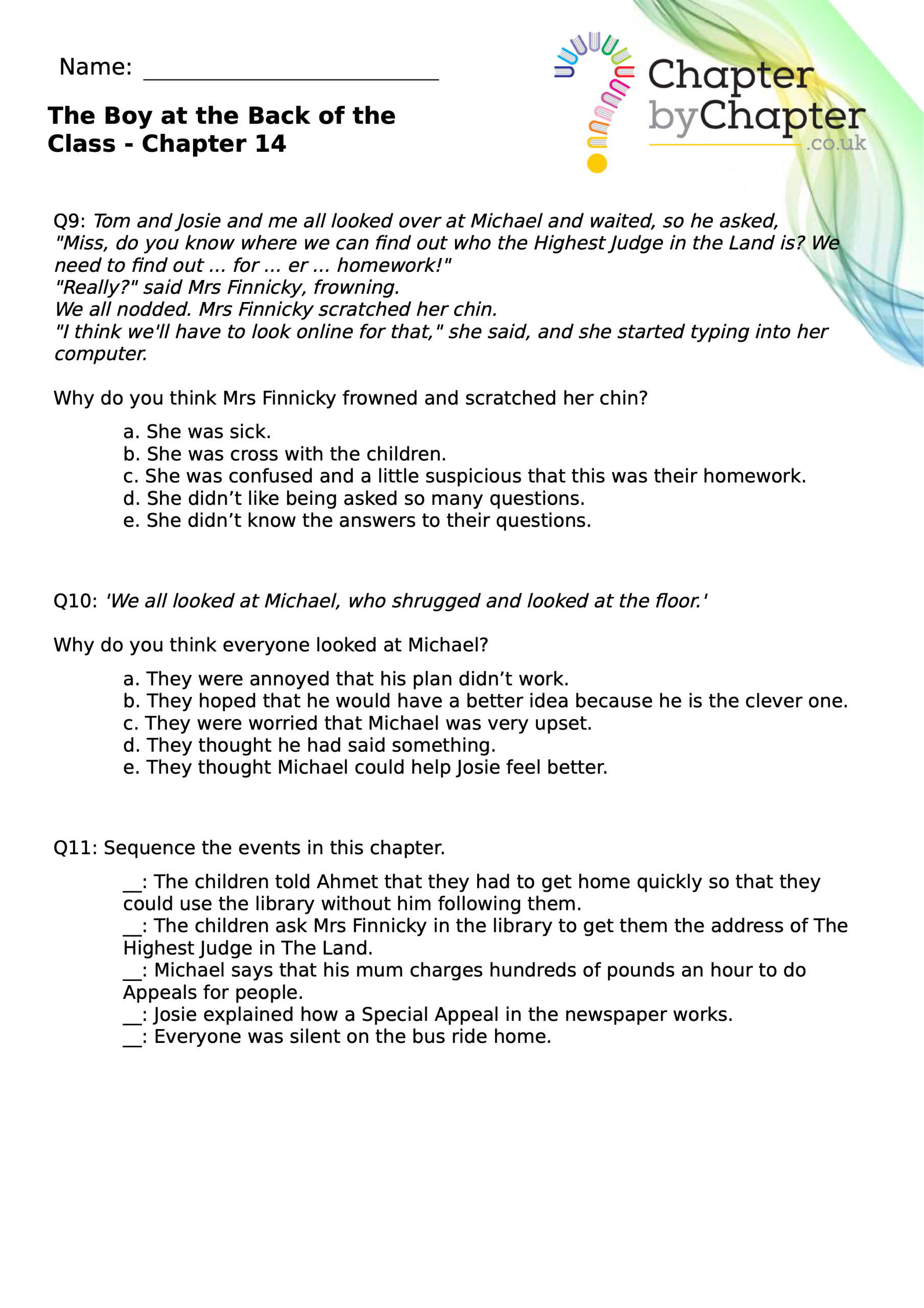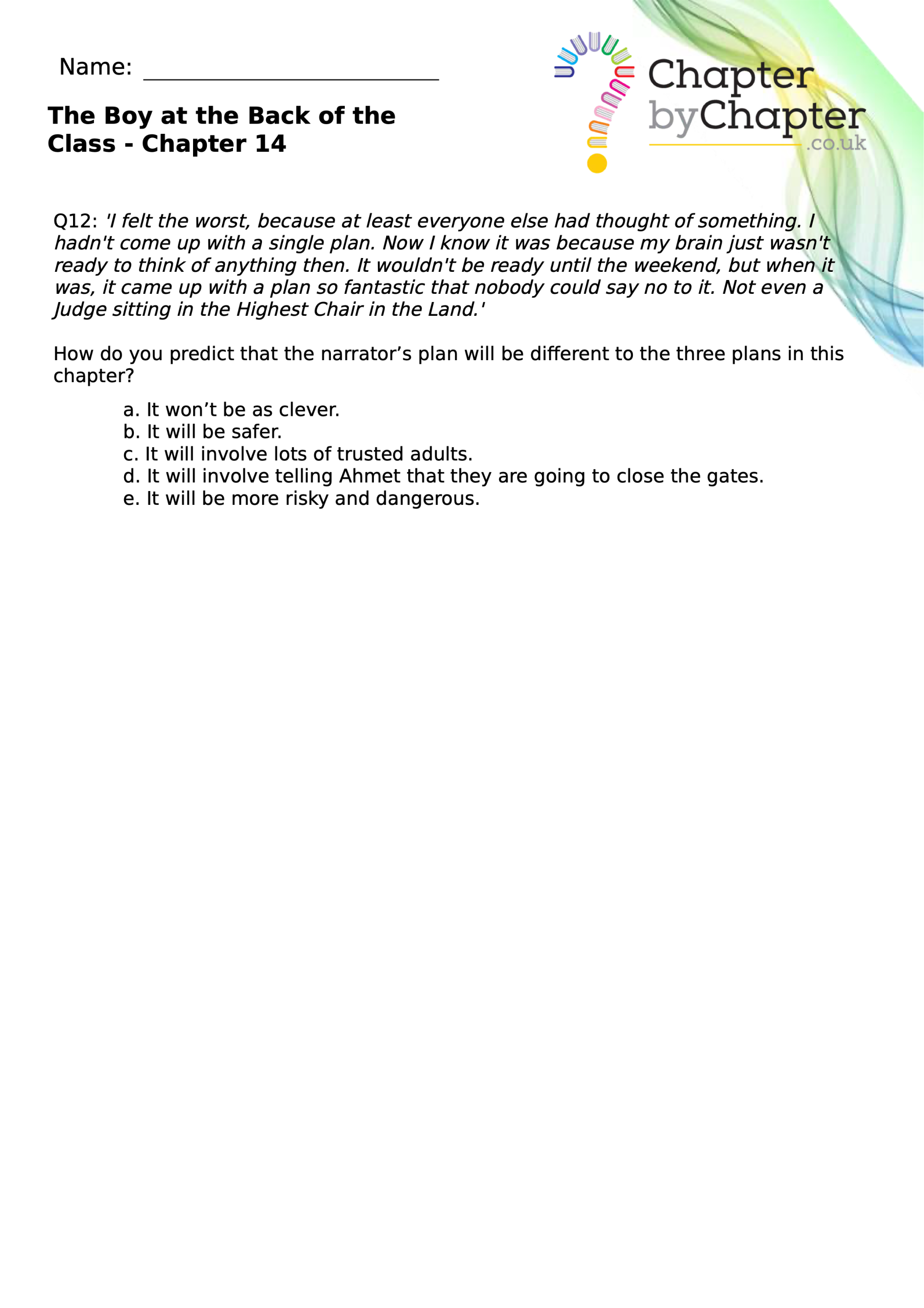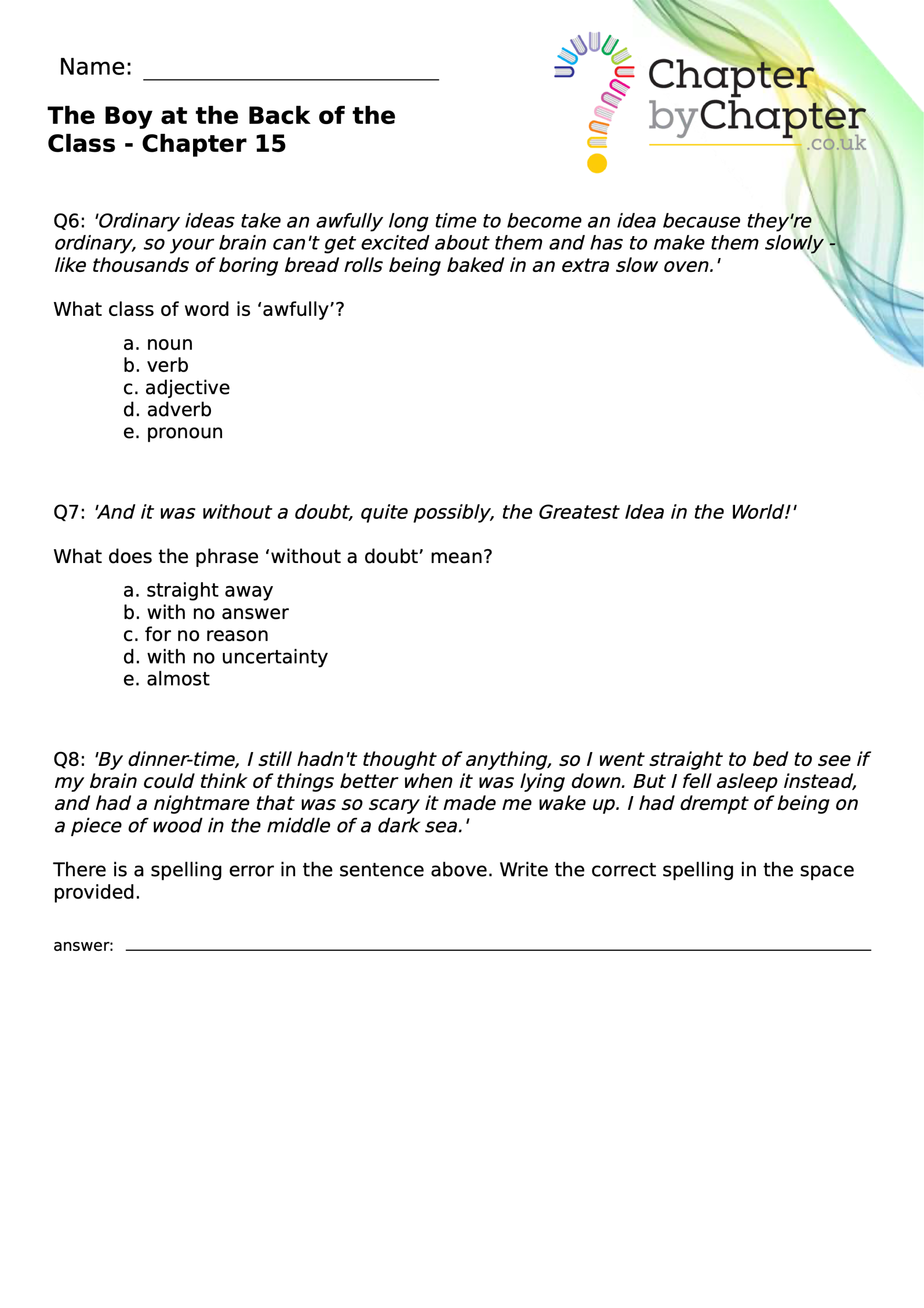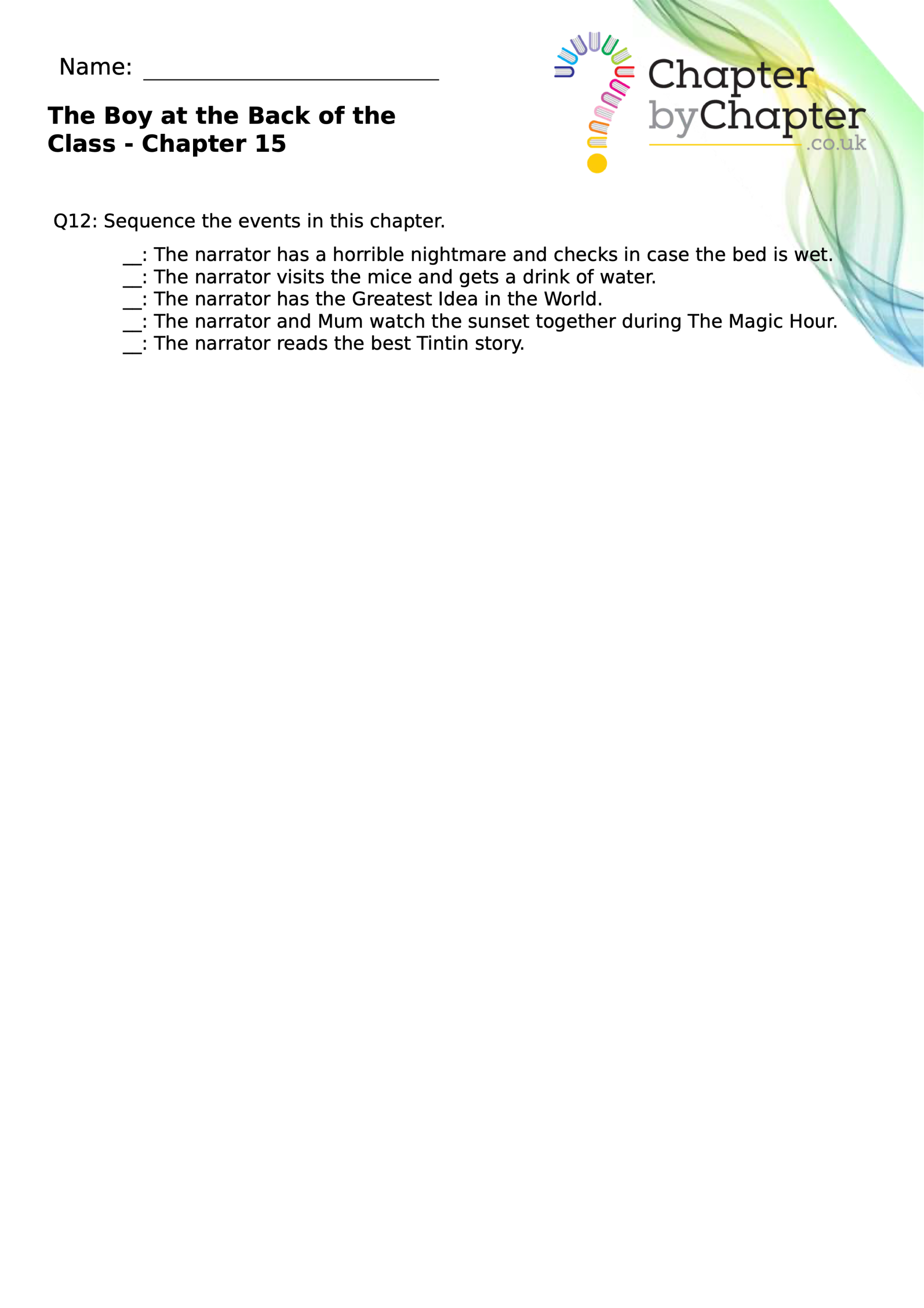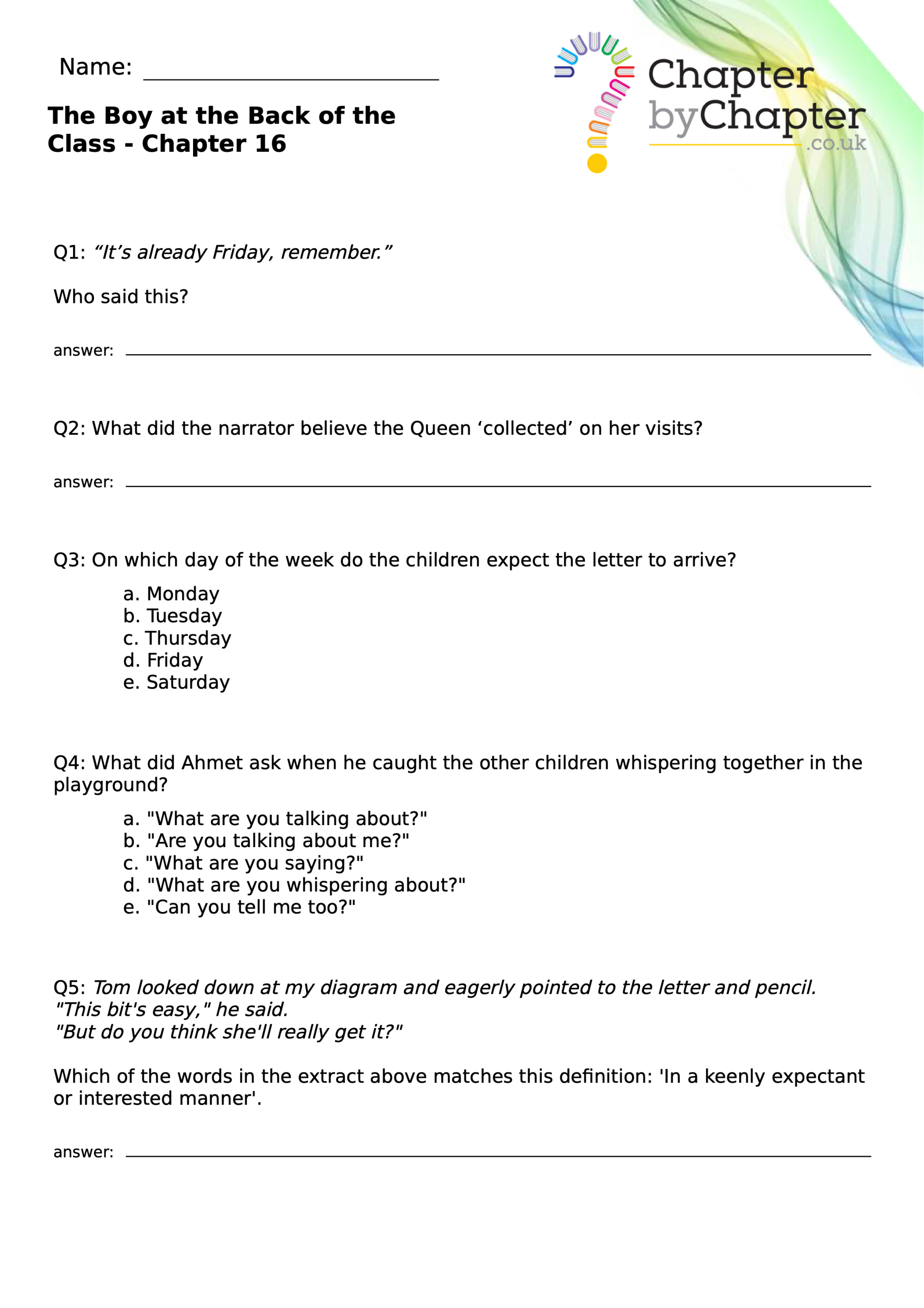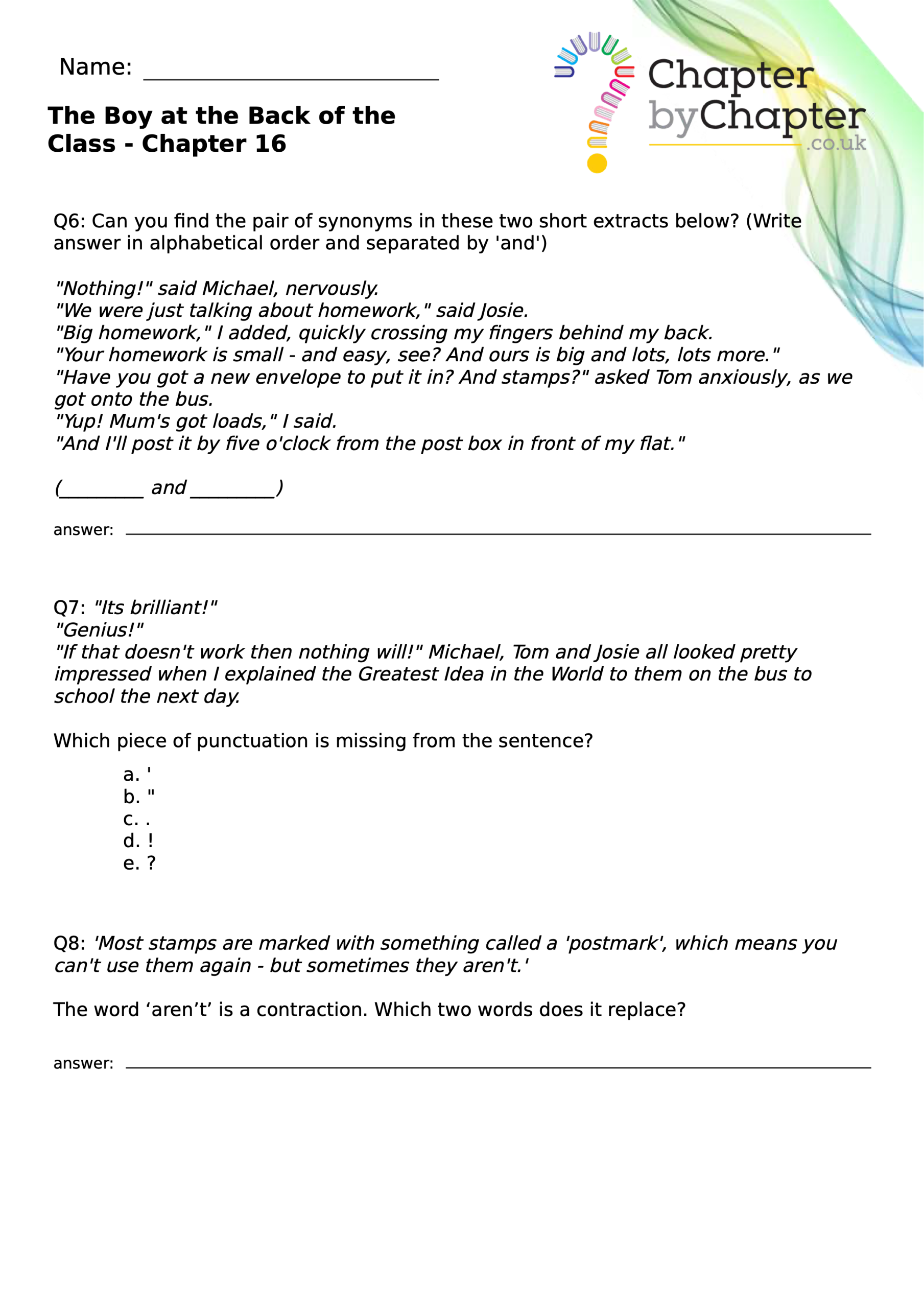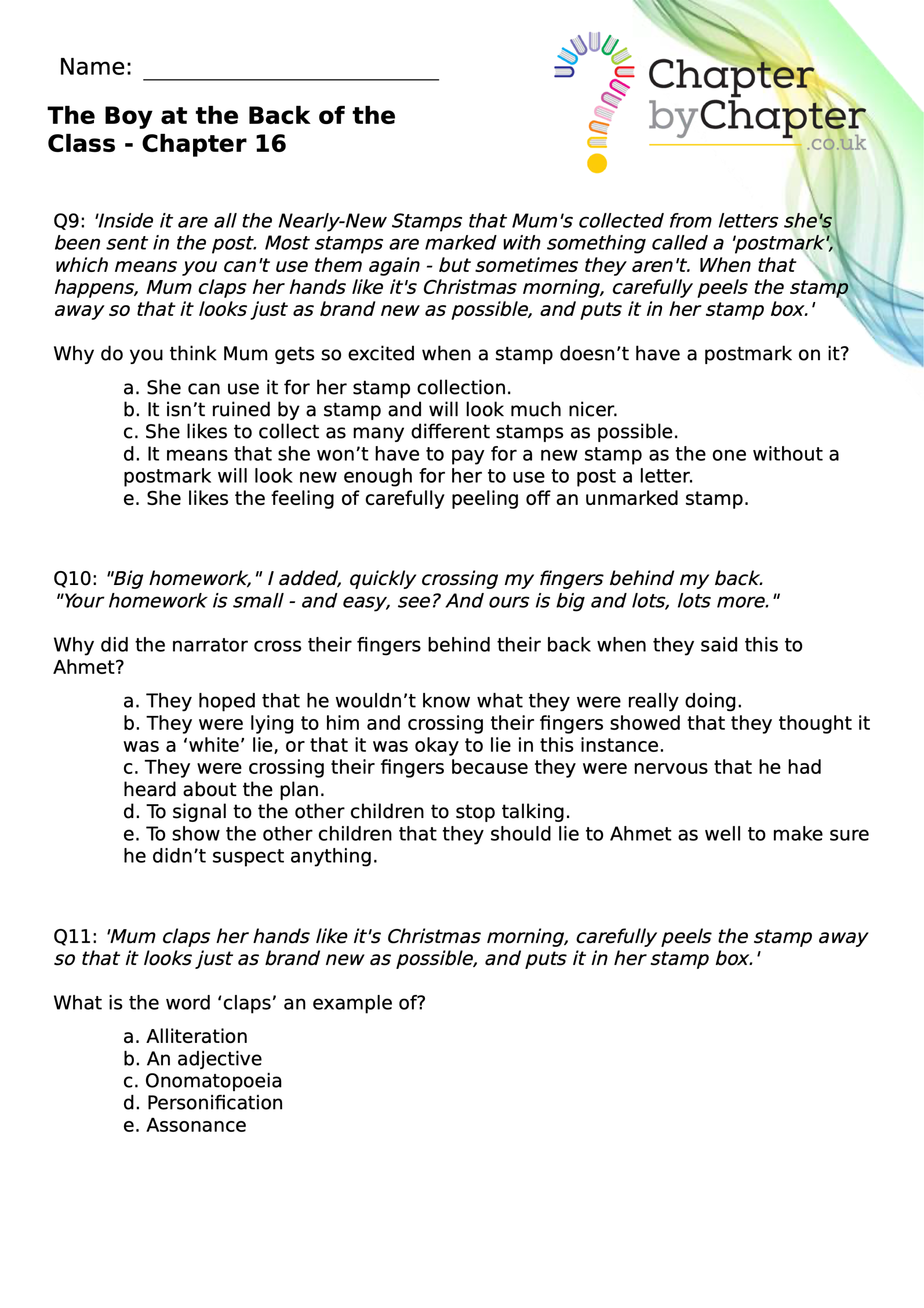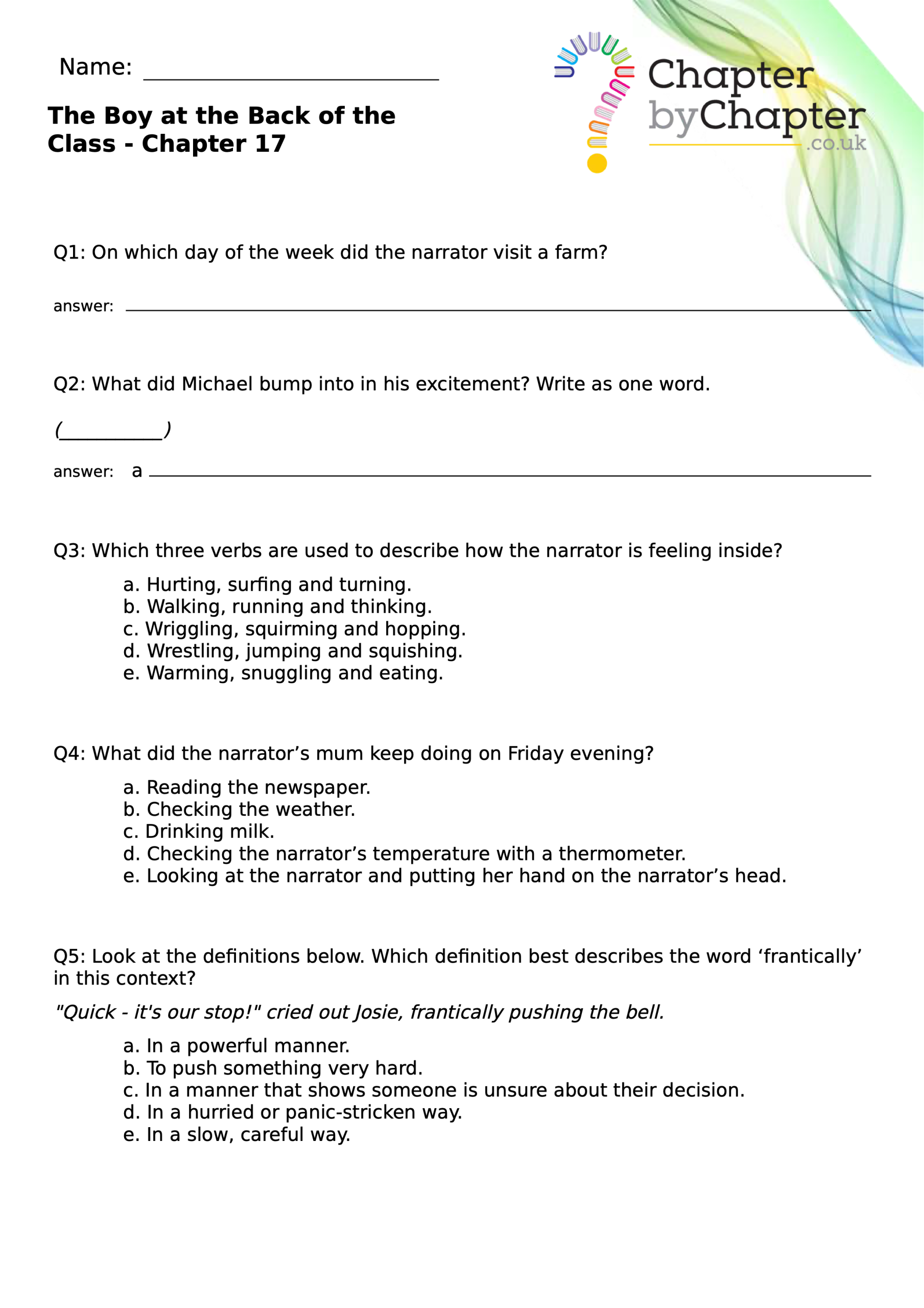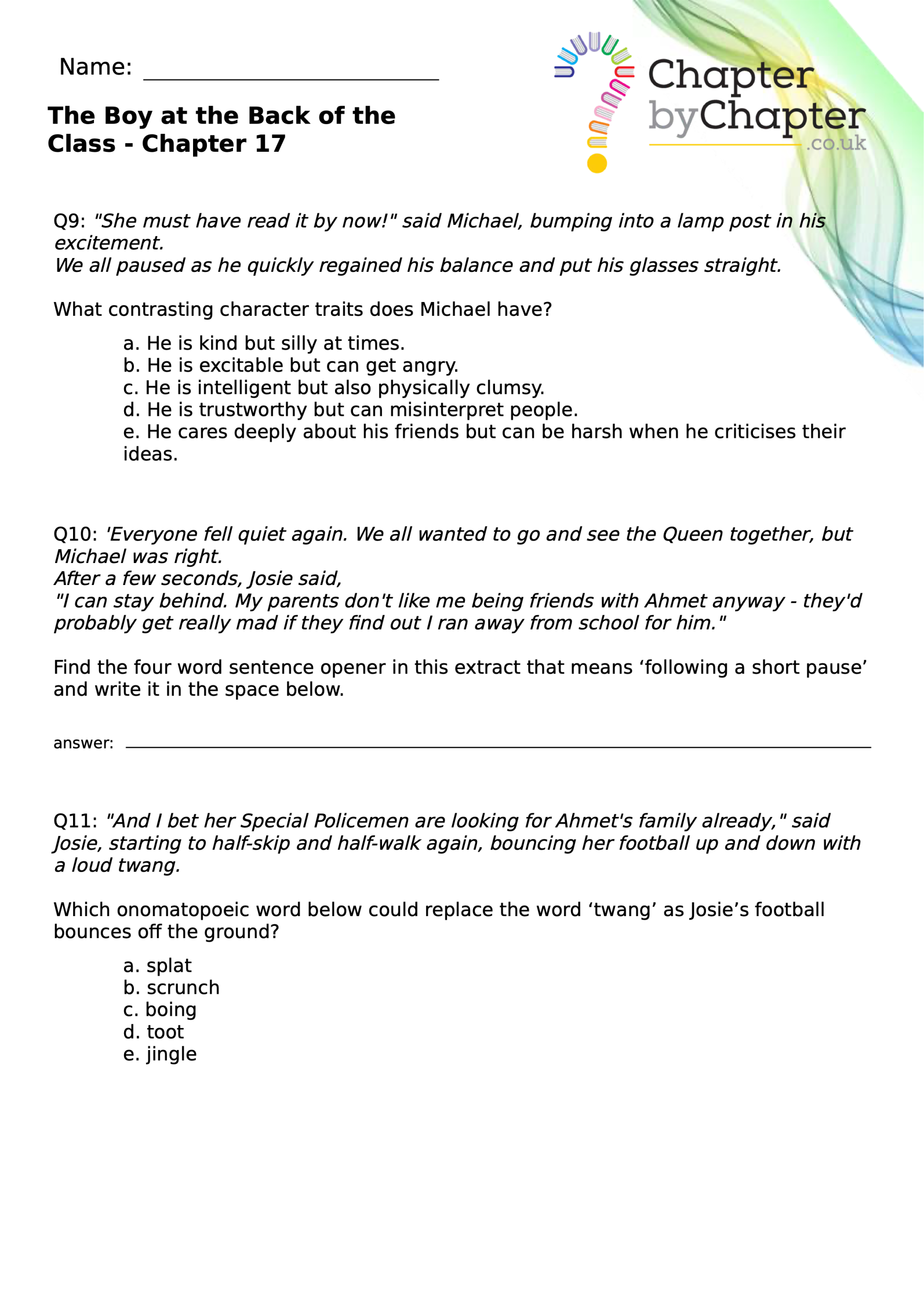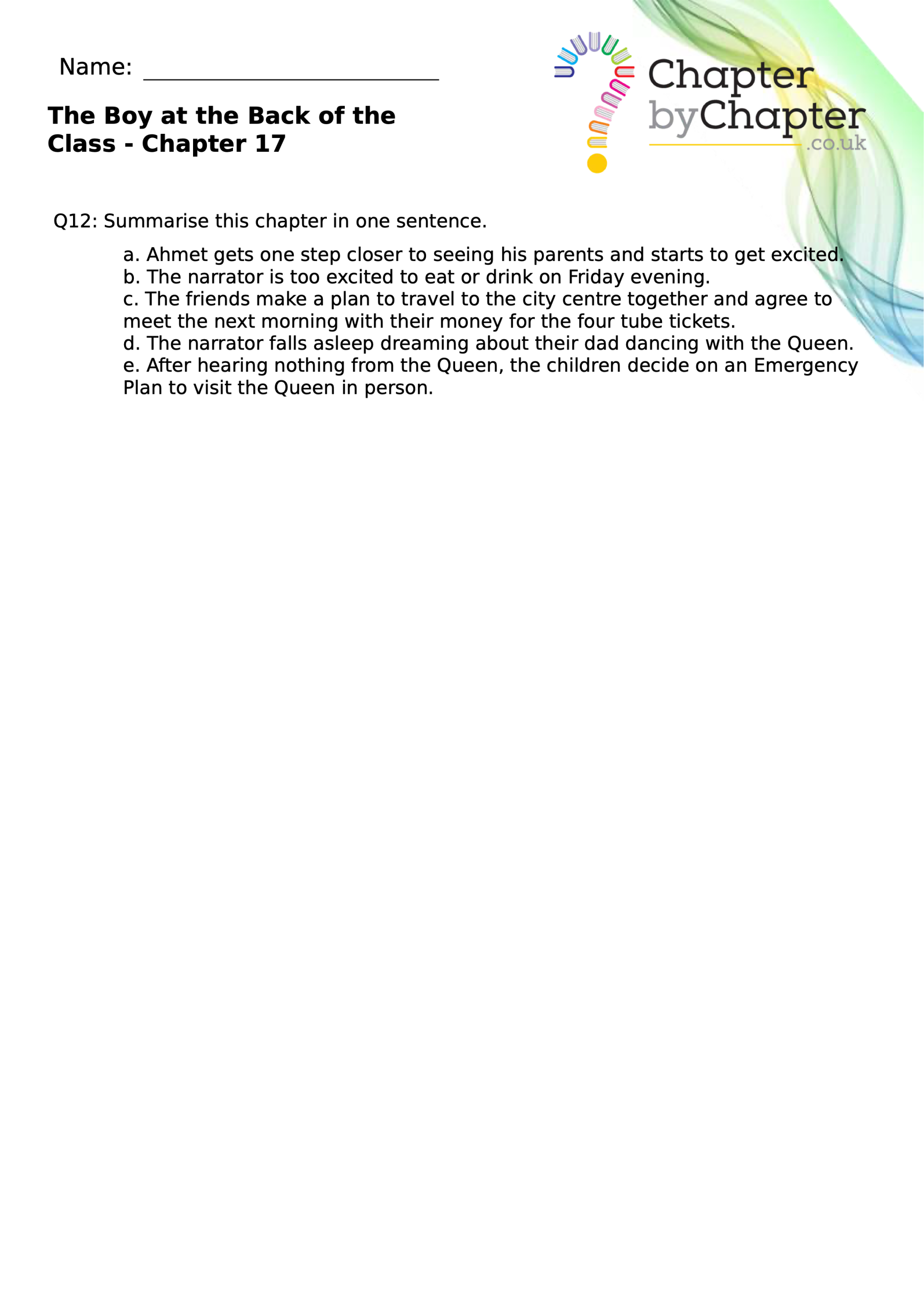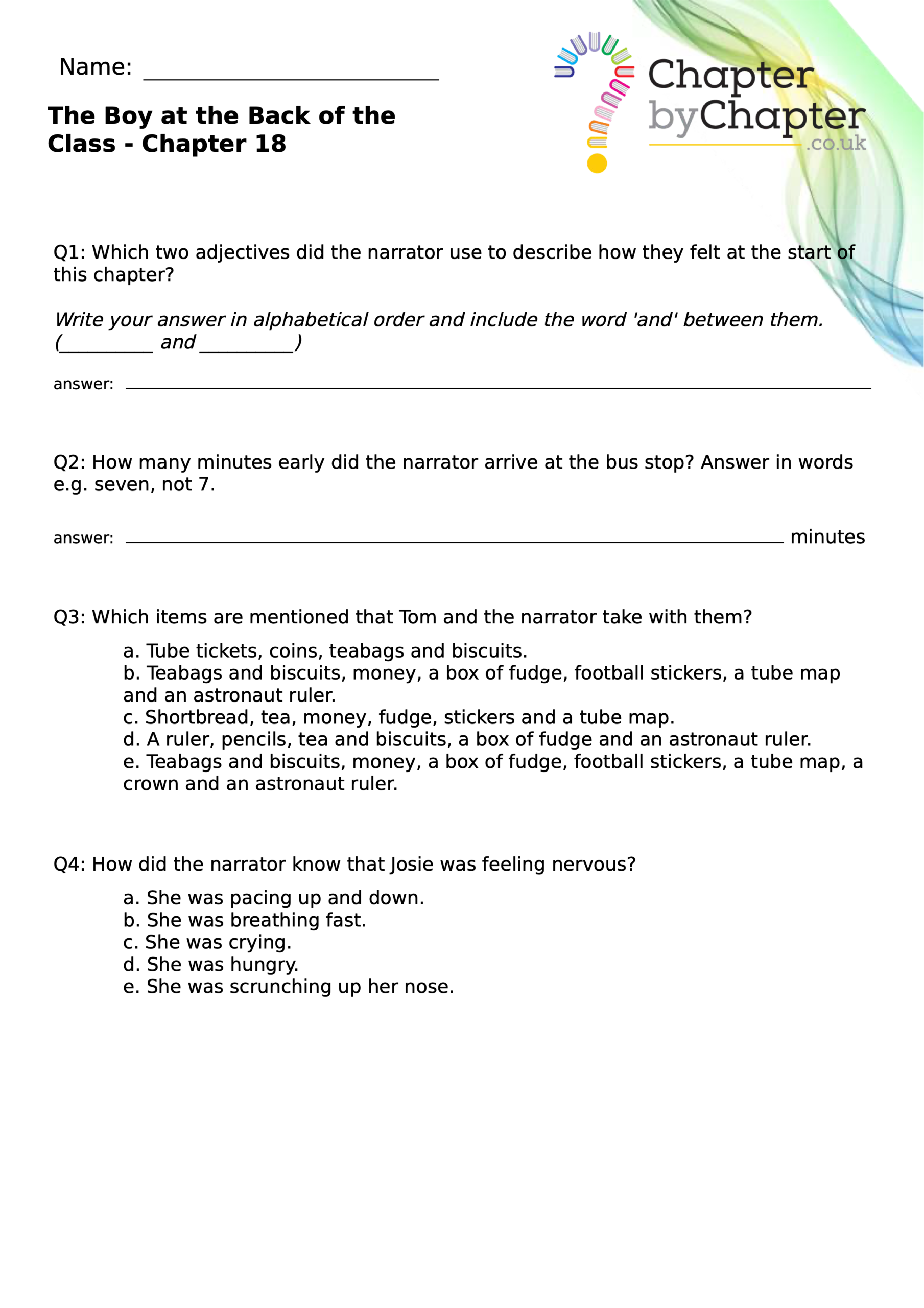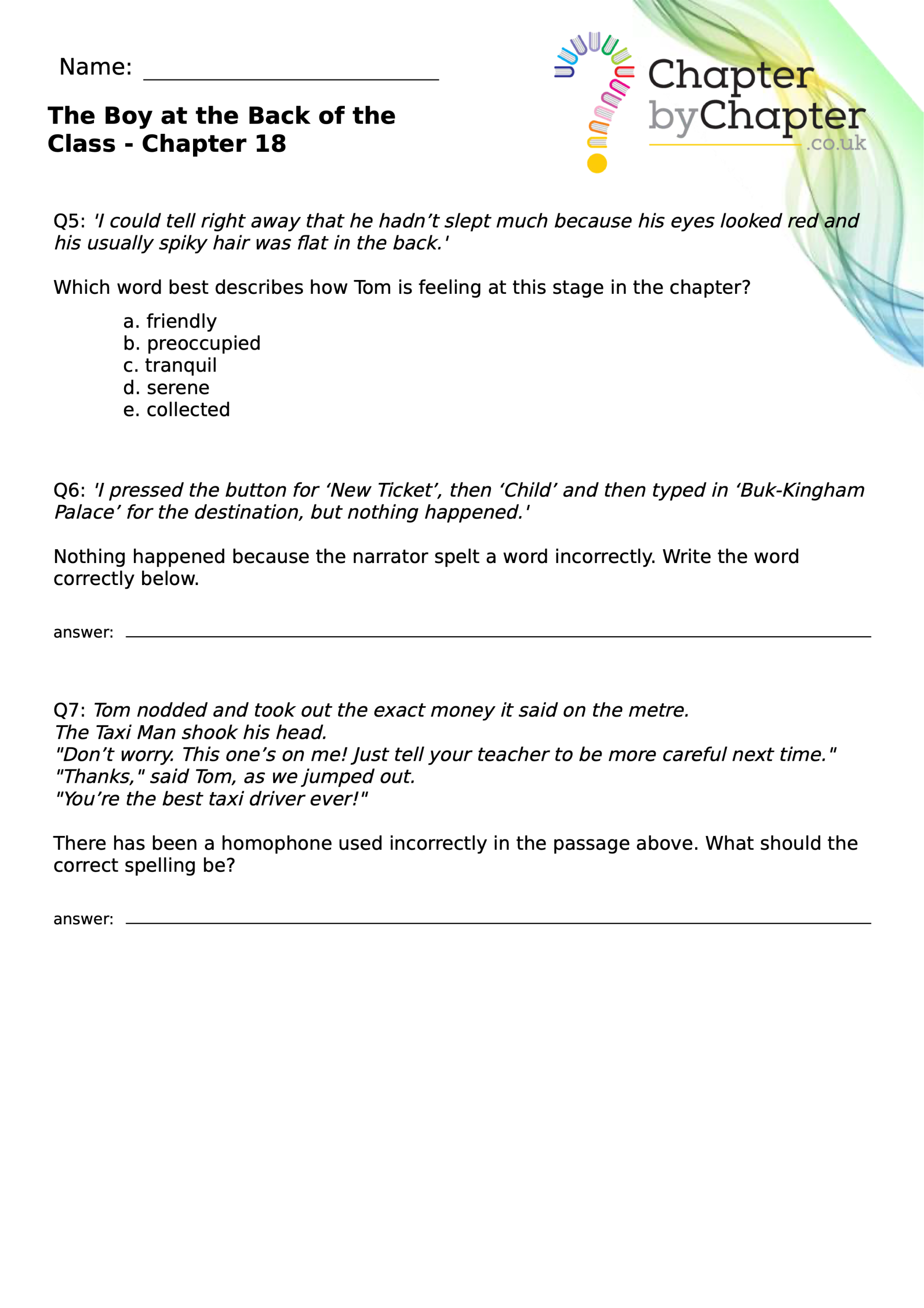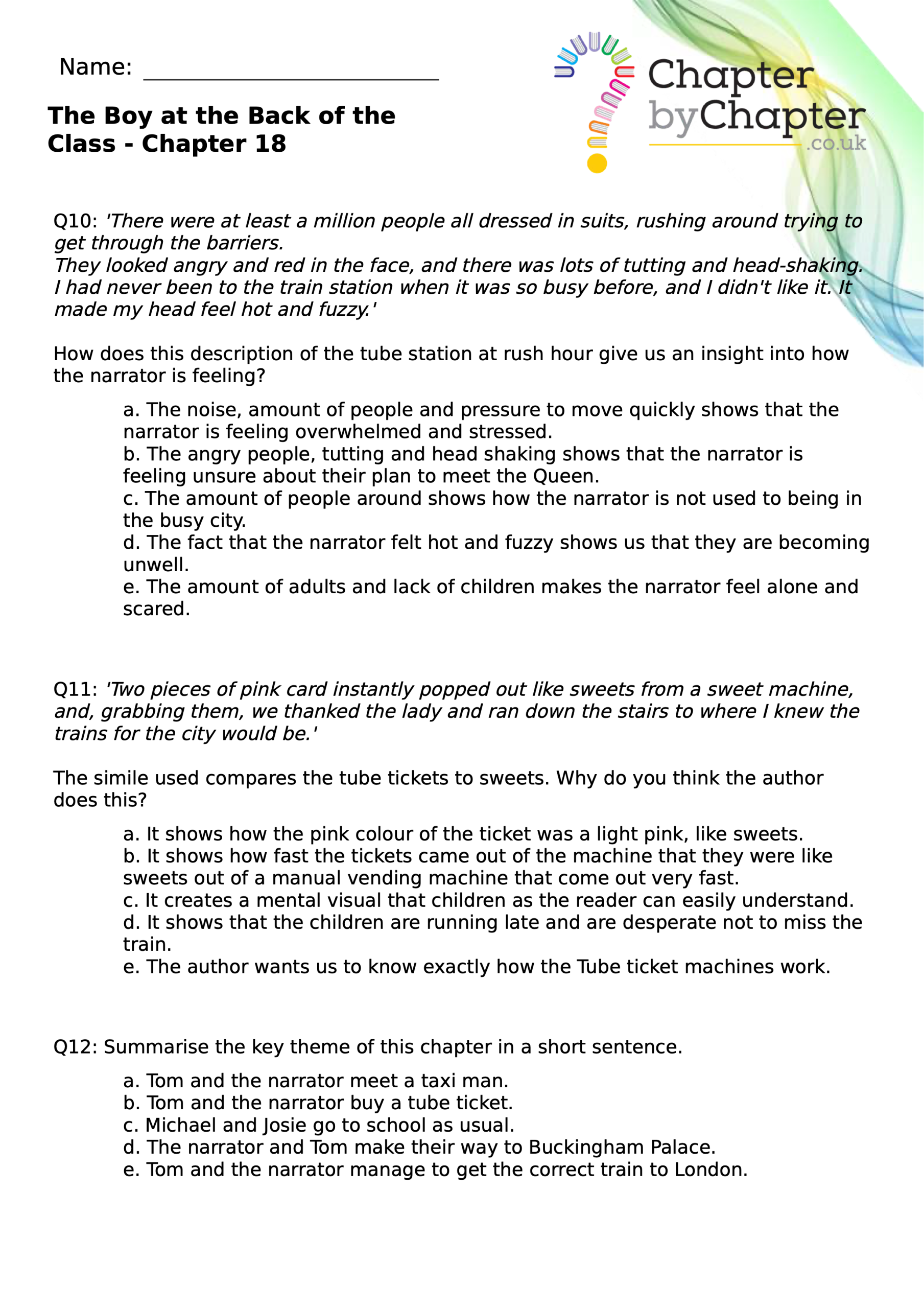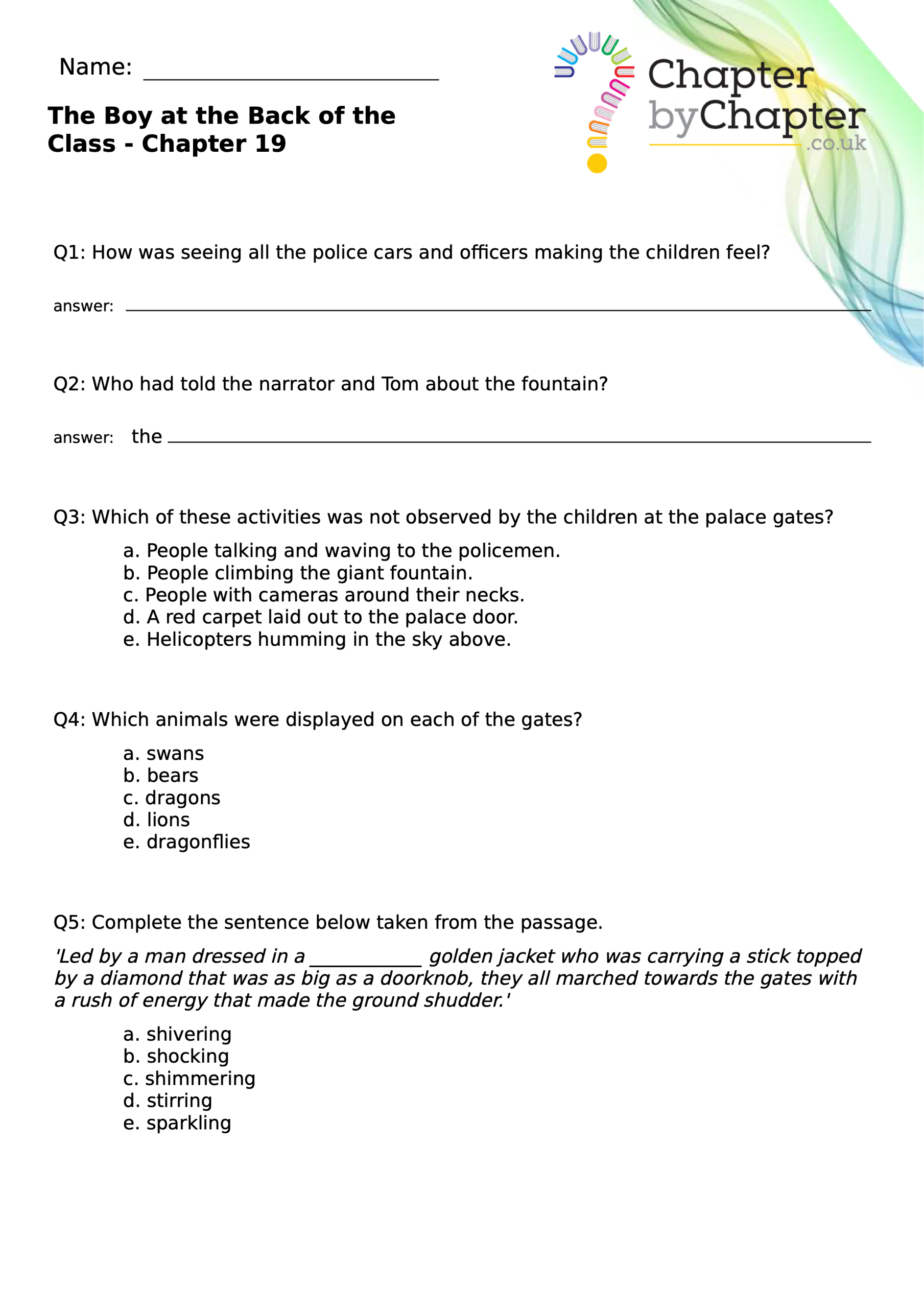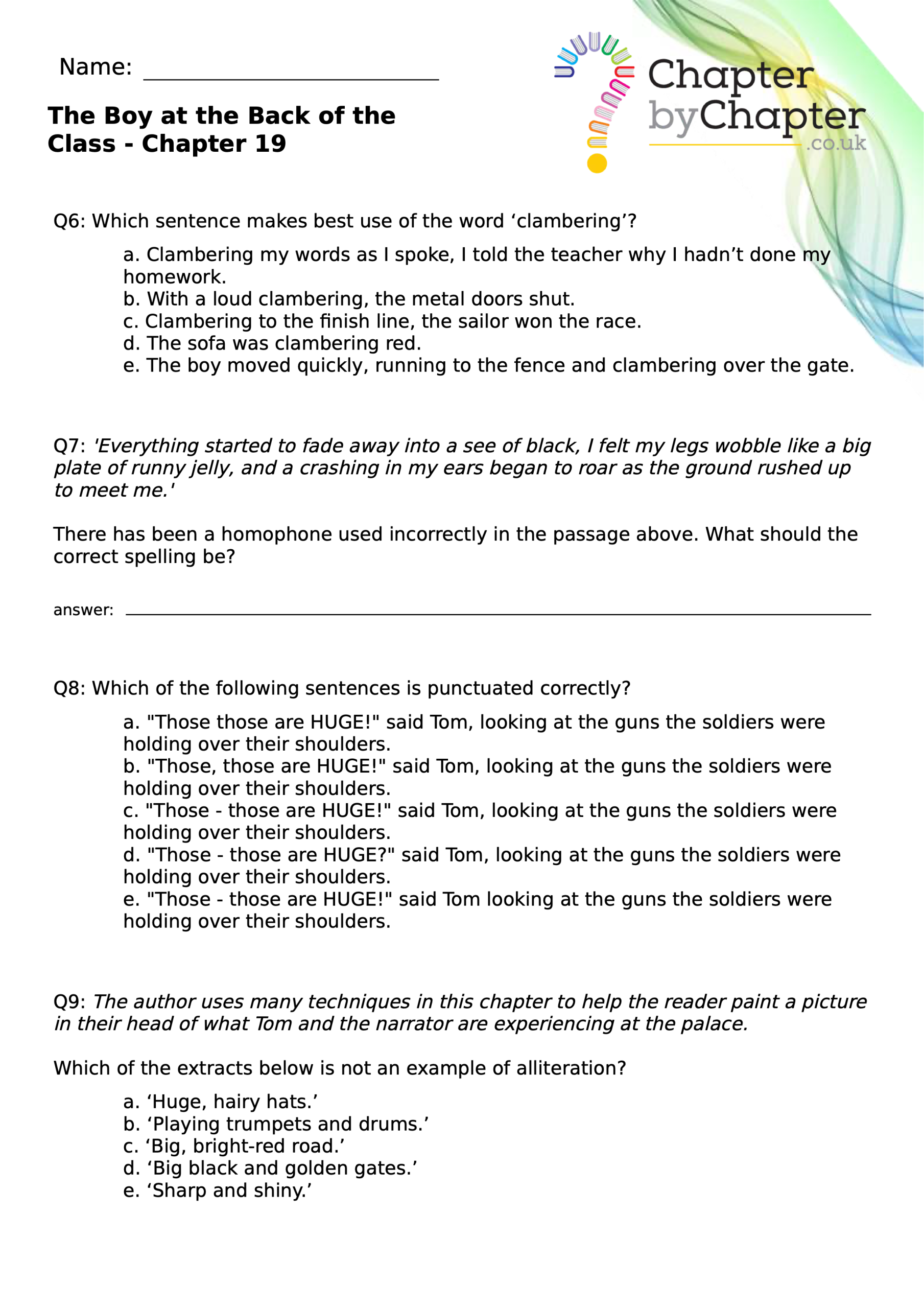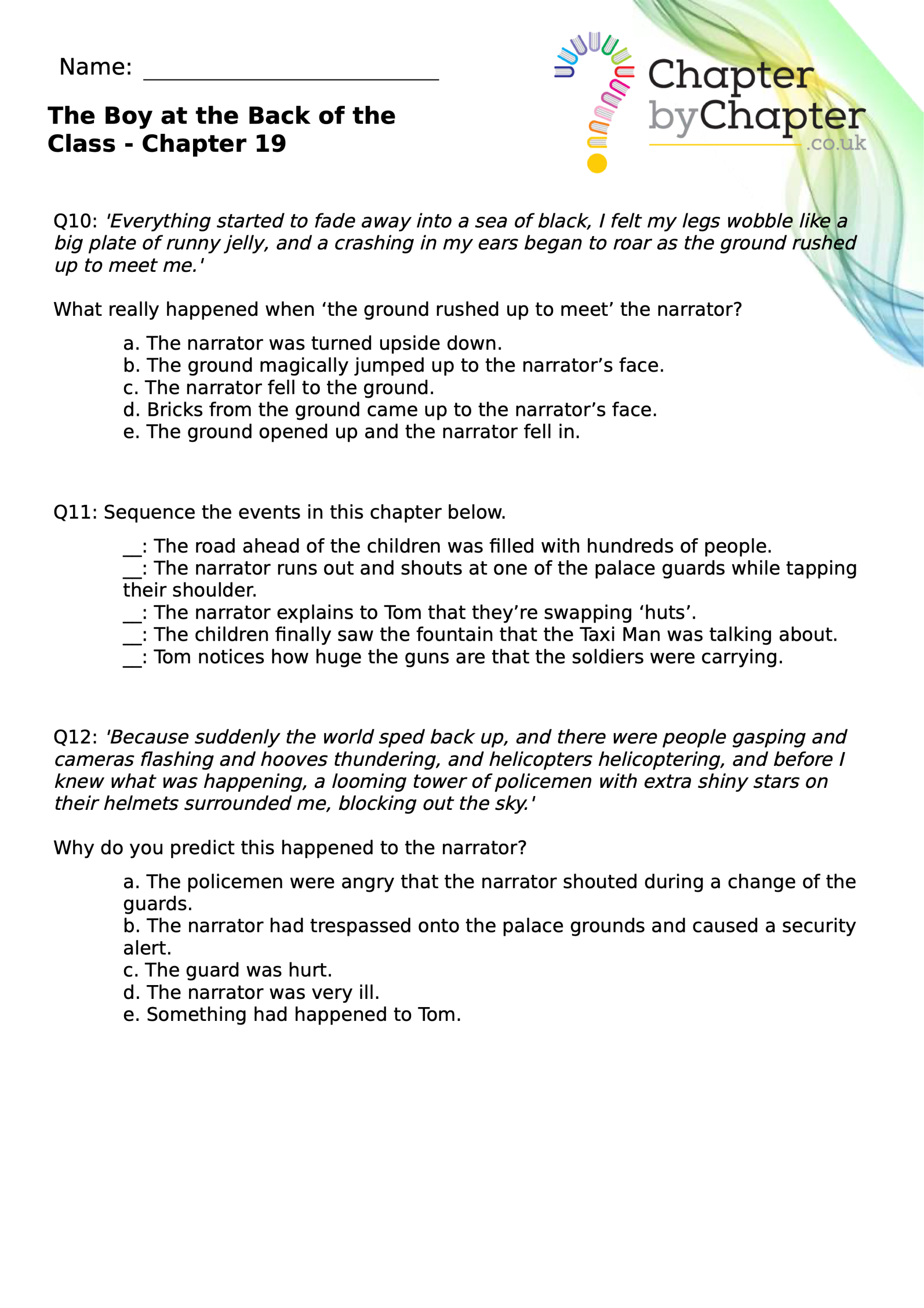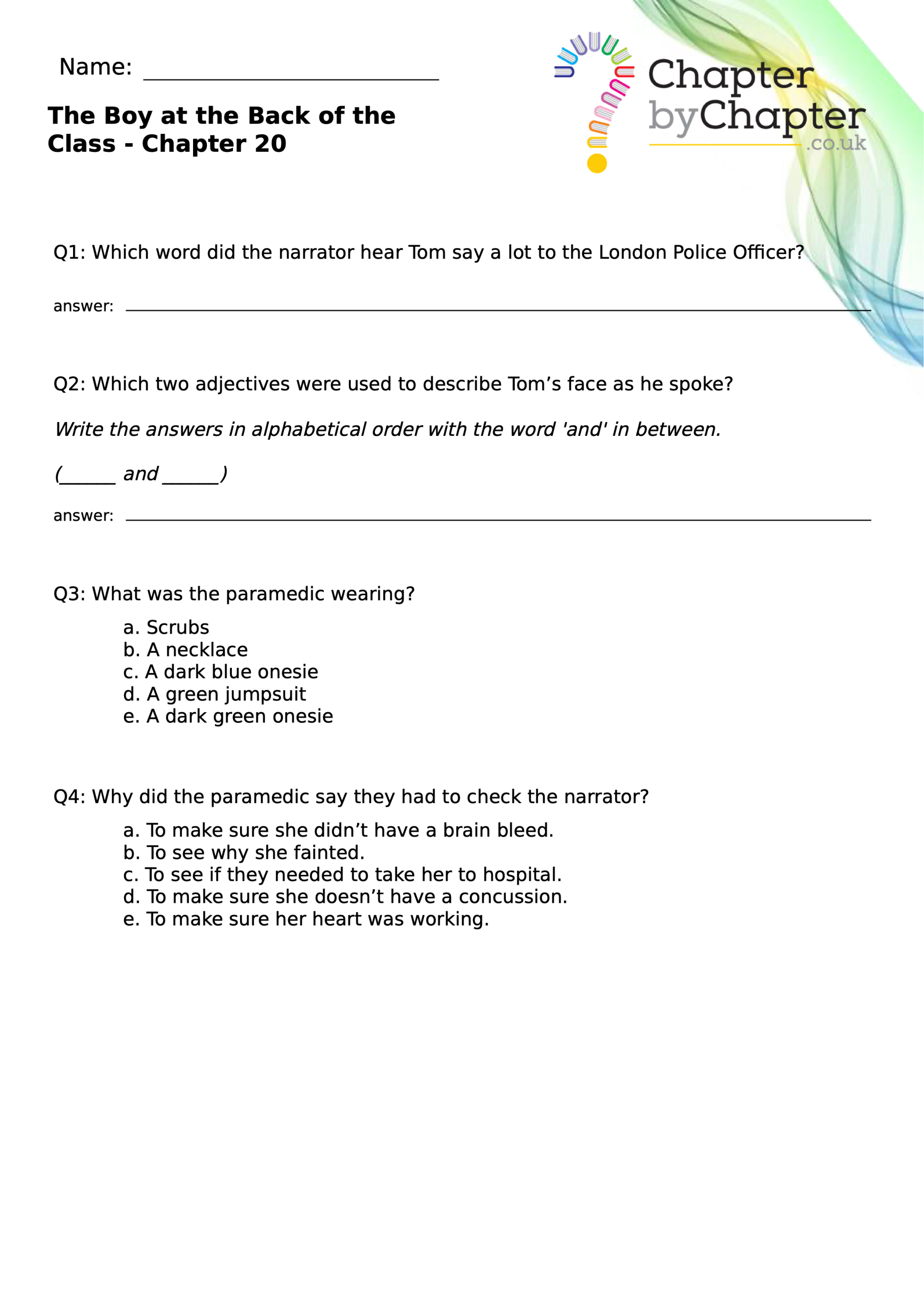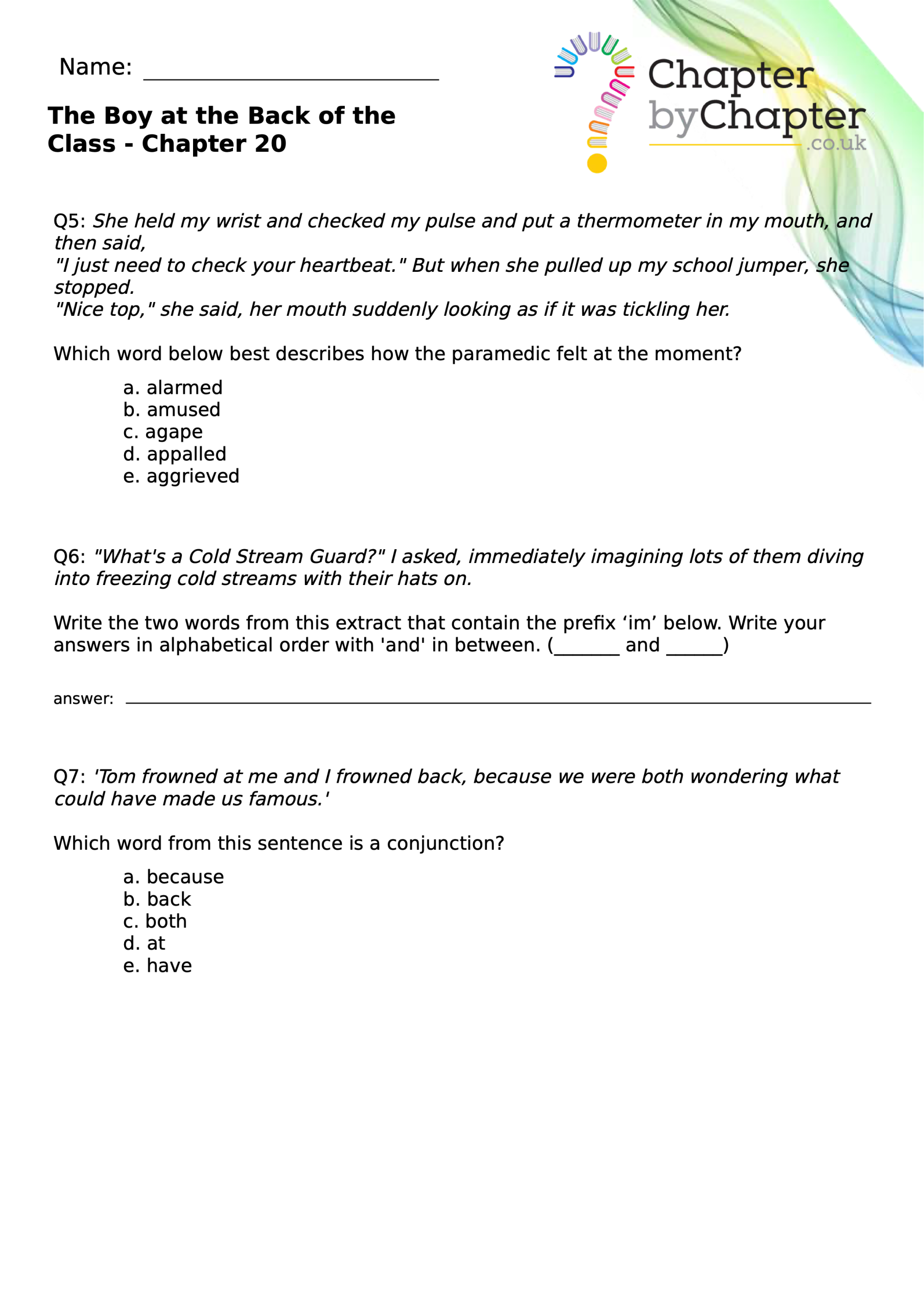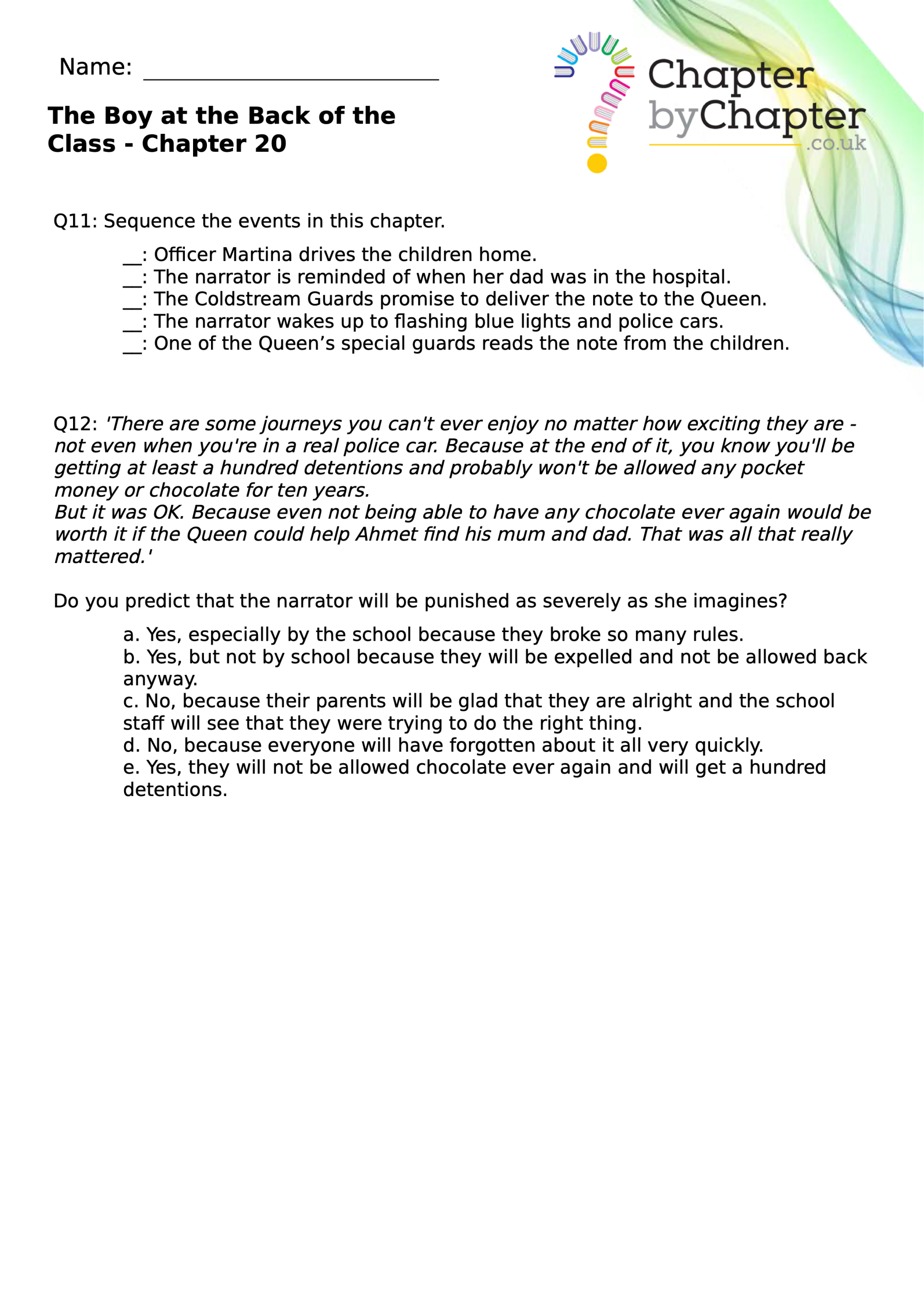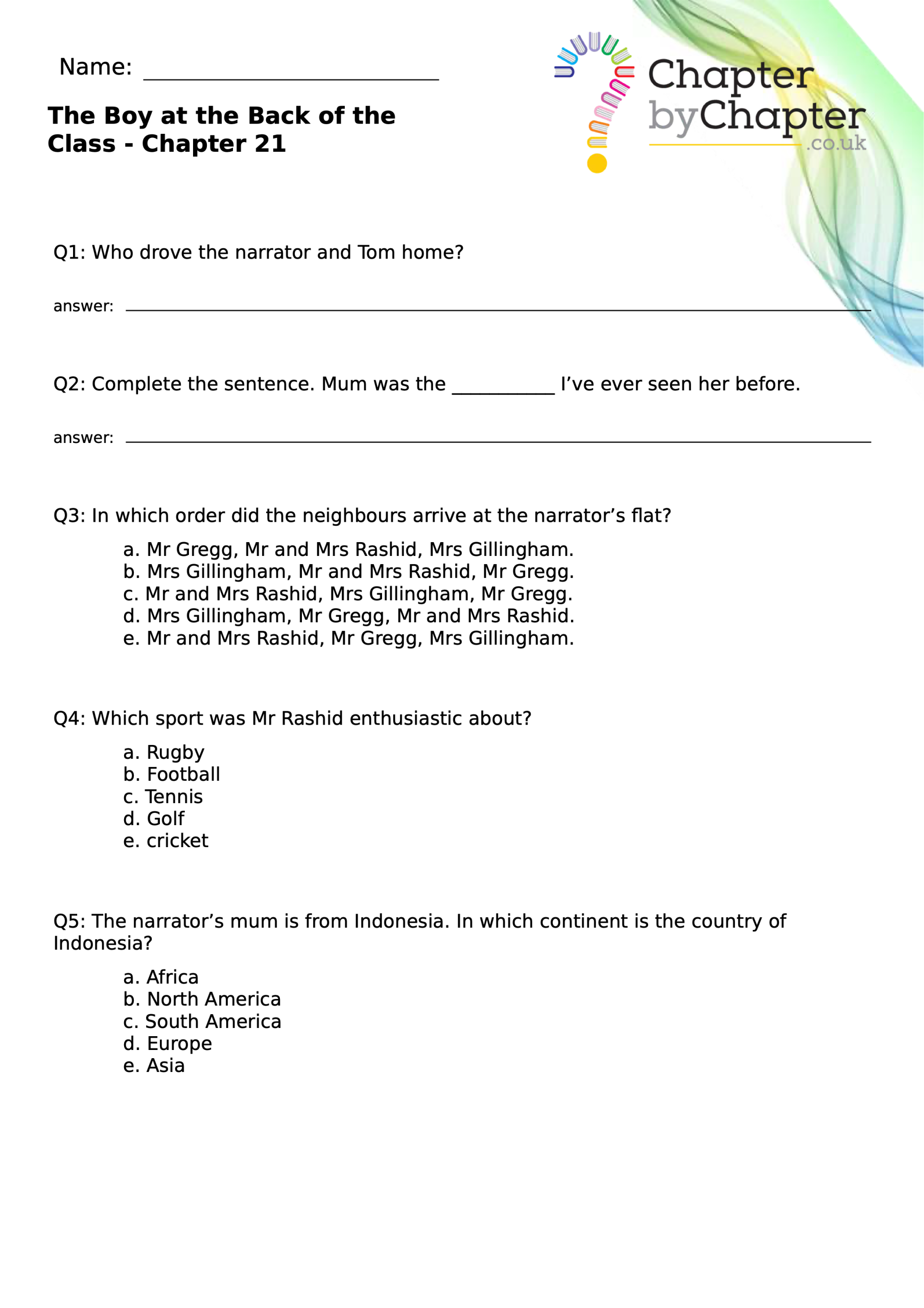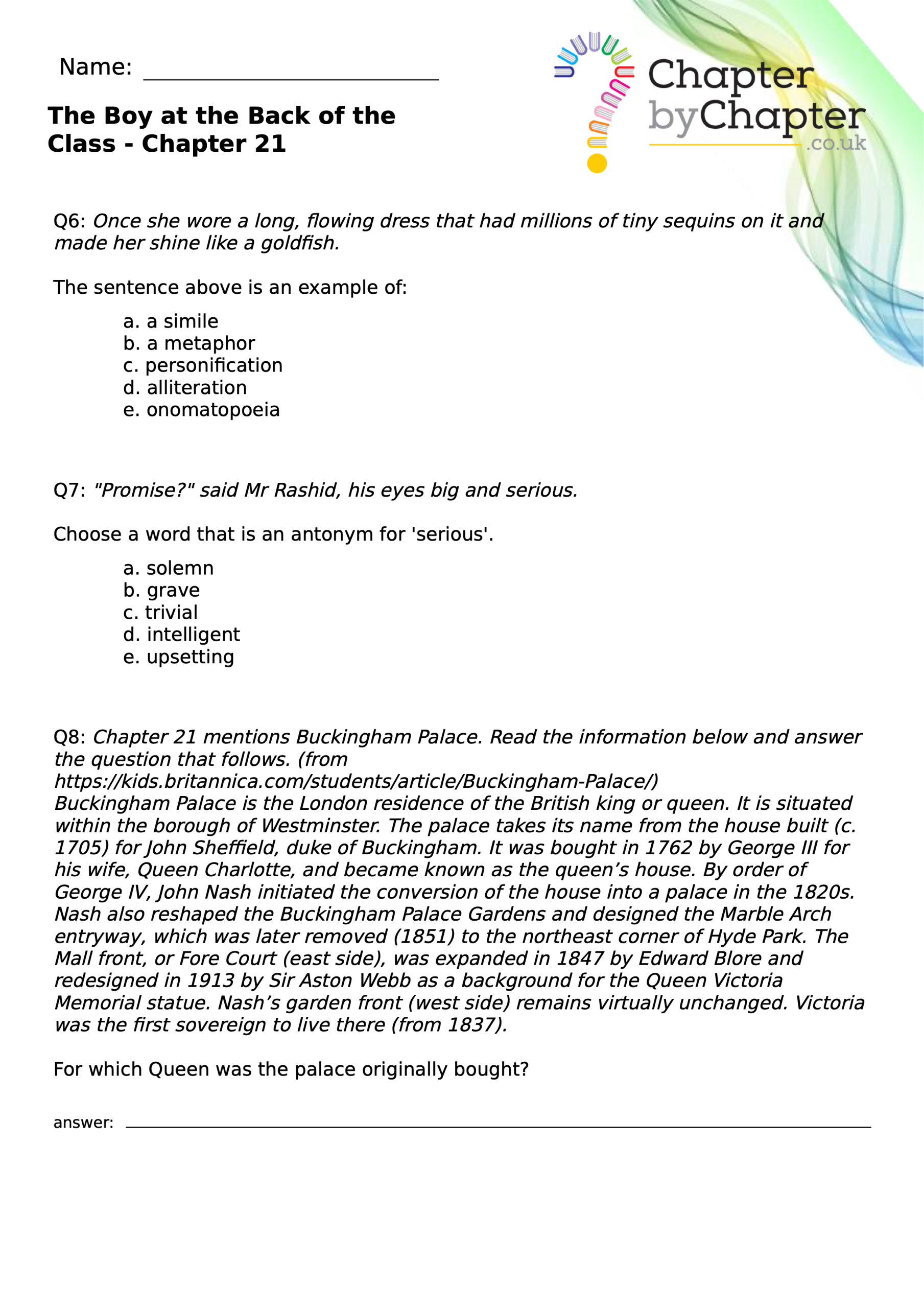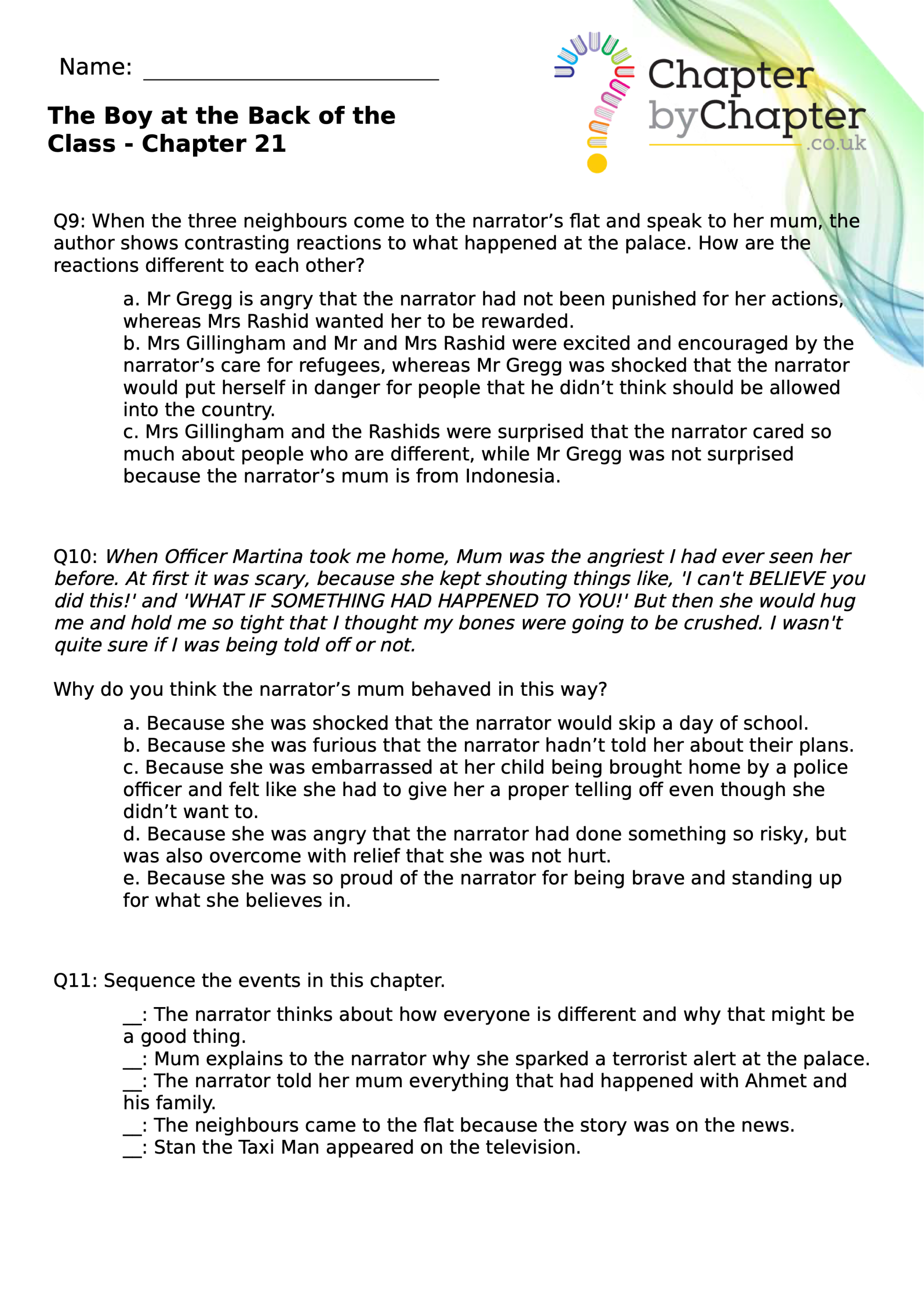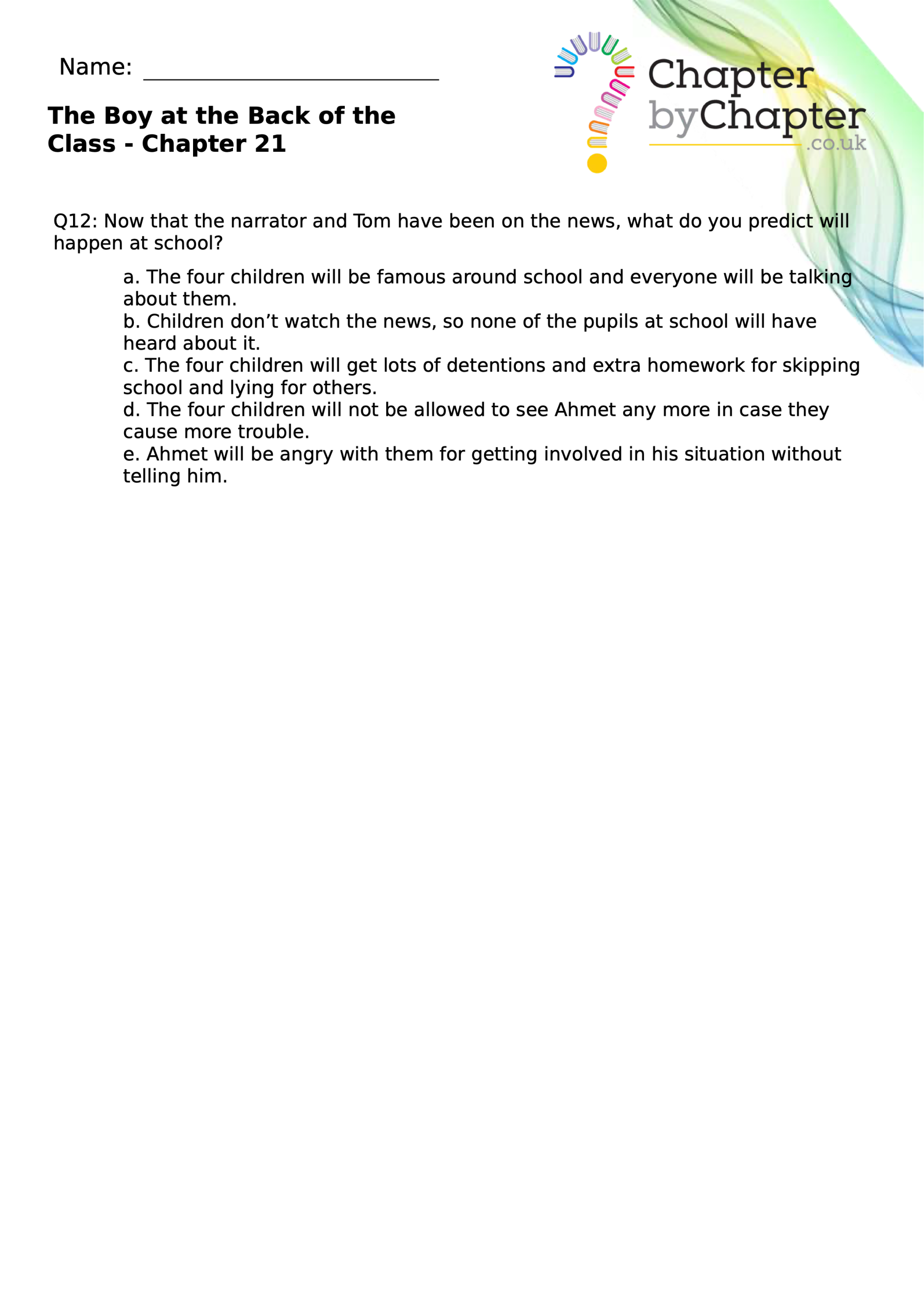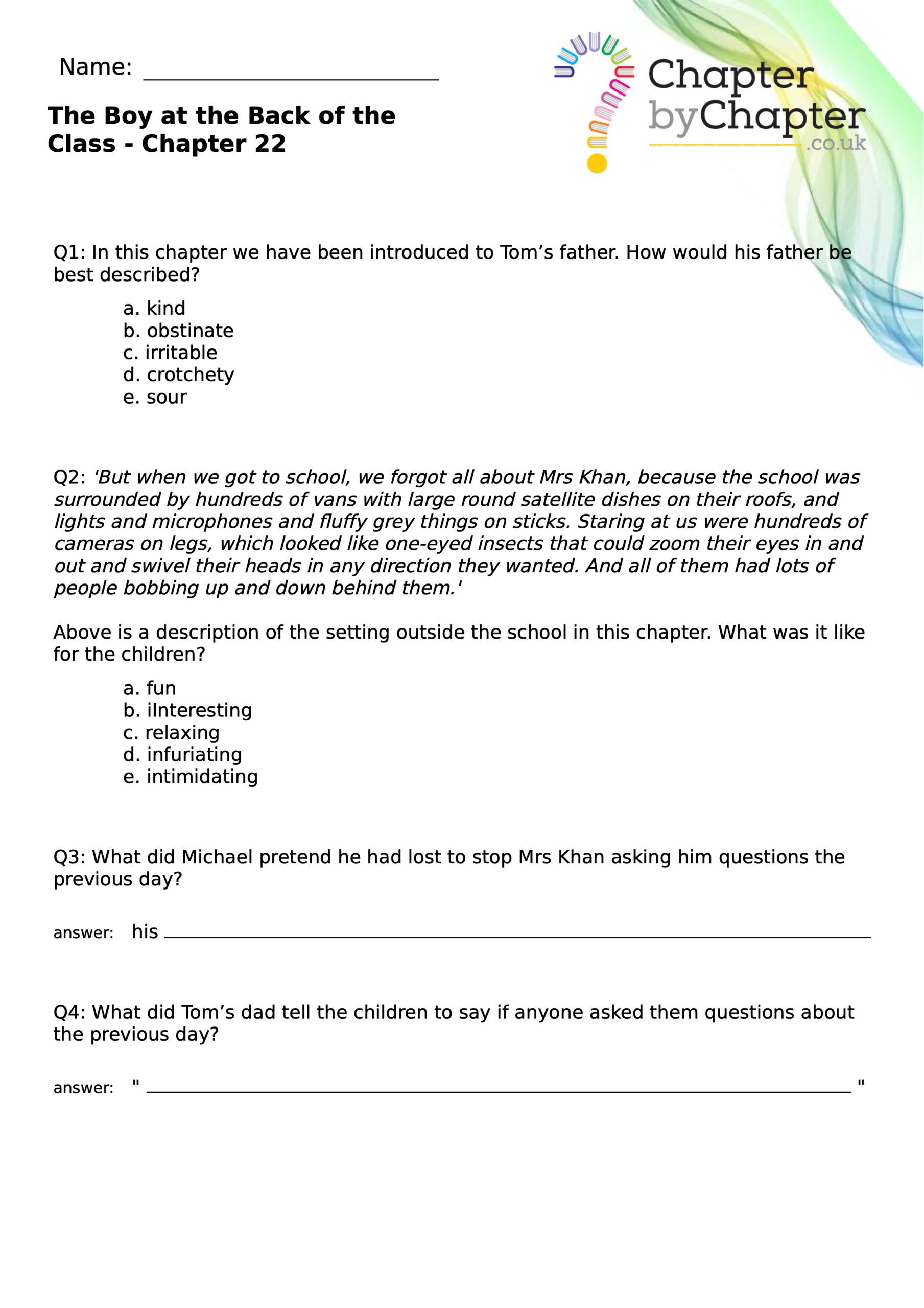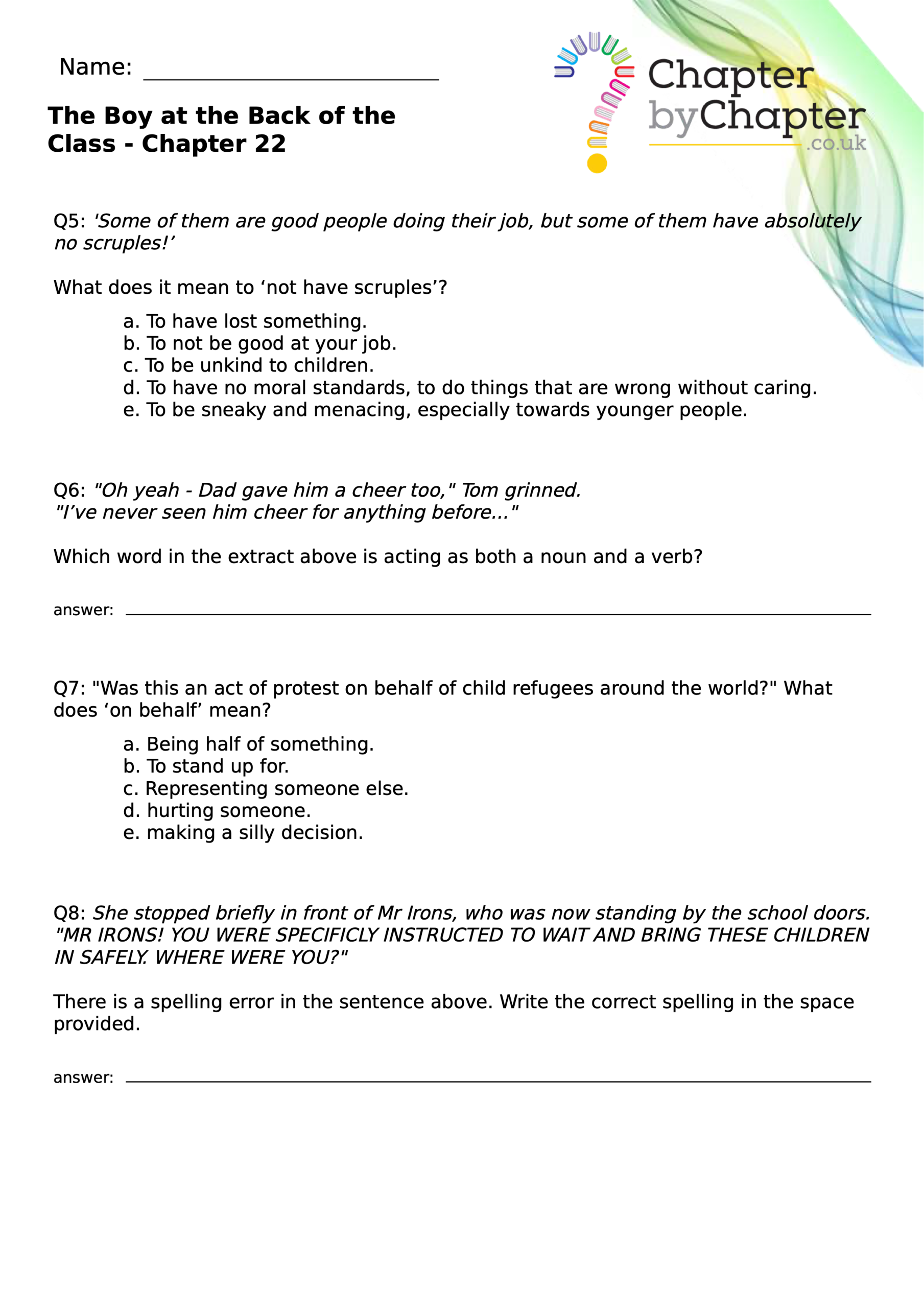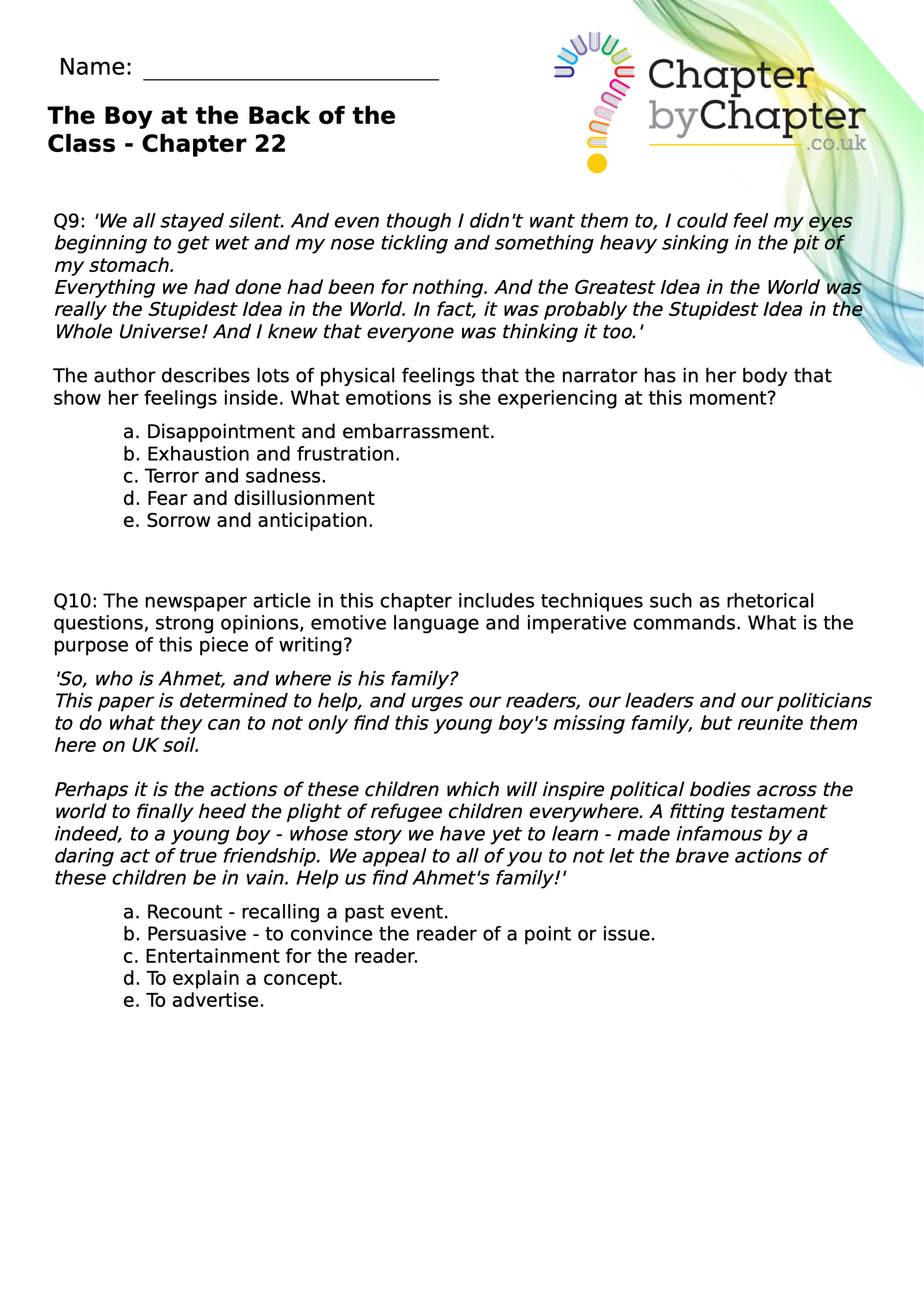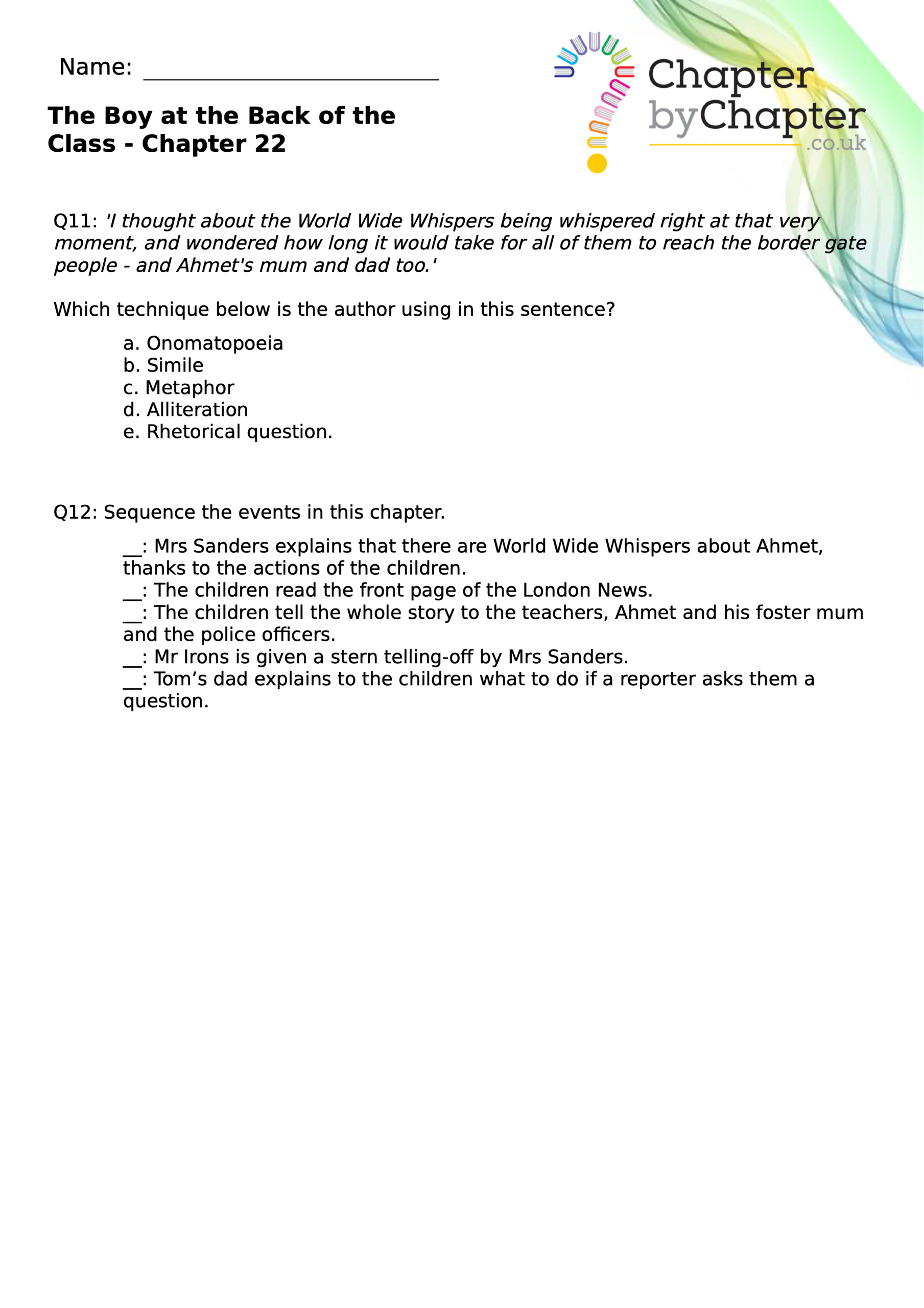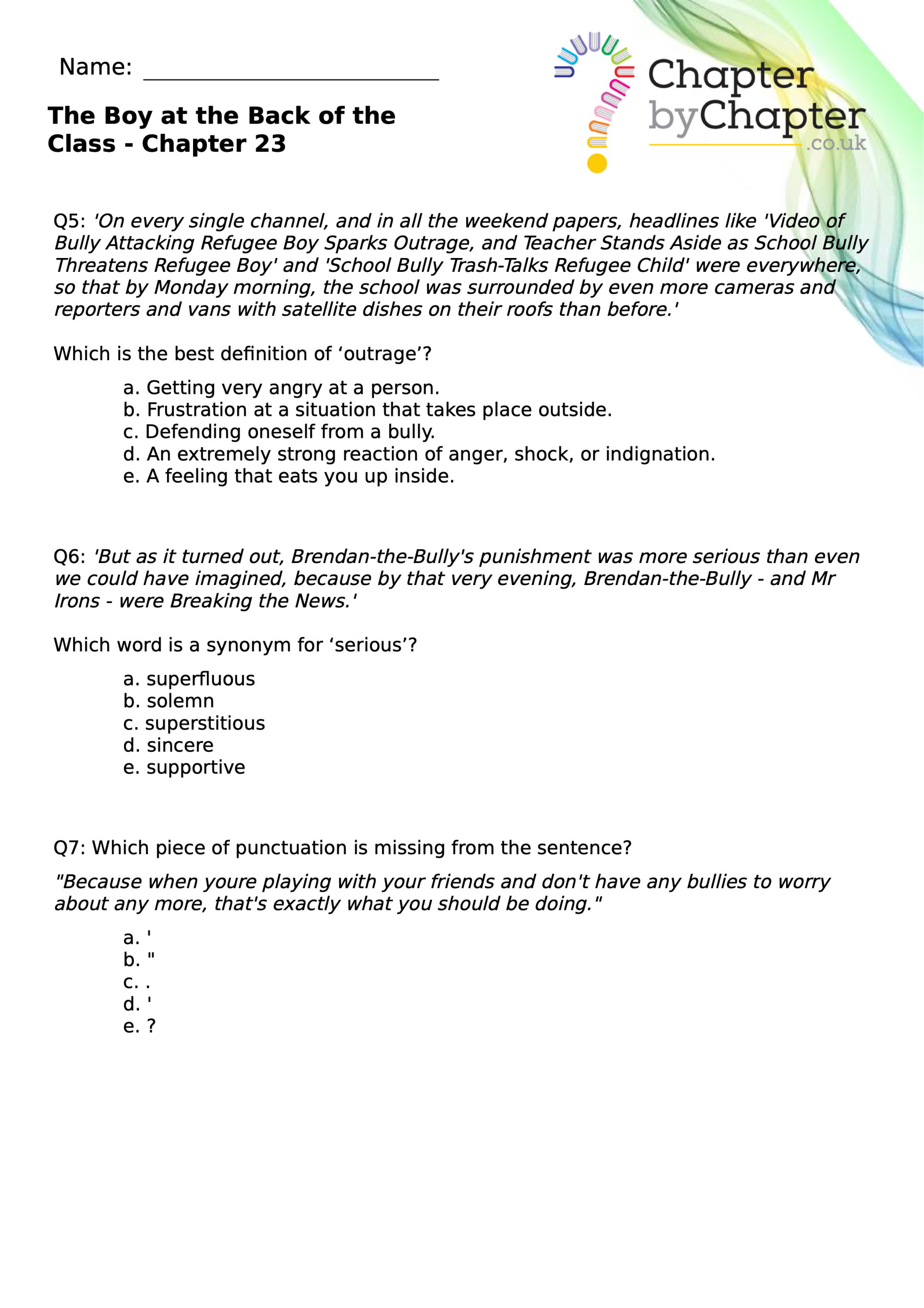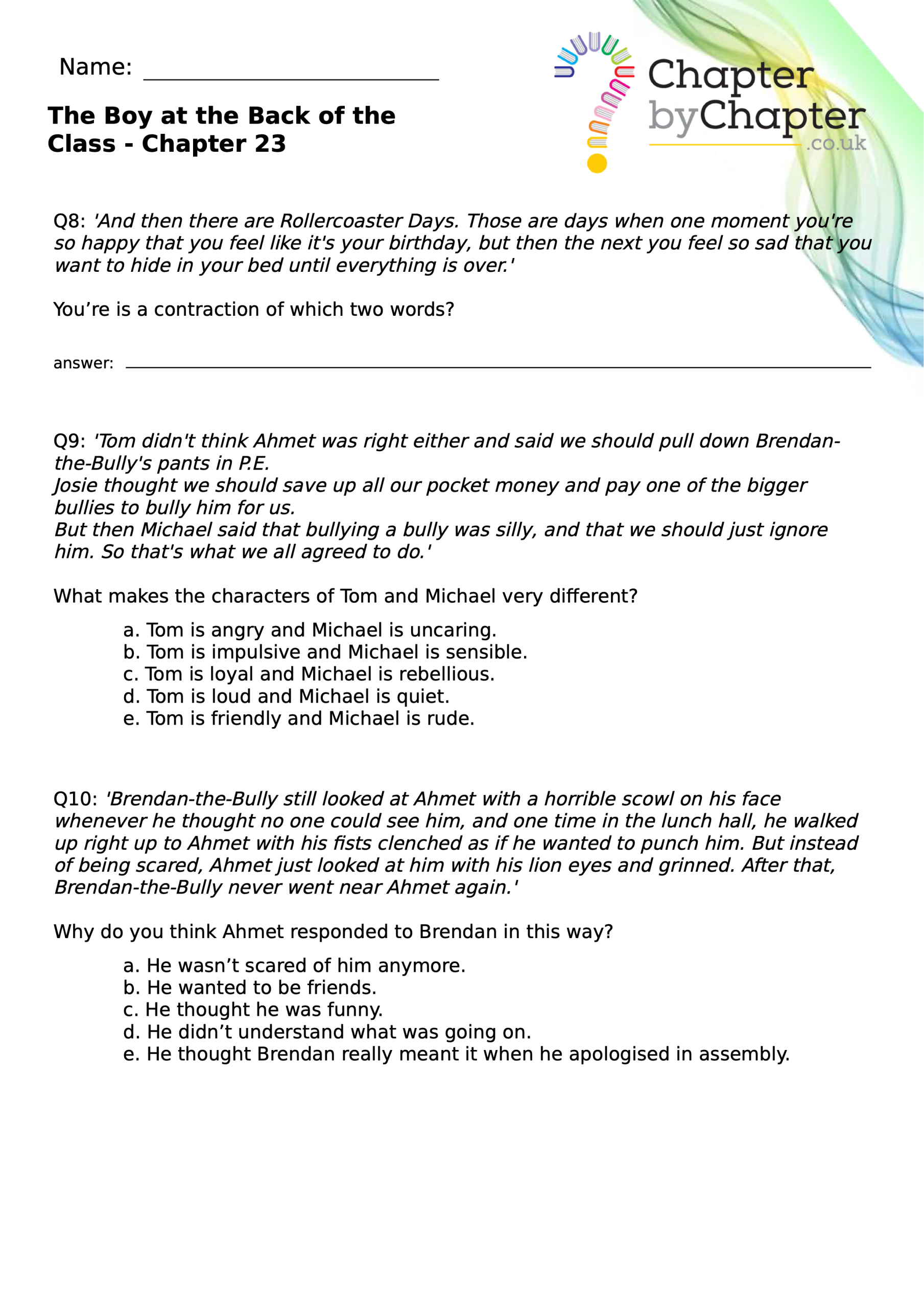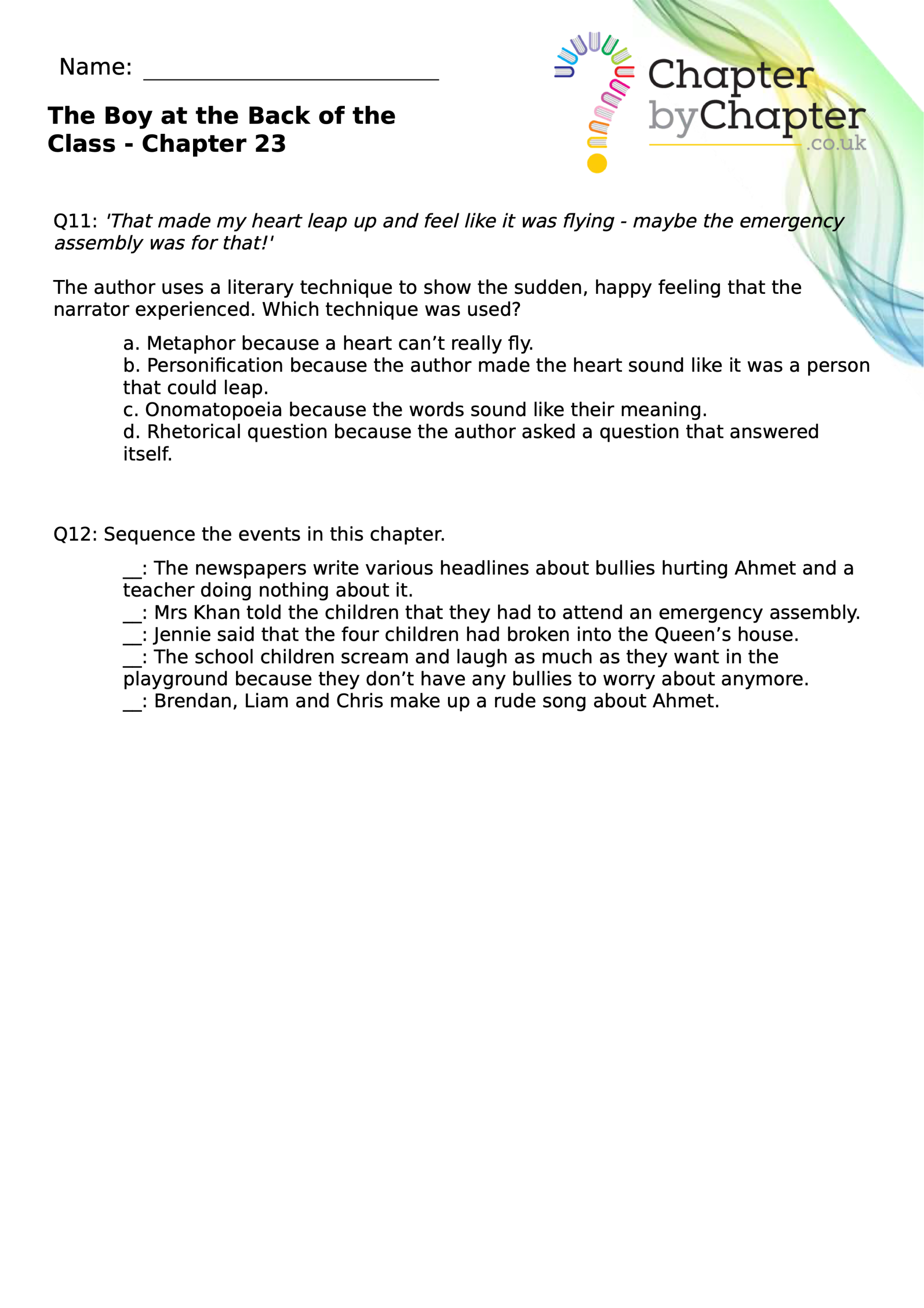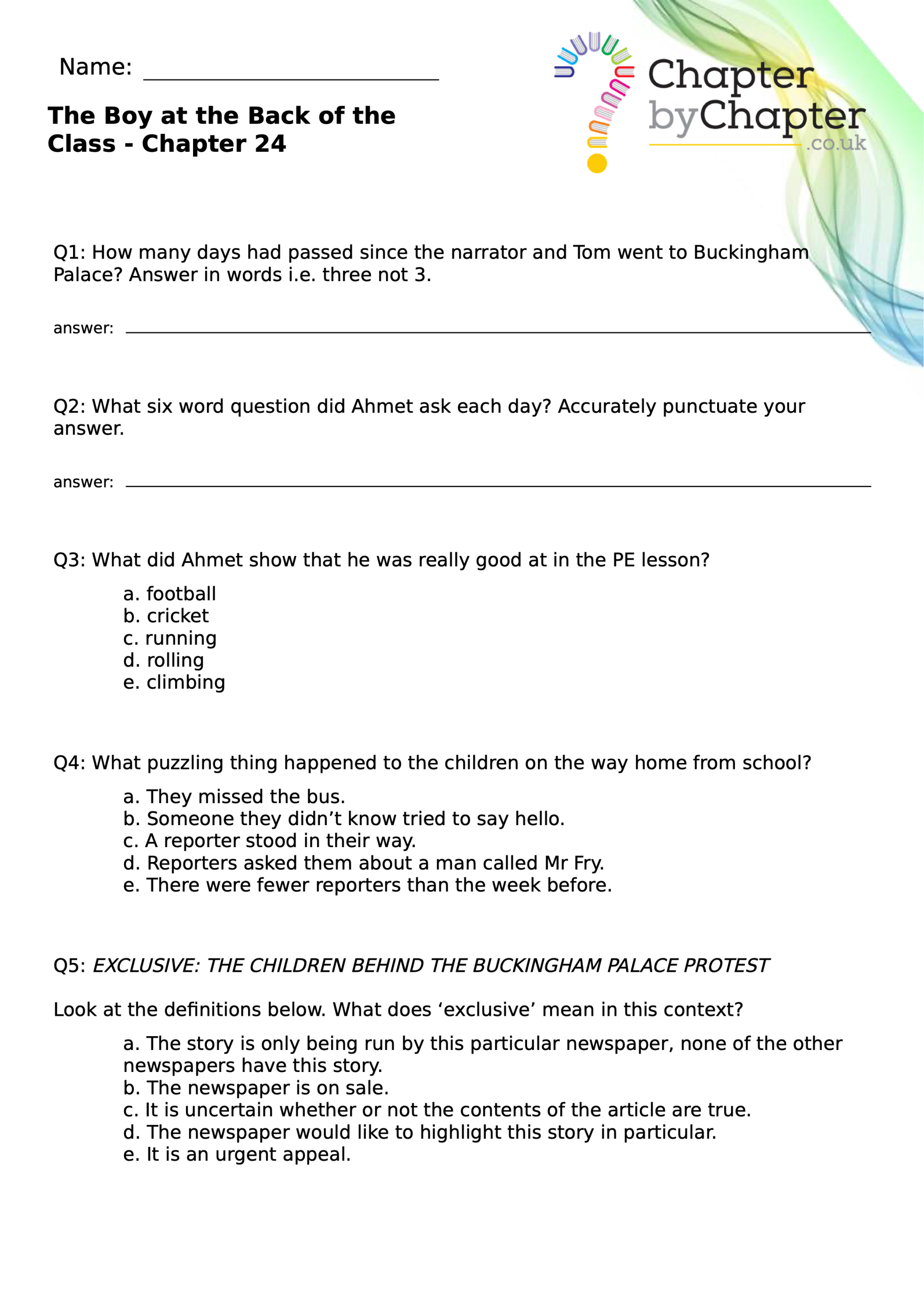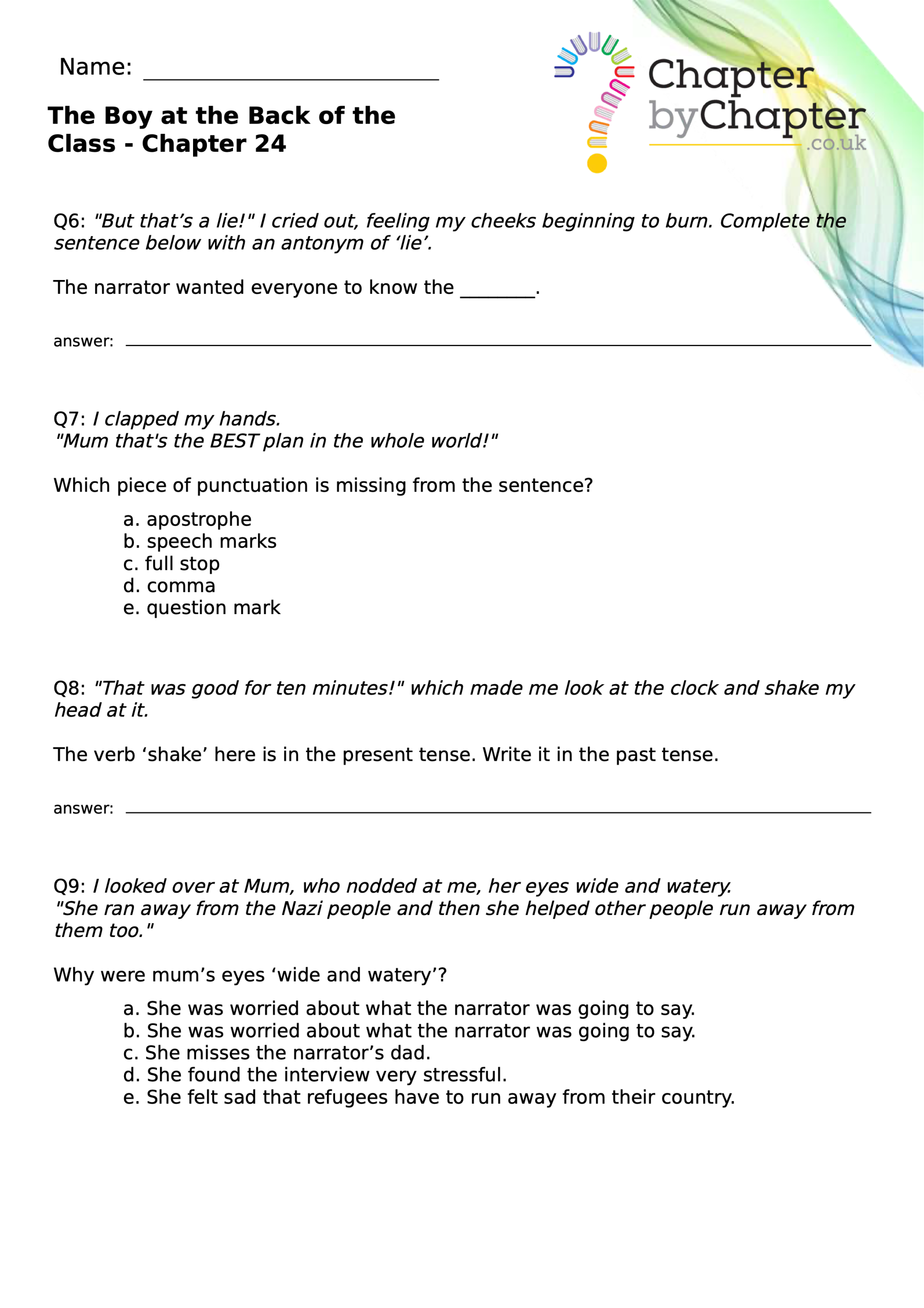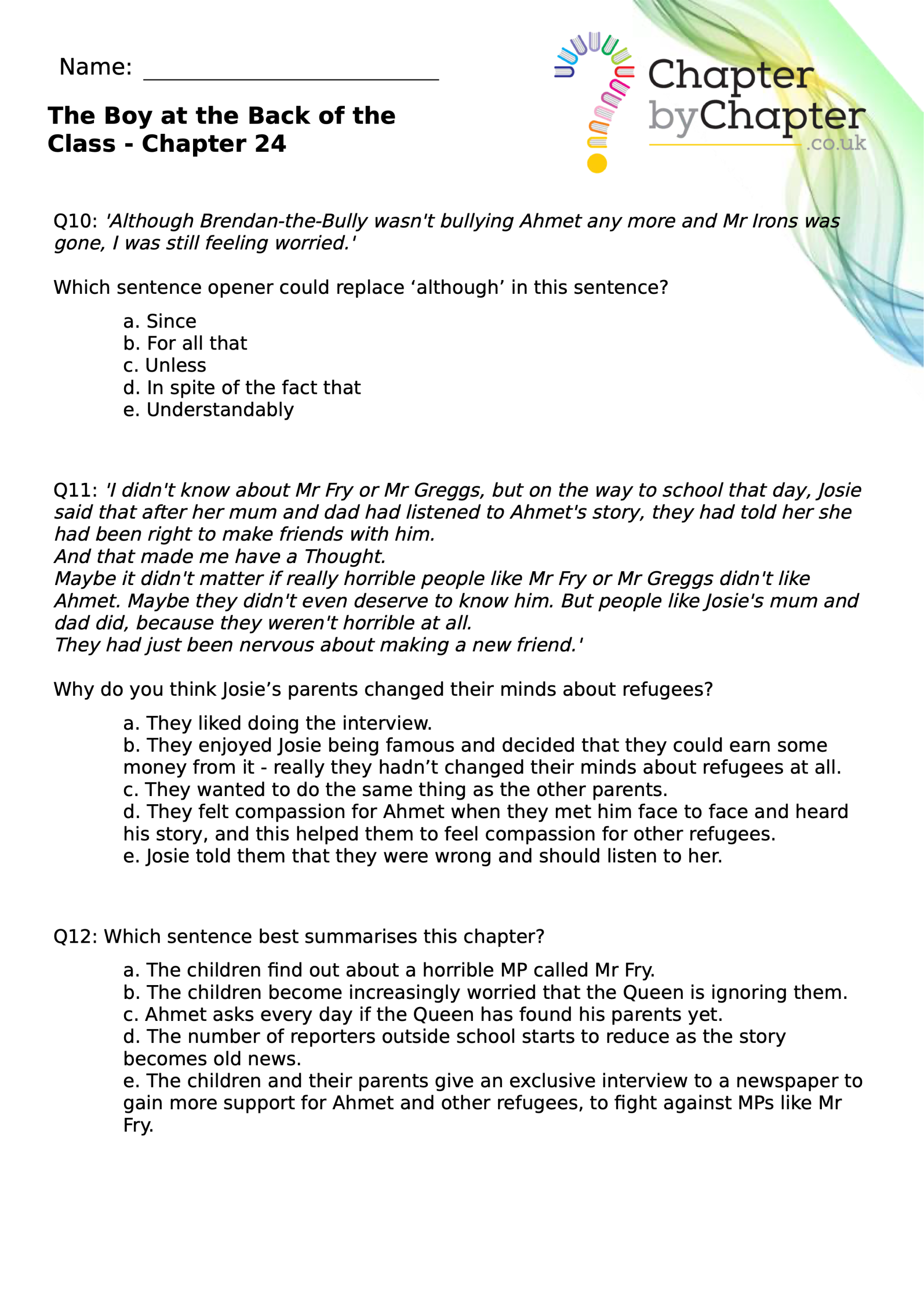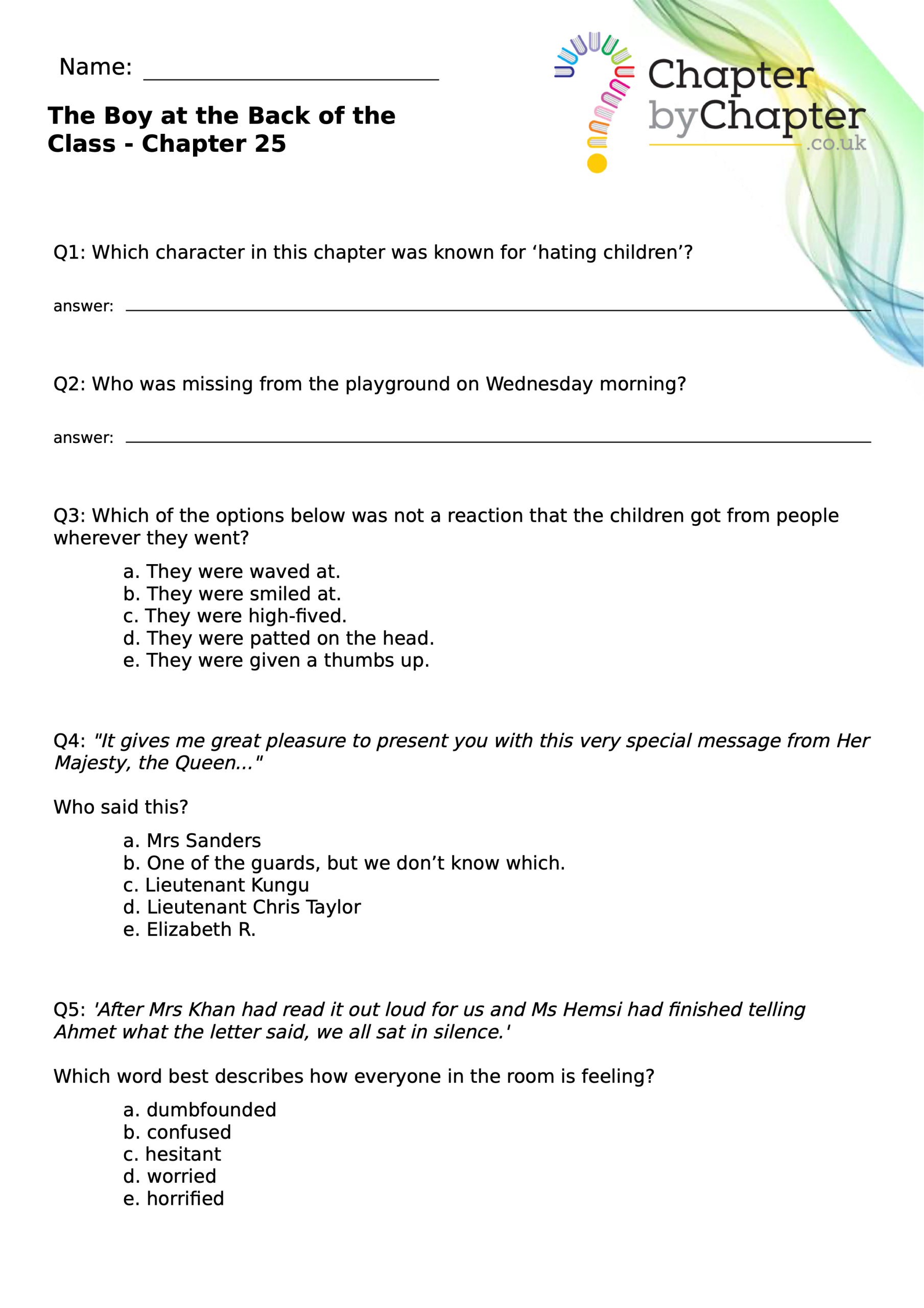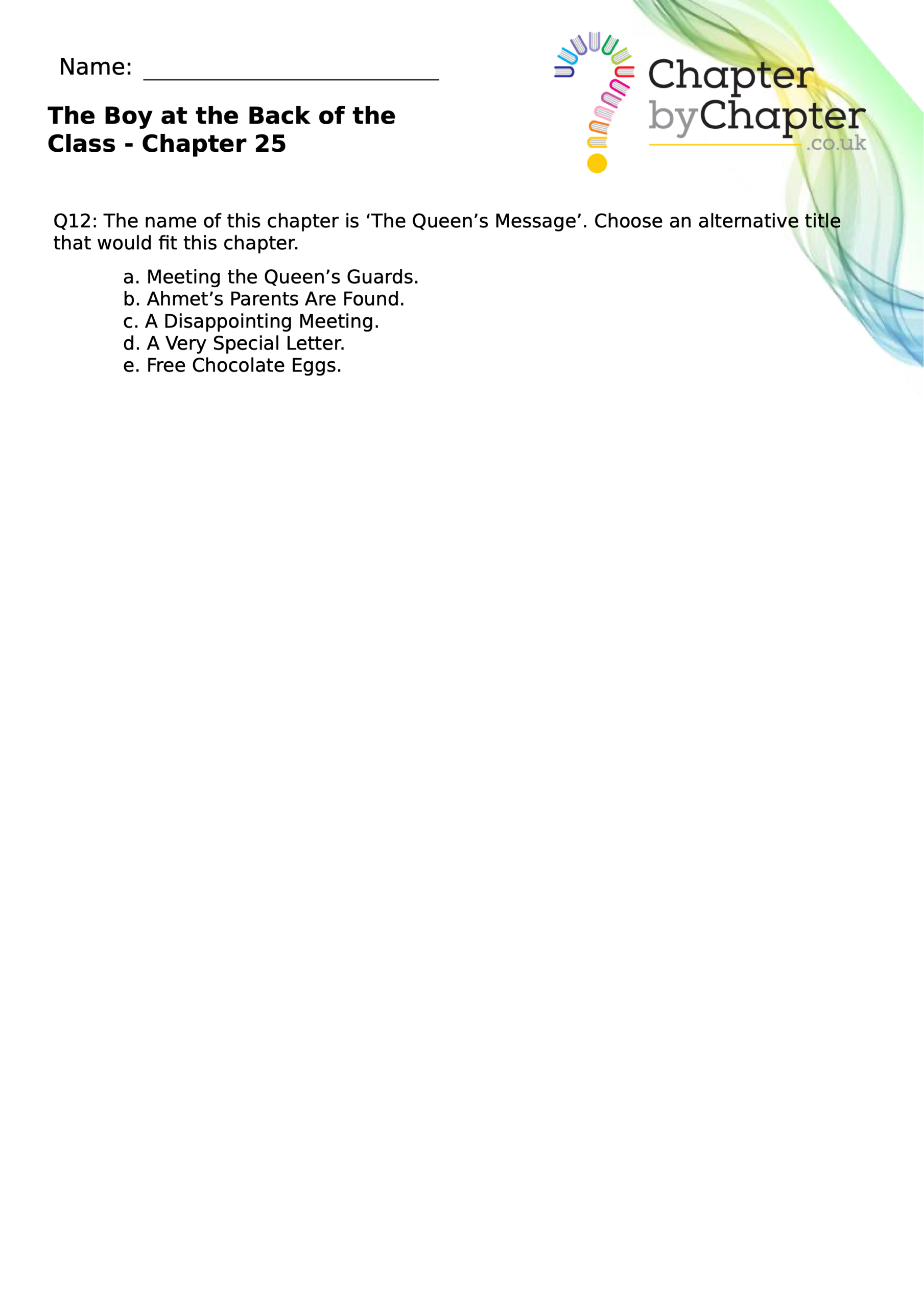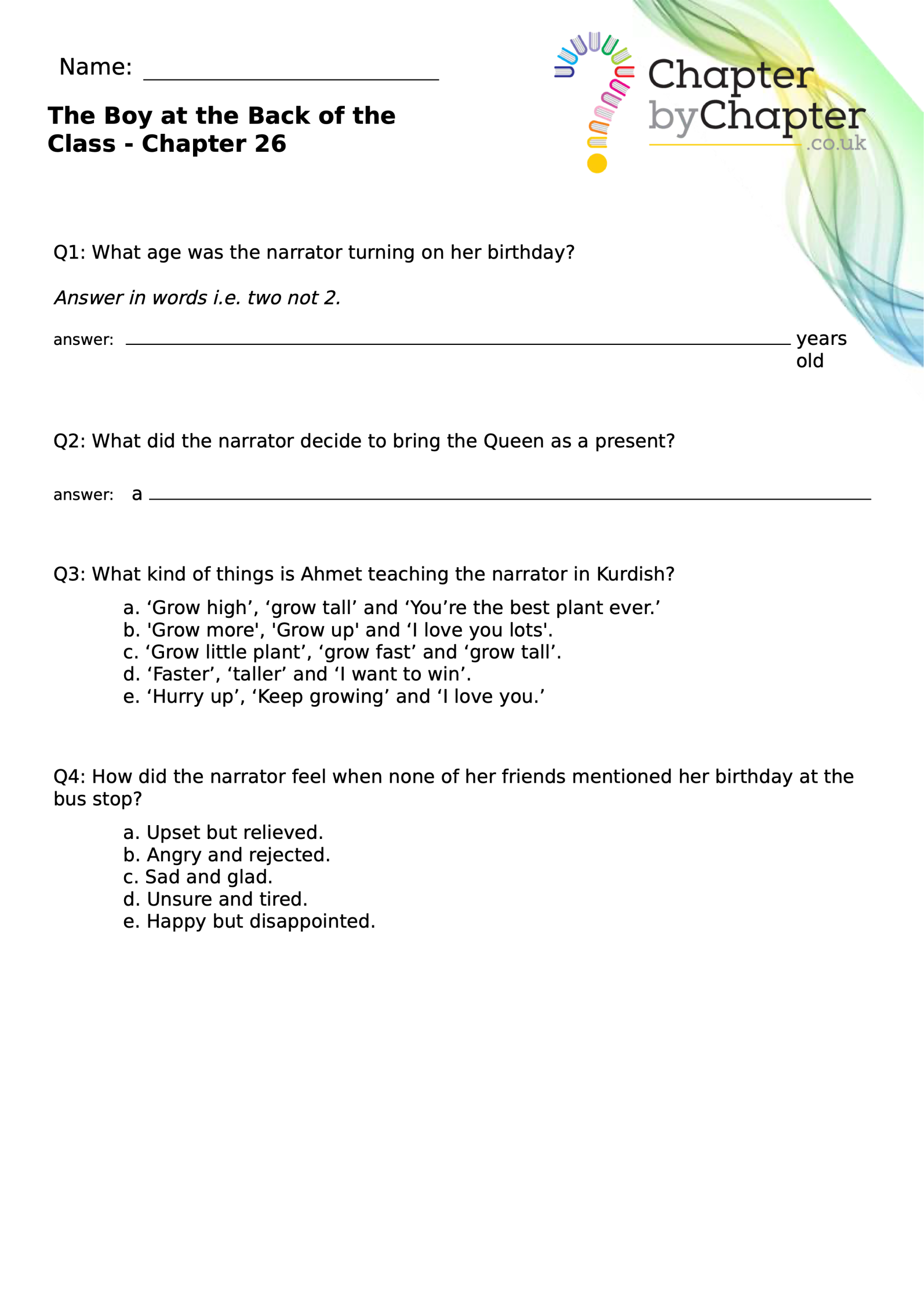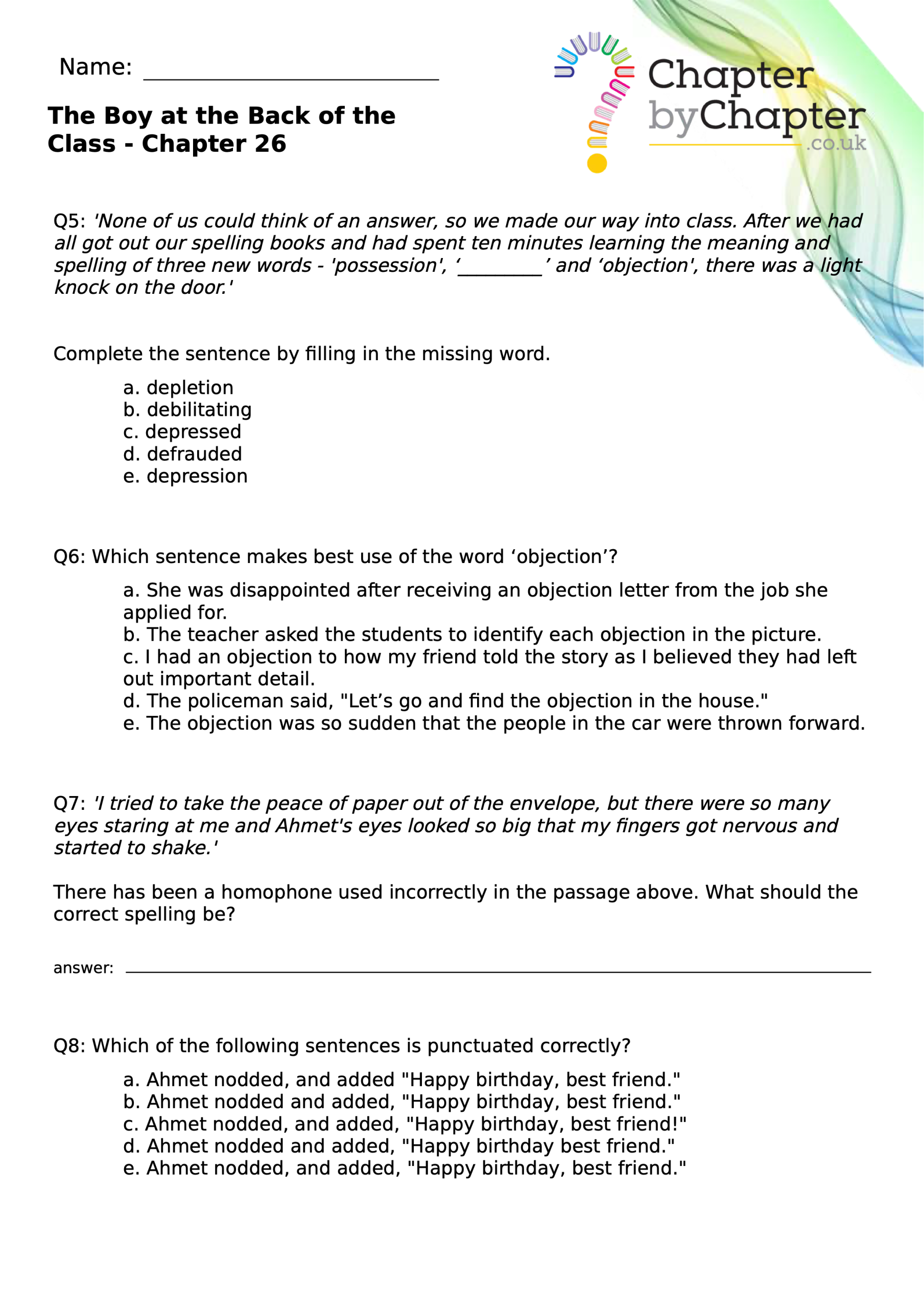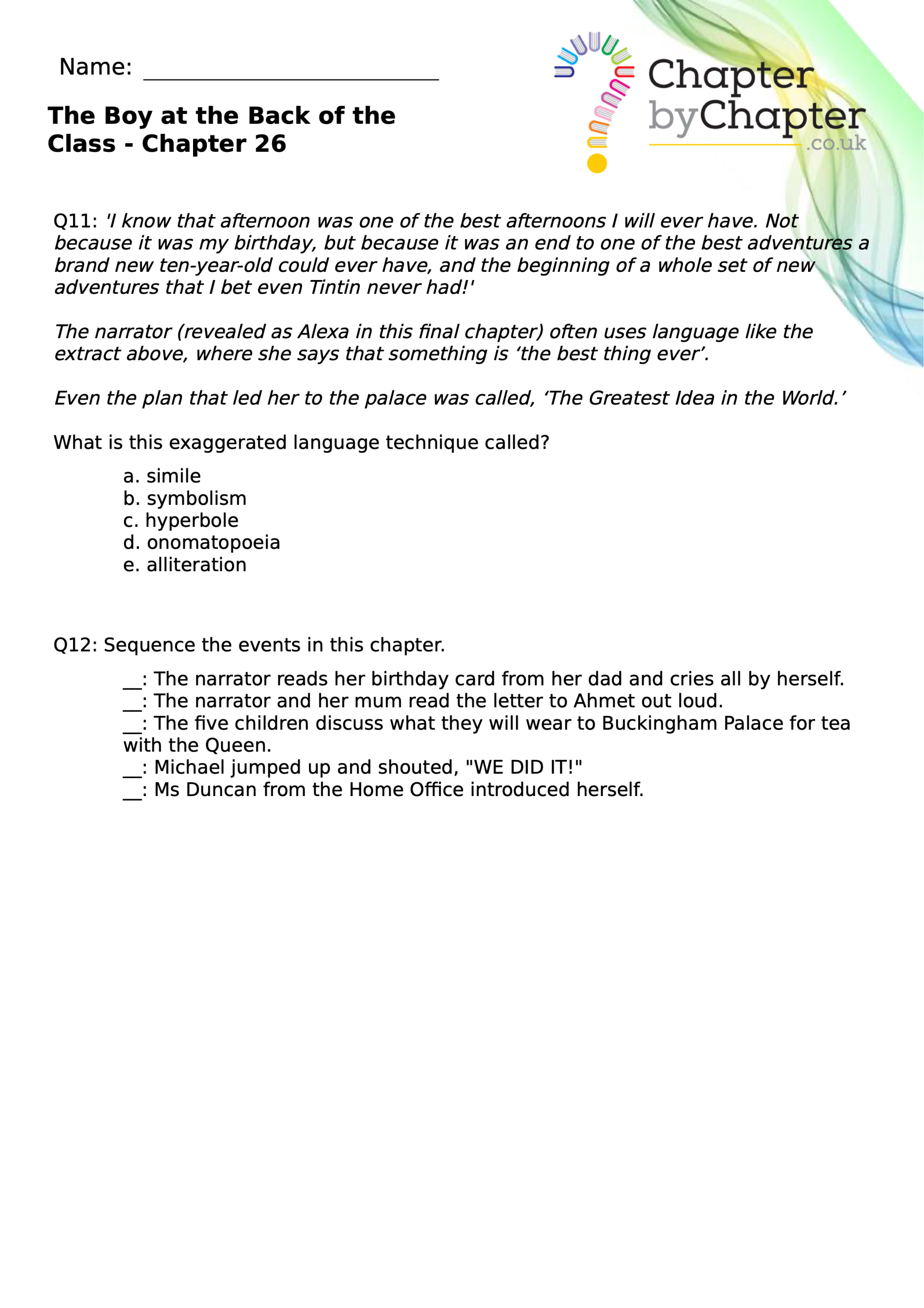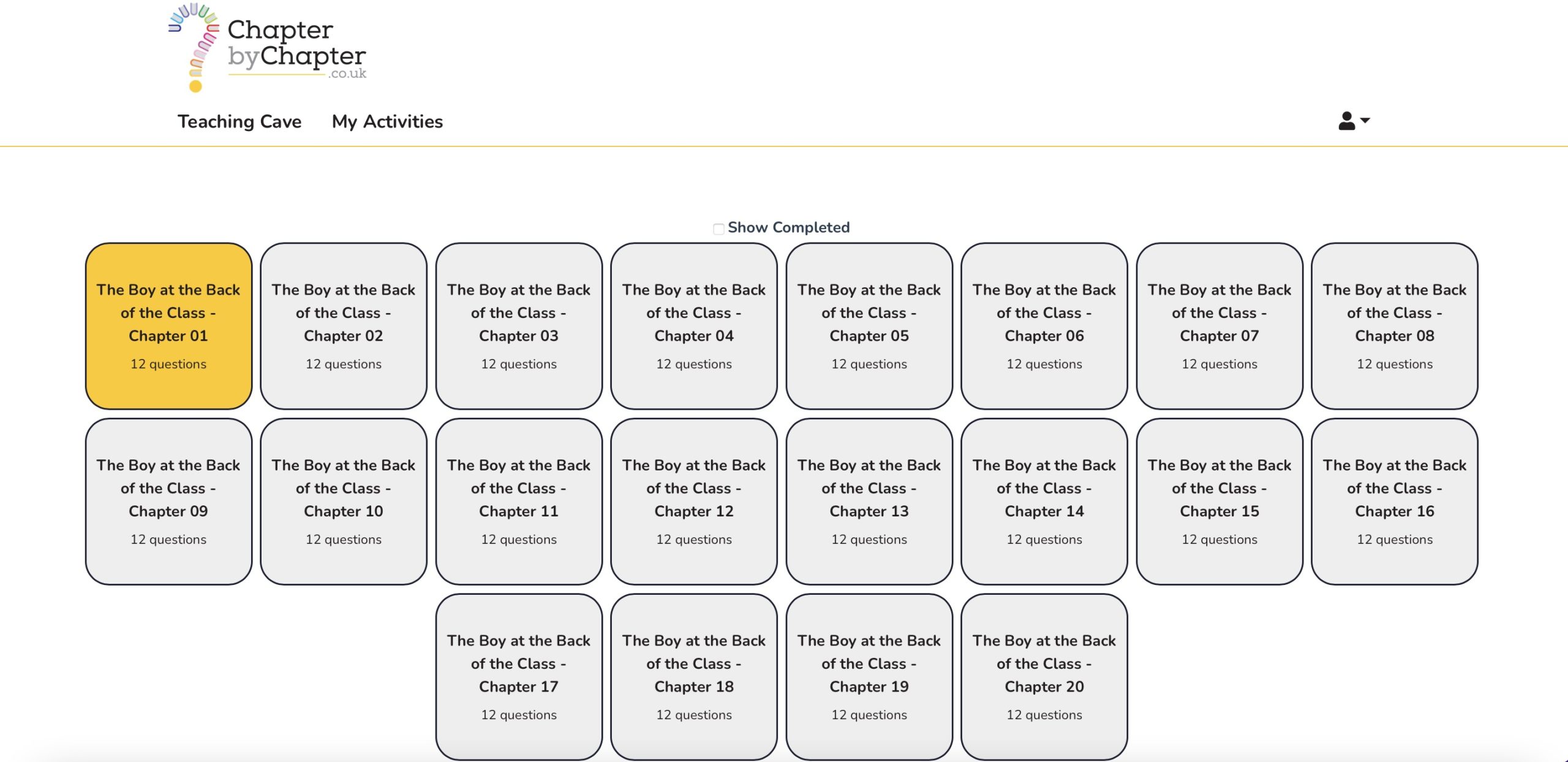The Boy at the Back of the Class
The Boy at the Back of the Class
In “The Boy at the Back of the Class,” readers embark on a heartwarming journey through the eyes of a group of classmates who befriend a new student, Ahmet, a Syrian refugee. Told with a blend of innocence and wisdom, the story unveils the power of empathy, friendship, and hope in the face of adversity.
It focuses on the narrative’s subtle nuances: the whispers of the classroom walls, the secrets shared in lunchboxes, and the whispered dreams beneath the desks. It’s a tale not just of Ahmet’s journey but of the collective journey of a classroom community learning the true meaning of compassion and acceptance.
Through the lens of childhood innocence, the story tackles complex themes such as displacement, prejudice, and the resilience of the human spirit. It’s not just about Ahmet’s integration into a new culture; it’s about the transformative impact he has on those around him, igniting a ripple effect of understanding and kindness.
“The Boy at the Back of the Class” is more than just a story; it’s a reminder that small acts of kindness can change the world, one friendship at a time.
Chapter 1
In Chapter 1 of “The Boy at the Back of the Class,” we are introduced to the narrator, a young girl attending a London school. She describes the arrival of a new boy in her class, who sits silently at the back. The boy remains mysterious, as his classmates, including the narrator, speculate about his background and the reasons for his reserved behavior. Despite initial curiosity, the children are discouraged from interacting with him by their teacher, Mrs. Khan, who seems wary of the new student. However, the narrator feels drawn to the boy and decides to befriend him, sparking a series of adventures as she attempts to uncover his story and help him feel welcome.
Chapter 2
In Chapter 2 of “The Boy at the Back of the Class,” the narrator continues her quest to befriend the new boy in her class. She learns that his name is Ahmet and that he is a refugee from Syria, having fled the war with his family. Despite feeling nervous about approaching him, the narrator is determined to make Ahmet feel welcome and included in their school community. She and her friends devise a plan to help Ahmet by gathering donations and organizing a welcoming party. Their efforts reflect a genuine desire to offer support and friendship to Ahmet during a challenging time in his life.
As the chapter unfolds, the narrator provides glimpses into Ahmet’s experiences as a refugee, shedding light on the hardships he and his family have faced. Through her interactions with Ahmet, the narrator learns about his love for his missing sister and his hopes for reuniting with her one day. The chapter highlights themes of empathy, compassion, and the importance of standing up for others, as the narrator and her friends work together to create a sense of belonging for Ahmet in their school and community.
Chapter 3
Chapter 3 of “The Boy at the Back of the Class” delves deeper into Ahmet’s backstory and the challenges he faces as a refugee. The narrator and her friends continue their efforts to befriend Ahmet, despite encountering resistance from some of their classmates. They learn more about Ahmet’s journey from Syria, including the heartbreaking loss of his parents and his separation from his sister during their escape. Through their conversations with Ahmet, the children begin to understand the trauma he has endured and the importance of offering him support and friendship.
As the chapter progresses, the narrator and her friends encounter obstacles in their mission to help Ahmet. Some of their classmates express prejudice and hostility towards Ahmet, reflecting wider societal attitudes towards refugees. However, the narrator and her friends remain determined to stand up for Ahmet and challenge these prejudices.
Chapter 4
The protagonist’s father always said that to get what you want, you must keep trying, and having always had what he wanted, he must have known the effort it takes. Inspired by this, the protagonist is determined to befriend Ahmet, the new boy, despite his seclusion during school hours. For two weeks, the protagonist waits after school, giving Ahmet sweets and trying to talk to him, but Ahmet never responds. Suspecting Ahmet might be allergic to sweets, the protagonist switches to giving him fruit, presenting a special orange decorated with a smiley face and a sticker from Tom.
One day, the protagonist and friends overhear adults discussing Ahmet, revealing he is a refugee and sparking curiosity and concern among them. Despite overhearing some negative opinions, the protagonist remains determined to befriend Ahmet. When he finally presents the special orange, Ahmet’s eyes widen, and he acknowledges the gesture with a nod, indicating a breakthrough in their budding friendship. This moment gives the protagonist hope that their efforts to connect with Ahmet are beginning to succeed.
Chapter 5
When the protagonist’s mother returns home late from work at the library, they stay up to ask her about refugees, driven by curiosity about the new boy, Ahmet. The protagonist’s friends had shared various confusing ideas about refugees, but they trust their mother to have the right answers because she works in a library and knows a lot. Their mother explains that refugees are people forced to leave their homes due to dangerous situations, such as wars, and that children like Ahmet have had to travel far to find safety. She describes the hardships refugees face and emphasizes that they didn’t do anything wrong; they’re just fleeing from bullies who destroy their homes and lives.
Reflecting on the new boy’s situation, the protagonist feels sympathy for Ahmet and resolves to be his friend, understanding why he might need time and space. Before bed, they make a list of eleven questions to help understand Ahmet better and build a friendship with him. The protagonist appreciates their mother’s honesty and support, recognizing how she always answers their questions and encourages them to seek knowledge. This moment reinforces the protagonist’s determination to connect with Ahmet, seeing it as part of their personal adventure in understanding and compassion.
Chapter 6
The next day at school, the narrator tells Josie, Tom, and Michael about the new boy, Ahmet, and the struggles he faced as a refugee. While some of their parents had warned them about refugees, others had encouraged them to be kind. The children decided to give Ahmet gifts, and during class, they met Ms Hemsi, a new assistant who would be helping Ahmet. Ms Hemsi explained that Ahmet was from Syria and spoke Kurdish, and the children eagerly offered their friendship and gifts to Ahmet.
At break time, they invited Ahmet to play football, but Brendan-the-Bully tried to intimidate him. Ms Hemsi intervened, ensuring Brendan backed down. The children and Ahmet enjoyed playing football together, and Ahmet seemed genuinely happy. However, the narrator felt a lingering worry about Brendan’s hostility. After school, they gave Ahmet a small gift and walked to the bus stop, feeling proud of standing up for their new friend but aware that the bullying might continue.
Chapter 7
The next morning, Mrs. Khan let Ahmet join the playground for the first time, with Tom assigned to look after him. Ahmet quickly impressed everyone with his football skills, but Brendan-the-Bully interrupted the game and lied to Mr. Irons, who then unfairly gave detentions to Ahmet, the narrator, and Michael, and confiscated their ball.
At lunch, Ahmet stayed with Ms. Hemsi to avoid Brendan. After school, the children sought help from Mrs. Khan instead of attending detention. Mrs. Khan retrieved Josie’s football from Mr. Irons, who remained hostile. Despite this, the children felt supported by Mrs. Khan and were careful to avoid further trouble, ensuring Ahmet felt more welcome.
Chapter 8
Print our question set aimed at KS2 linked to Chapter 8 of The Boy at the Back of the Class.
Questions have been created by a current KS2 teacher, not AI and include: Retrieval, sequencing, spelling, punctuation, grammar, authorial technique, inference and other styles of questions.
Chapter 9
Print our question set aimed at KS2 linked to Chapter 9 of The Boy at the Back of the Class.
Did you know that our comprehensions for each chapter hit a variety of areas within the literacy curriculum and bar the four retrieval questions at the beginning, do not follow the same format?
This means your children are being challenged by a wider range of curriculum areas and literacy concepts.
Chapter 10
Print our question set aimed at KS2 linked to Chapter 10 of The Boy at the Back of the Class.
Chapter 11
Print our question set aimed at KS2 linked to Chapter 11 of The Boy at the Back of the Class.
Our questions sets for each chapter of the book get progressively more challenging as the children work through them. For example…
Questions 1-4 are generally retrieval style questions.
Questions 5-8 focus on SPAG.
Questions 9-12 focus on all content within the chapter and also touch on areas such as summarising, authorial technique, sequencing the events, predictions and more challenging literacy concepts to challenge all children.
Chapter 12
Print our question set aimed at KS2 linked to Chapter 12 of The Boy at the Back of the Class.
Chapter 13
Print our question set aimed at KS2 linked to Chapter 13 of The Boy at the Back of the Class.
Chapter 14
Print our question set aimed at KS2 linked to Chapter 14 of The Boy at the Back of the Class.
Did you know that our answer sheets are available online? Simply login to your account to access them.
Chapter 15
Print our question set aimed at KS2 linked to Chapter 15 of The Boy at the Back of the Class.
Chapter 16
Print our question set aimed at KS2 linked to Chapter 16 of The Boy at the Back of the Class.
Chapter 17
Print our question set aimed at KS2 linked to Chapter 17 of The Boy at the Back of the Class.
Our worksheets have been created for KS2 and follow a 7-Chapter cycle in terms of content. This means that you child didn’t grasp the simile, metaphor, personification question, they will be challenged by it again later in another question set.
Chapter 18
Print our question set aimed at KS2 linked to Chapter 18 of The Boy at the Back of the Class.
Sample Question:
Q10: ‘There were at least a million people all dressed in suits, rushing around trying to get through the barriers. They looked angry and red in the face, and there was lots of tutting and head-shaking. I had never been to the train station when it was so busy before, and I didn’t like it. It made my head feel hot and fuzzy.’
How does this description of the tube station at rush hour give us an insight into how the narrator is feeling?
a. The noise, amount of people and pressure to move quickly shows that the narrator is feeling overwhelmed and stressed.
b. The angry people, tutting and head shaking shows that the narrator is feeling unsure about their plan to meet the Queen.
c. The amount of people around shows how the narrator is not used to being in the busy city.
d. The fact that the narrator felt hot and fuzzy shows us that they are becoming unwell.
e. The amount of adults and lack of children makes the narrator feel alone and scared.
Chapter 19
This is a comprehension aimed at KS2 and has 12 questions linked to Chapter 19 of The Boy at the Back of the Class.
Chapter 20
Print our question set aimed at KS2 linked to Chapter 20 of The Boy at the Back of the Class.
Chapter 21
Print our question set aimed at KS2 linked to Chapter 21 of The Boy at the Back of the Class.
We have designed these worksheets to be used as classwork or homework after reading the chapter independently or as part of whole class reading.
I read with my class in the afternoon and then give the questions home. You can also photocopy the pages of the text and send them home physically or digitally too.
Chapter 22
This comprehension question set is aimed at UKS2 classes and is linked to Chapter 22 of book.
Chapter 23
This printable resource covers Chapter 23 of the text and the questions include a range of single answer and multiple choice styles of questions.
Chapter 24
Print our question set aimed at KS2 linked to Chapter 24 of The Boy at the Back of the Class.
Chapter 25
Our comprehensions in this pack are targeted towards KS2 classes and this one is specifically linked to Chapter 25 of The Boy at the Back of the Class.
The questions get progressively more challenging as they progress to challenge all abilities levels within your class and help you by differentiating the activity for your planning and reduce workload.
Chapter 26
Print our question set aimed at KS2 linked to Chapter 26 of The Boy at the Back of the Class.
Overview
Chapters Overview
In The Boy at the Back of the Class we have created 26 question sets.
Each set consists of:
– 4 retrieval questions
– 4 SPAG questions
– 4 Deeper questions (authorial technique, inference, sequencing, summarising, similes, metaphors etc.)
How does our website work?
1. You will assign each child in your class the questions of a particular chapter.
2. They will login and complete the questions online.
3. You will view the ‘Results’ section and see how each child did.
Results
Green means that the child got the question right first time.
Orange means that the child got it right but it took a few attempts – a number will be displayed inside to show how many attempts.
Red means that the child didn’t get the question correct – a number will be inside the red box to show how many failed attempts.
Interpreting the Results
Select a range of chapter question sets in the results section and choose a child. Next you will be able to see all completed activities and look for patterns, areas of strength and areas for improvement.

